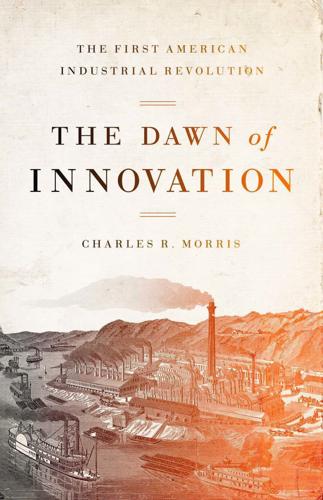
The Dawn of Innovation: The First American Industrial Revolution
by
Charles R. Morris
Published 1 Jan 2012
He had assured Wolcott, who had been embarrassed by his nonperformance, that “nothing shall induce me to shrink from the task or for a moment divert my attention from its final accomplishment.”18 But he really meant “unless something better comes along.” In the fall of 1801, his new advances in hand, he got word of the possibility of a lucrative settlement on the cotton gin patent. Whitney left for the southlands late in the year, did not return until May (long after the gin business was over), and took similar absences for the same reason over the next several years.19 A few years after that, it seems, he finally got serious, mostly giving up on the cotton gin litigation and devoting his formidable intelligence and mechanical gifts more or less full-time to the business of producing arms. While there is little evidence of his making any mechanical breakthroughs, he was a good manager and quickly got to a steady-state production of about 2,000 muskets a year.
…
APPENDIX Did Eli Whitney Invent the Cotton Gin? ANGELA LAKWETE IS AN AUBURN UNIVERSITY HISTORIAN WHO HAS devoted a career to the antebellum cotton industry. In a recent book, she argues that Whitney’s gin was of only minor importance in generating the explosive growth of the King Cotton plantation culture in the South; for as she concludes, “ginning was not a bottleneck as the nineteenth century dawned.”1 But although she never makes the specific charge, Lakwete also lays out an impressive prima facie case that, rather than invent the new gin, Whitney and Phineas Miller, his cotton gin partner, stole a gin design and patented it as their own.
…
Whitney did not marry until he was fifty-one, nearly a decade after Greene’s death. 3 Ibid., 55. 4 Ibid., 51, 56. 5 Ibid., private communication. 6 Ibid., 56. 7 Ibid., 55. 8 Ibid., 69, 70. 9 Constance McLaughlin Green, Eli Whitney and the Birth of American Technology (Boston: Little, Brown, 1956), 48. 10 Eli Whitney, “Description of a New Invented Cotton Gin,” US Patent (X)72, copy of patent filed June 20, 1793, certified correct by James Madison, Secretary of State, November 25, 1903. 11 P. J. Federico, “Records of Eli Whitney’s Cotton Gin Patent,” Technology and Culture 1, no. 2 (Spring 1960): 168–176. (Quotes in the footnote are on 173.) Federico was examiner in chief of the United States Patent Office. 12 Whitney, “Description.” 13 Miller to Whitney, April 19, 1797; Whitney to Stebbins, November 27, 1798; Miller to Whitney, June 6, 1800, in Eli Whitney Correspondence, Yale University.
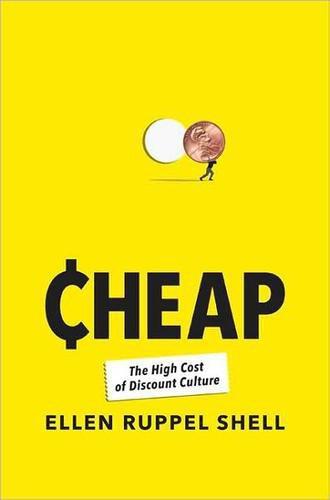
Cheap: The High Cost of Discount Culture
by
Ellen Ruppel Shell
Published 2 Jul 2009
World demand for fabric that was cheaper than linen and cooler than wool made cotton a very desirable commodity, accounting for more than 50 percent of all American exports by the middle of the nineteenth century. Once the gin made cleaning cotton fiber so cheap, the expectation grew that cotton itself would be cheap. The cotton gin reduced the labor required to extract and remove seeds, but planting and picking remained a distinctly human chore. To meet the expectation of low price, the farming and picking of cotton had to be cheap as well, and this meant cheap labor. There is no cheaper labor than the slave variety, and it makes sense that the cotton gin led to an emphatic boost to the slave trade. The American South was by then growing 60 percent of the world cotton supply, and nearly three-quarters of all slaves were involved in cotton production.
…
North, Simeon North, First Official Pistol Maker of the United States: A Memoir (Concord, N.H., 1913), 81. 10 led to an emphatic boost to the slave trade: The Eli Whitney legend has come under scrutiny over the past few years, and there is some dispute over the role of his gin in the transformation of the history of the South. Notably, historian Angela Lakwete, author of Inventing the Cotton Gin: Machine and Myth in Antebellum America (Baltimore, Md.: The Johns Hopkins University Press, 2003), argues persuasively that the “invention” of the cotton gin was a complex process involving many players that began hundreds of years earlier in India and China, and that they were used in the South prior to Whitney’s invention.” That said, it is widely agreed that the automation of the cotton production process significantly boosted the demand for cheap labor and rejuvenated the waning slave trade. 10 and other “dry goods” was well under way: David Brion Davis, In Human Bondage: The Rise and Fall of Slavery in the New World (New York: Oxford University Press, 2006), 184-86. 11 “quality range for which it was originally designed”: Edgar Augustus Jerome Johnson et al., The Journal of Economic History (Baltimore, Md.: Economic History Association at Johns Hopkins University, 1954), 367.
…
Contracts were also opened to private companies. Two of the successful bidders, Simeon North and Eli Whitney, proposed to improve the quality and speed of gun manufacture through sophisticated mechanization. Whitney, the better known of the two, was nearly broke at the time, having failed to retain financial control over his famous cotton gin. He desperately needed the gun-making contract but was so distracted by ensuing litigation that he neglected to pay much attention to the enterprise. A tireless self-promoter, he managed to take and get credit for being the first to mechanize gun manufacture through the use of interchangeable parts, a distinction for which he is known to this day.
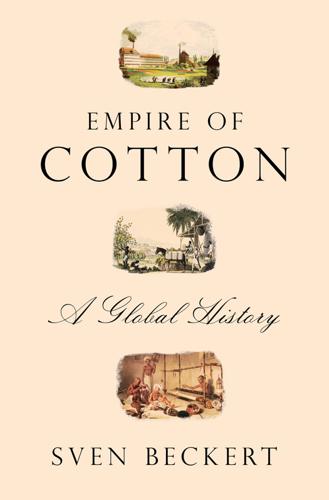
Empire of Cotton: A Global History
by
Sven Beckert
Published 2 Dec 2014
“Cotton,” as one observer wrote from Nagpore in July 1861, “appears to me to be the leading topic of the day,” and the English-language press of India was filled with hundreds if not thousands of stories about cotton. Manchester manufacturers shipped cottonseed to Bombay to be distributed to growers; they moved cotton gins and cotton presses into the countryside; and they talked about investing in railroads to remove cotton to the coast. They ran afoul, however, of India’s well-known obstacles. In 1862, when the Manchester Cotton Supply Association sent cotton gins and presses to India, they planned to unload them in the newly constructed port of Sedashegur, close to areas in which cotton was grown. Yet when the ships arrived, they found that the port had not been finished.
…
It was difficult to remove the seeds with the help of existing gins, but with demand increasing and prices high, planters had their slaves work it up in a slow and tedious process by roller gins modeled after Indian churkas.9 Yet even with slave labor, the result was not adequate. Planters yearned for a device that would more quickly separate seed from fiber. In 1793, Eli Whitney, only a few months after arriving in Savannah from his college days at Yale, built the first working model of a new kind of cotton gin that was able to rapidly remove the seeds of upland cotton. Overnight, his machine increased ginning productivity by a factor of fifty. News of the innovation spread quickly; farmers everywhere built copies of the gin. Like the jenny and the water frame, Eli’s gin overcame yet another bottleneck in the production of cotton textiles.
…
Calling upon spinners to organize to expand cotton production in colonial territories, he was the prime mover behind the creation of the Manchester Cotton Supply Association in 1857 “with a view to having a more abundant and universal supply.” Concerned about the increasing volatility of American politics in the wake of the Kansas-Nebraska Act and the Dred Scott decision, the association literally went to the ends of the earth delivering cotton gins, giving advice, and distributing seeds and implements to farmers, while collecting information on various kinds of cotton and various ways of growing it. The association’s work was a microcosm of the grand project of cotton capitalists: to transform the global countryside into a cotton-growing complex.50 For cotton manufacturers, India beckoned for the obvious reason that it remained one of the world’s greatest growers of the white gold.

Worn: A People's History of Clothing
by
Sofi Thanhauser
Published 25 Jan 2022
In the early 1790s, an industrial saboteur named Samuel Slater broke the British law forbidding engineers with knowledge of the new textile machinery to emigrate, and arrived in the U.S. with working plans for a drawing frame stitched in the lining of a coat pocket. In 1793 Slater, along with investor Moses Brown, opened the first industrial cotton-spinning mill in America in Pawtucket, Rhode Island, known as the Slater Mill. The same year, Eli Whitney invented the cotton gin. The metal teeth of Whitney’s gin could process as much short staple cotton in under an hour as a team of slaves had formerly been able to process in a day. Linen was out, cotton was in, and it was big money. Slater Mill copycats popped up quickly across New England. Townspeople in Londonderry voted in 1810 to change the town’s name to Manchester, after the British city by then famous for its textiles.
…
We had to idle in the field while we waited for the boll buggy, essentially a trough on wheels, to shuttle the cotton from the stripper to the edge of the field, where it was dumped into the module builder. With thousands of tons of hydraulic pressure, the module builder compacted the cotton into a freestanding loaf that stood on the field’s edge until it was picked up in a semi and trucked to the cotton gin. Dennis McGeehee was one of a cabal of Lubbock cotton titans. Cotton exists in the national imaginary as a southern crop, but after 1920 the development of large-scale industrial “cotton ranches” shifted cotton production from South to West. At the time of my visit, the area around Lubbock was growing more cotton than anywhere else in the U.S.
…
“Tape” referred, in Lubbock, to “drip tape”: the underground irrigation pipes that deliver water to the cotton plants. “They don’t believe you oughtta be killing them little beggars. We believe you should.” I nodded gravely. * * * — In 1790, the United States grew 1.5 million pounds of cotton. In 1800, seven years after the invention of the cotton gin by Eli Whitney in 1793, it grew 36.5 million pounds. In 1820 it grew 167.5 million pounds. During the thirty years following the invention of the gin, the internal slave trade in the U.S. moved one million slaves to the Deep South to grow cotton, and by 1830, one thirteenth of all Americans, mostly slaves, were engaged in growing this single crop.
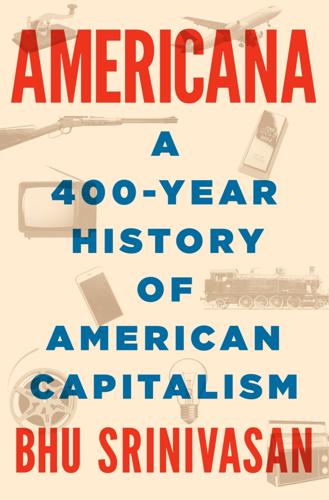
Americana: A 400-Year History of American Capitalism
by
Bhu Srinivasan
Published 25 Sep 2017
He exulted that not only did it make “labor fifty times less,” but since almost no one was currently employed in America separating upland cotton, it would do so “without throwing any class out of business.” This turned out to be the understatement of the century. Rather, the breakthrough of the cotton gin put the entire American South, powered by millions of black hands, in the business of growing cotton. • • • TWO YEARS BEFORE Whitney made his journey south, the Carolinas and Georgia had produced 3,000 bales of cotton, much of it the satinlike Sea Island variety. Ten years after he invented the cotton gin, annual production stood at 136,000 bales of cotton—equal to 68 million pounds in weight—almost all of the upland variety. This number too would be dwarfed in the coming years.
…
Whitney’s interests would be litigated in Georgia courts for the better part of a decade. By now, however, Whitney was on to a more lucrative venture altogether. Starting in 1798, having come to terms with the fact that little money would come to him from the cotton gin, he had turned his attention to weapons. With his skill in manufacturing and fame as inventor of the cotton gin, he received an initial order for ten thousand muskets for $134,000 from the U.S. government. His long-awaited fortune eventually came from guns. In doing so, Whitney set the stage for the Connecticut River Valley to become a leader in arms manufacturing, a competitive advantage for the North that poetically would be felt by South Carolina and Georgia decades later
…
Whitney had arranged: Jeannette Mirsky and Allan Nevins, The World of Eli Whitney (New York: Macmillan, 1952), 46–47. letter of explanation: Eli Whitney Jr. to Eli Whitney, September 11, 1793, Eli Whitney Papers, Yale University Manuscripts & Archives. One account has it: Denison Olmsted, Memoir of Eli Whitney (New Haven, CT: Durrie & Peck, 1846). the cotton gin was a simple: Whitney, “Patent for Cotton Gin,” issued March 14, 1794, Records of the Patent and Trademark Office, Group 241, National Archives. 3,000 bales of cotton: Bureau of the Census, “Historical Statistics of the United States, 1789–1945,” Washington DC, 1949, series E 211–44 (Crop Statistics—Hay and Cotton), 109.

Americana
by
Bhu Srinivasan
He exulted that not only did it make “labor fifty times less,” but since almost no one was currently employed in America separating upland cotton, it would do so “without throwing any class out of business.” This turned out to be the understatement of the century. Rather, the breakthrough of the cotton gin put the entire American South, powered by millions of black hands, in the business of growing cotton. • • • TWO YEARS BEFORE Whitney made his journey south, the Carolinas and Georgia had produced 3,000 bales of cotton, much of it the satinlike Sea Island variety. Ten years after he invented the cotton gin, annual production stood at 136,000 bales of cotton—equal to 68 million pounds in weight—almost all of the upland variety. This number too would be dwarfed in the coming years.
…
Whitney’s interests would be litigated in Georgia courts for the better part of a decade. By now, however, Whitney was on to a more lucrative venture altogether. Starting in 1798, having come to terms with the fact that little money would come to him from the cotton gin, he had turned his attention to weapons. With his skill in manufacturing and fame as inventor of the cotton gin, he received an initial order for ten thousand muskets for $134,000 from the U.S. government. His long-awaited fortune eventually came from guns. In doing so, Whitney set the stage for the Connecticut River Valley to become a leader in arms manufacturing, a competitive advantage for the North that poetically would be felt by South Carolina and Georgia decades later
…
Whitney had arranged: Jeannette Mirsky and Allan Nevins, The World of Eli Whitney (New York: Macmillan, 1952), 46–47. letter of explanation: Eli Whitney Jr. to Eli Whitney, September 11, 1793, Eli Whitney Papers, Yale University Manuscripts & Archives. One account has it: Denison Olmsted, Memoir of Eli Whitney (New Haven, CT: Durrie & Peck, 1846). the cotton gin was a simple: Whitney, “Patent for Cotton Gin,” issued March 14, 1794, Records of the Patent and Trademark Office, Group 241, National Archives. 3,000 bales of cotton: Bureau of the Census, “Historical Statistics of the United States, 1789–1945,” Washington DC, 1949, series E 211–44 (Crop Statistics—Hay and Cotton), 109.
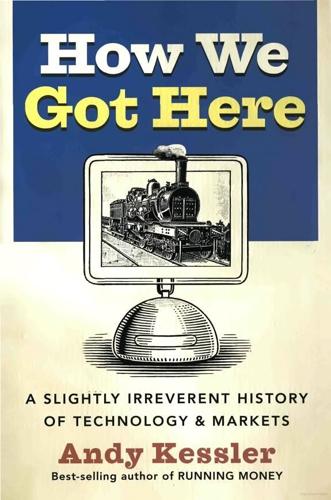
How We Got Here: A Slightly Irreverent History of Technology and Markets
by
Andy Kessler
Published 13 Jun 2005
He convinced Greene to set up a laboratory and in the winter of 1792 he created the cotton gin. In case you were wondering, (because I was) gin was short for engine, in good old Georgia talk. The gin was a device with spiked teeth on a rotating cylinder that pulled the cotton through small slots, leaving the seeds behind. Then a brush came along, rotated by pulleys and belts and pulled the cotton lint off the spikes. Operating it with a hand crank, someone could clean 50 pounds of cotton a day instead of just one, perhaps helping date the phrase, “Now just one cotton-picking minute.” *** In 1794, Whitney patented his cotton gin. Every plantation owner needed one.
…
Meanwhile, Whitney built bigger and bigger cotton gins. Waterpower replaced the hand crank or horse. America didn’t have any steam engines, and it would be a while until that mode of industrialization took hold. But it did have the ability to turn out more cotton. In 1792, no more than 150,000 pounds of American cotton made its way to England. Eight years later it was 17 million pounds. In 1850, 700 million pounds of cotton were exported to England, all to be 36 HOW WE GOT HERE run through the Frames and Mules and Looms. The Industrial Revolution was on! *** Many thought the invention of the cotton gin would help end slavery, as that labor-intensive task was mechanized and productivity increased by a factor of 50.
…
Every plantation owner needed one. Whitney took on a partner, Phineas Miller, and like Boulton and Watt, came up with a unique business model to leverage the invention. Instead of selling cotton gins, they made a whole batch of them, and ginned the cotton for the plantation owners for a fee of 40% of the profits, paid in cotton. That was pretty close to the one-third savings on horses that B&W charged. Of course, U.S. patent law was pretty new, and most farmers just made their own gin, and if anyone asked, said that theirs was a new invention, better than Whitney’s gin. That’s where Miller proved his worth as a partner.

Power and Progress: Our Thousand-Year Struggle Over Technology and Prosperity
by
Daron Acemoglu
and
Simon Johnson
Published 15 May 2023
Judge Johnson, “Individuals, who were…,” is from Lyman (1868, 158). “[R]egimented and relentless…” is from the National Archives online article on “Eli Whitney’s Patent for the Cotton Gin,” www.archives.gov/education/lessons/cotton-gin-patent. “When the price rises…” is from Brown (1854 [2001], 171); part of this quotation is also in Beckert (2014, 110). The development of accounting on slave plantations is in Rosenthal (2018). The cotton gin is discussed in detail by Lakwete (2003). Hammond’s speech is from Hammond (1836). On the “positive good of slavery,” see Calhoun (1837). A Technological Harvest of Sorrow.
…
A pair of historical episodes, from two very different economic systems and continents, are emblematic of its savage implications. In nineteenth-century America, we can see the implications of the transformative technology of the cotton gin. In American economic history, Eli Whitney appears alongside Thomas Edison as one of the most creative technological entrepreneurs enabling transformative progress. Whitney invented an improved cotton gin in 1793 that quickly removed the seeds from upland cotton. In Whitney’s own assessment, “One man and a horse will do more than fifty men with the old machines.” The early American cotton industry was based on a long-staple variety that did not do well when planted in areas away from the East Coast.
…
• Textile factories of the early British industrial revolution generated great wealth for a few but did not raise worker incomes for almost a hundred years. On the contrary, as the textile workers themselves keenly understood, work hours lengthened and conditions were horrible, both in the factory and in crowded cities. • The cotton gin was a revolutionary innovation, greatly raising the productivity of cotton cultivation and turning the United States into the largest cotton exporter in the world. The same invention intensified the savagery of slavery as cotton plantations expanded across the American South. • At the end of the nineteenth century, German chemist Fritz Haber developed artificial fertilizers that boosted agricultural yields.
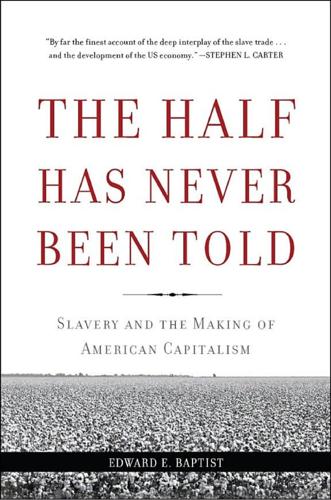
The Half Has Never Been Told: Slavery and the Making of American Capitalism
by
Edward E. Baptist
Published 24 Oct 2016
Workers moved across Chesapeake fields in ragged disorder set by divergent individual paces, not ranks formed up in lockstep like the ones that marched that July morning at Congaree.9 The best-known innovation in the history of cotton production, as every high-school history student knows, is the cotton gin. It allowed enslavers to clean as much cotton for market as they could grow and harvest. As far as most historians have been concerned, the gin is where the study of innovation in the production of cotton ends—at least until the invention of the mechanical cotton picker in the 1930s, which ended the sharecropping regime. But here is the question historians should have asked: Once enslavers had the cotton gin, how then did enslavers produce (or have produced, by other hands) as much as the gin could clean?
…
(Philadelphia, 1797); Michael Tadman, “The Hidden History of Slave-Trading in Antebellum South Carolina: John Springs III and Other ‘Gentlemen Dealing in Slaves,’” South Carolina Historical Magazine 97 (1996): 6–29, esp. 22. For the complex origins of the cotton gin, see Joyce Chaplin, An Anxious Pursuit: Agricultural Innovation and Modernity in the Lower South, 1730–1815 (Chapel Hill, NC, 2013); Angela Lakwete, Inventing the Cotton Gin: Machine and Myth in Antebellum America (Baltimore, 2003). 32. Cf. New York Advertiser, September 24, 1790. 33. “Charleston” from Pennsylvania Packet, February 25, 1790; C. Peter Magrath, Yazoo: Law and Politics in the New Republic: The Case of Fletcher v.
…
But their significance was greater than their numbers suggest. They were the trickle that predicted the flood. As tobacco prices plummeted in the 1780s, the prices of long-staple, or “Sea-Island,” cotton rose. Then, in the early 1790s, Carolina and Georgia enslavers started to use a new machine called the “cotton gin.” That enabled the speedy processing of short-staple cotton, a hardier and more flexible crop that would grow in the backcountry where the long-staple variant would not. Suddenly enslavers knew what to plant in the Georgia-Carolina interior. Down south, enslaved people in Maryland and Virginia began to whisper to each other, you had to eat cotton seed.

An Empire of Wealth: Rise of American Economy Power 1607-2000
by
John Steele Gordon
Published 12 Oct 2009
A rotating brush swept the lint off the nails into a compartment while the seeds fell into a separate compartment. With Whitney’s cotton gin, a laborer could do in a single day what had taken twenty-five laborers to do in that amount of time before. Its economic utility was so obvious that Whitney’s first model was stolen, but he received a patent on a new, improved model the following year and, in partnership with Phineas Miller, set up a factory to manufacture cotton gins near New Haven, Connecticut. Unfortunately for Whitney and Miller, the concept of the cotton gin is so simple that any competent carpenter could make one in an afternoon, and it proved impossible to enforce the patent as the idea spread throughout the parts of the South where cotton could be grown, and production began to soar.
…
South Carolina voted Whitney $50,000 from the state treasury to cover patent infringements, and North Carolina put a tax on cotton for five years to compensate him, yielding him about $30,000. Tennessee chipped in $10,000. The effect of the cotton gin on the economy of the South and thus of the United States as a whole was enormous. In 1793 the United States produced about five million pounds of cotton, almost all of it of the Sea Island variety. That was less than 1 percent of the world’s total cotton crop, most of which was then grown in India. By the first decade of the nineteenth century, thanks to the cotton gin, American production had increased eightfold to forty million pounds. And annual American exports of cotton to Britain had grown to about fifty thousand bales.
…
Louisiana also soon became a major cotton producer, and these five states were producing three-fourths of American cotton by the time of the Civil War. It is by no means a coincidence that they, along with the cotton-producing states of Florida and Texas, were the first states to secede from the Union after the election of 1860. Although the price of cotton, thanks to the cotton gin, had fallen low enough to reach a mass market, it remained a labor-intensive crop. It required about 70 percent more labor per acre to produce a crop than did corn. One reason for this is that cotton is very susceptible to weed infestation and must be hoed regularly. Chopping cotton, as it is called, was backbreaking toil in the fierce heat of a southern summer.

Capitalism in America: A History
by
Adrian Wooldridge
and
Alan Greenspan
Published 15 Oct 2018
In 1807, the American Congress passed and Thomas Jefferson, a slave owner, signed the Act Prohibiting Importation of Slaves. In 1833–34, abolitionist sentiment was given a further boost by Great Britain’s decision to abolish the slave trade across the empire. But the cotton gin gave an ancient evil a new lease on life across the South. We will never know whether slavery might have been abolished peacefully, as happened in the British Empire, were it not for the invention of the cotton gin. But slavery and cotton production certainly advanced in lockstep, as Sven Beckert demonstrates: the proportion of slaves in four typical South Carolina upcountry counties increased from 18.4 percent in 1790 to 39.5 percent in 1820 to 61.1 percent in 1860.
…
Schools were “the grand agent for the development or augmentation of national resources,” Mann wrote in 1848, “more powerful in the production and gainful employment of the total wealth of a country than all the other things mentioned in the books of political economists.”16 As the North threw in its lot with industry, the South fell under the sway of King Cotton. In 1793, Eli Whitney, returning to Savannah from studying at Yale, invented his cotton gin (short for “engine”), which, as we’ve seen, speeded up the separation of seeds from fiber by a factor of twenty-five. This marked a turning point in American history. Before Whitney’s invention, most plantations focused on tobacco, sugar, rice, and indigo. Cotton was a luxury item: high-quality long-staple cotton grew on the Sea Islands just off the coast of Georgia and South Carolina, but didn’t grow at any distance from the coast (Sea Island cotton remains a byword for luxury today).
…
By 1914, Ford Motor Company was one of the very few big privately owned companies to survive. Paradoxically, the large company that held out most firmly against public ownership was also the one that was responsible for perfecting America’s greatest management breakthrough: mass production. Mass production was rooted in Eli Whitney’s “uniformity system” for manufacturing first cotton gins and then muskets in the late eighteenth century. Henry Ford took this philosophy to a new level, not only breaking every task down into its smallest component parts but adding a moving assembly line. Long lines of workers now stood at their stations repeating the same mechanical task over and over.

Blood in the Machine: The Origins of the Rebellion Against Big Tech
by
Brian Merchant
Published 25 Sep 2023
Whitney even suggested that his device could help end slavery, since laborers would no longer have to do the unpleasant work of picking the seeds out by hand. That is not what happened. Instead, the cotton gin is one of the original sins of automated technology, and the most disastrous case of unintended consequences unleashed upon the world this side of the nuclear bomb. Whitney’s machine was widely pirated, modded, and adopted by plantation owners, who saw little need to compensate the inventor. The cotton gin worked so well that it wildly increased the demand for workers to do every other part of the cotton production process, especially the hoeing and the picking.
…
But from around the middle of the eighteenth century Imports of cotton were banned in Britain under the Calico Acts; in the 1700s, weavers couldn’t compete with the cheap cotton cloth produced in India; the act was repealed in 1774, when industrial machinery made the process cheaper. 3. “One man and a horse” Whitney’s letter to his father is viewable online through the DocsTeach at the US National Archives. 4. Whitney’s machine In his memoir, Ball describes the how the cotton gin works according to his own experience: As I shall be obliged to make frequent references to the cotton-gin, it may perhaps be well to describe it. Formerly there was no way of separating the cotton from the seed, but by pulling it of with the fingers—a very tedious and troublesome process—but a person from the north, by the name of Whitney, at length discovered the gin, which is a very simple though very powerful machine.
…
It would have been impossible to profitably pick cotton at the scale required—the machines needed huge volumes of raw material—had it not been for a young American named Eli Whitney, who, in 1793, just a few years before Charles was kidnapped, chained, and sent south, invented a machine called the cotton gin. Whitney was looking to make a fortune and pay off his student loans by solving a problem that plagued business in the south. Tobacco plantations were in trouble, and the greatest promise lay in cotton. But cotton plants that grew inland had sticky green seeds that were a pain to pick out of the fluffy white fibers that were used to make clothes.

Against Intellectual Monopoly
by
Michele Boldrin
and
David K. Levine
Published 6 Jul 2008
Of the many anecdotes, the story of Eli Whitney is particularly instructive. Born in Westborough, Massachusetts, in 1765, Whitney graduated from Yale College in 1792. The following year he designed and constructed the cotton gin, a machine that automated the separation of cottonseed from the short-staple cotton fiber. Very much like Watt’s engine in the coal districts of England, the cotton gin was enormously valuable in the South of the United States, where it made Southern cotton a profitable crop for the first time. Like James Watt, Eli Whitney also had a business partner, Phineas Miller, and the two opted for a monopolistic pricing scheme not dissimilar from Boulton and Watt’s.
…
Not surprisingly, farmers did not like this pricing scheme very much and started to “pirate” the machine. Whitney and Miller spent a lot of time and money trying to enforce their patent on the cotton gin, but with little success. Between 1794 and 1807, they went around the South bringing to court everyone in sight, yet received little compensation for their strenuous efforts. In the meanwhile, and thanks also to all that “pirating”, the Southern cotton-growing and cotton-ginning sector grew at a healthy pace. Ironically, Eli Whitney did eventually become a rich man – not through his efforts at monopolization, but through the wonders of competitive markets.
…
In 1798, he invented a way to manufacture muskets by machine, having developed the idea of interchangeable parts and standardized production. Having probably learned his lesson, he did not bother to seek patent protection this time, but instead set up a shop in Whitneyville, near New Haven. Here he manufactured his muskets and sold them to the U.S. Army. So it was not as a monopolist of the cotton gin, but rather as the competitive manufacturer of muskets, that Whitney finally became rich. Agriculture Among economists the reaction to the idea that economic progress is the fruit of competition is varied. Those belonging to the theoretical variety, P1: KNP head margin: 1/2 gutter margin: 7/8 CUUS245-03 cuus245 978 0 521 87928 6 May 8, 2008 13:56 52 Against Intellectual Monopoly interested in matters of pure economic theory and logic, tend to quickly agree and then yawn away the rest of the seminar, as the conclusion seems straightforward.

The Perfectionists: How Precision Engineers Created the Modern World
by
Simon Winchester
Published 7 May 2018
He was to devise and build, as specified in Brunel’s drawings, the first precision-made machines in the world that would be established for the sole purpose of manufacturing items. In this case it was pulley blocks, but the items could just as well have been guns, or clocks, or, in time to come, cotton gins or motorcars—en masse. The project took him six years. The navy built an enormous brick structure in its dockyard at Portsmouth to accommodate the armada of engines they knew was coming. And one by one, first from his workshop back up on London’s Margaret Street and then, as the company expanded, from a site in Lambeth, south of the River Thames, Maudslay’s epoch-making machines started to arrive.
…
Whitney remains a man of great fame, still known to most in America today as he has been for two centuries. His face appears on a postage stamp. He is part of the educational curriculum. He ranks alongside inventors and businessmen—Edison, Ford, John D. Rockefeller. To any schoolchild today, his name means just one thing: the cotton gin. This New Englander, at the age of just twenty-nine, had invented the device that removed the seeds from cotton bolls, and thus made the harvesting of cotton the foundation of a highly profitable Southern states economy—but only if slaves were used to perform the work, an important caveat. To any informed engineer, however, the name Eli Whitney signifies something very different: confidence man, trickster, fraud, charlatan.
…
There were also dozens of congressmen and soldiers and senior bureaucrats, all men who needed to be convinced that public treasure was going to be expended on what would be a truly worthwhile venture. They had been told they were there to witness Whitney demonstrating, with the use of a single screwdriver, how his musket locks were properly interchangeable. Everyone in the room was ready to believe him, Whitney’s cotton-gin-based reputation having long preceded him. It seemed to be of no great moment to anyone in the room, however, that the man didn’t even bother to disassemble the locks he had on show. Instead, he merely took a number of finished muskets, used his screwdriver to detach the locks from their wooden gunstocks, then slipped them whole into slots on other gunstocks, and so made it appear to the guileless visitors as though his parts were, as promised, truly interchangeable.

Arriving Today: From Factory to Front Door -- Why Everything Has Changed About How and What We Buy
by
Christopher Mims
Published 13 Sep 2021
As Amazon itself puts it: “What Robots Do (and Don’t Do) at Amazon Fulfilment Centres,” About Amazon, https://www.aboutamazon.co.uk/amazon-fulfilment/what-robots-do-and-dont-do-at-amazon-fulfilment-centres. huge demand for enslaved persons: Joan Brodsky Schur, “Eli Whitney’s Patent for the Cotton Gin,” National Archives and Records Administration, September 23, 2016, https://www.archives.gov/education/lessons/cotton-gin-patent. Taylor made the same error: Frederick Winslow Taylor, The Principles of Scientific Management (New York: Harper & Brothers, 1911). This trend was later confirmed: Will Evans, “Leaked Documents Show How Amazon Misled the Public About Warehouse Safety Issues,” PBS NewsHour, October 13, 2020, https://www.pbs.org/newshour/show/leaked-documents-show-how-amazon-misled-the-public-about-warehouse-safety-issues.
…
As Amazon itself puts it, “The fulfillment centers that have robots often have higher employment numbers because inventory is moved at a faster pace, which requires extra associates.” And this is hardly the first time in history that a new technology required vast numbers of new unskilled workers. For example, historians broadly agree that before Eli Whitney’s invention of the cotton gin, slavery was on its way out in the United States. But the combined appetites of an automated gin and England’s rapidly industrializing spinning and weaving industries created a huge demand for enslaved persons and made their continued abuse and bondage an enormously profitable enterprise for white Southerners.
…
See ships and shipping containerized shipping, 13–23; Amazon’s yellow totes compared to, 163; dimensions, strength, and structure, 18–19, 70–71; dwell time in ports, 83–84; e-commerce and development of, 14–15; as intermodal transport systems, 19; loading and transport process, 19–23; order of stacking containers, queuing theory, and grooming, 81–83; reefers (refrigerated containers), 34–35; scale of global shipping commerce, 22–23, 25–26; twistlocks and lashings securing containers, 34, 69, 84; Vietnam, in global supply chain, and, 15–23; Vietnam War and development of, 13–14 Continental Divide, 133 “continuous improvement,” 222, 223, 226, 228–30, 232 conveyor belts/conveyors, 163–70, 189, 194 Convoy (film), 109 Cook, Tim, 270 coronavirus. See Covid-19 pandemic corporate culture. See Bezosism; management systems Cosco Shipping Lines, 22, 48, 57, 70 Costco, 167 cotton gin, 212 Covariant, 246 Covey, Joy, 224, 275–76 Covid-19 pandemic: Amazon affected by, 7–8, 14–15, 217; automation and, 76; China, initial outbreak in, 2, 6, 29; “essential” workers in, 90; global health emergency, WHO declaration of, 30, 108; initial lockdown, 195, 255; shipping crews affected by, 27–29; shipping volumes and panic buying, 11, 76, 184, 195, 255, 266, 276, 287–288; supply chain affected by, 2, 6–9, 10; as supply shock, 10, 12; testing for, 6, 9, 68; U.S., first cases in, 6, 45 Coyote (logistics firm), 138 CPA (closest point of approach), 38 CPUs, 173–74 Croker, Sewall K., 128 CTC (Copenhagen Telephone Company), 82 Cummins (diesel engine company), 130 Cuomo, Andrew (governor of New York), 9 cyborgs, modern workers as, 15, 42, 219 cycle time, 215 D’Andrea, Raffaello, 182–83 DARPA (Defense Advanced Research Projects Agency), 247 Darwin, Charles, 83, 87, 160 Darwinism of Bezosism, 203, 209–11 De Beukelaer, Christiaan, 28 Delaware, as flag state, 32 delivery of goods to consumers, 271–88; accidents, injuries, and dangers in the workplace, 272, 275–76, 279–80; communication with drivers, 284–86; contactless delivery, 266; from delivery stations, 261–62; dogs, encounters with, 285; loading and organization of goods on truck, 274; on-time delivery, Amazon’s concern with, 223–24, 225–27; physical demands of, 272–73; robotic delivery, 263–70; routes, mileage, and route planning, 281–84; speeding, dangers of, 275–76; subcontracting/franchising, 278–81; training and methodology of, 271–75.
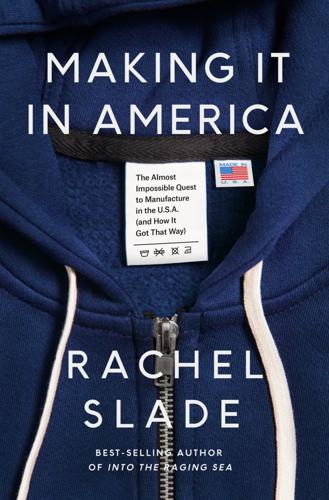
Making It in America: The Almost Impossible Quest to Manufacture in the U.S.A. (And How It Got That Way)
by
Rachel Slade
Published 9 Jan 2024
Together, they spawned New England’s textile industry, which fueled the early American economy while creating opportunities for America’s best and brightest, such as Eli Whitney. After the Massachusetts native graduated from Yale in 1792, Whitney was too short on funds to pursue a law degree, so he traveled to Georgia, where he witnessed the brutal reality of plantation life. It was there that he invented the cotton gin—a simple mechanism that quickly removed the seeds from cotton, the most time-consuming step of cotton production. Whitney hoped that his gin would ease the work of enslaved laborers in the South, but it had the opposite effect. As the price of cotton dropped due to ease of processing, demand increased for both cotton and workers to grow and harvest the crop.
…
Countless Indians incurred astronomical debt and loss of livelihood, which, as of 2019, has been linked to an estimated 300,000 farmer suicides in the country. Farmer suicides in the U.S. have also gone up 40 percent in less than two decades, a phenomenon linked to mounting debt, social isolation, and climate change. Before the invention of the cotton gin, cotton seeds were once the bane of the textile industry. You could grow the cotton, you could pick off the bolls, but extricating the hard bits of plant and seeds from cotton fibers was a major chore. Without an easy way to do this, cotton textile manufacturing depended on a lot of people putting in lots of hours, which is why cotton wasn’t grown much in the colonial South.
…
W., 15 Bush, George W., 52, 62, 63, 91 Butler, Dave, 180, 221 Buy American Act of 1933, 129n Berry Amendment, 129n, 232n C Cambodia, 25, 38, 257 Cameron, David, 138 Campbellsville, Kentucky, 257–58 Amazon and, 268–69 Fruit of the Loom closure, 268 Carhartt, 27, 139 Carleton Woolen Mill, Winthrop, Maine, 45–48 Carnegie, Andrew, 180 Cartwright, Edmund, 8 Cascade Woolen Mill, Oakland, Maine, 40–41 Casco Bay Wool Works, Portland, Maine, 39–49, 100 closing of, 49 founding of, 40 income growth and employees, 44–45 loss of suppliers, 48–49 Maine Maid Outerwear, 39–40, 44 NAFTA and closing of, 45–46 CFTC (Commodity Futures Trading Commission), 156 Champion Mills, 135 bought out by Sara Lee (1989), 139 factory moved to China, 168 factory moved to North Carolina, 139 NAFTA and move to Mexico, 139 sweatshirt produced by, 135–36 Charney, Dov, 252, 264 Child Labor Amendment of 1924, 134 Chile, 72–73 China American apparel, percentage produced by, 231 American manufacturing sent to, 18 American mills that offshored to, 168–69 Biden administration and, 275 as biggest cotton buyer, 156 British East India Company and, 13–14 Champion Mills moved to, 168 as competitor for American-made goods, 143, 231 currency manipulation and, 212 development of Suzhou, 85–86 global manufacturing domination, 68 global cotton market and, 231–34, 235 hourly rate for labor in, 169 as market for western goods, 46–47 sanctions on, and retaliation, 233 subsidizing manufacturers, 68, 212 sweatshirt production, 29 textile and clothing production domination, 129, 257 as a threat to the U.S., 68 unfair trade practices, 68 U.S. tariffs and, 68 U.S. trade deficit to, 68 Uyghur oppression, 233–34 WHO and, 18, 68, 143 workforce in, 86 CHIPS-Plus Act of 2022, 296 Chouinard, Yvon, 110 CIA, 13, 15 in Chile, 72 in China, 246 in the Congo Republic, 246 Contras and, 15 in the DRC, 246 right-wing coups and, 15, 71 Operation Condor, 15 Cinderella Man (film), 100 Cleaves, Adam, 279 Coal Industry Retiree Health Benefit Act of 1992, 195–96 Coastal Enterprises, Inc., 119 Colbert, Stephen, 140 Cold War, 71–72 Common Threads, Portland, Maine, 122–23, 123n, 128 Congo, Democratic Republic of (DRC), 123–24 Congo Republic, 245–47 Congress of Industrial Organizations (CIO), 64 Conway, Thomas, 217 Coolidge, Calvin, 204, 205 Corbyn, Jeremy, 73 Cornered: The New Monopoly of Capitalism and the Economics of Destruction (Lynn), 259, 261 Corson, Holland, 293 cotton China and, 156, 231–34, 235 cotton gin and, 8–9, 155 environmental issues, 154 futures market and, 156 ginning co-ops, 155 Indian cotton, 154–55 Monsanto’s seed monopoly, 154 Noxubee harvest, 154–55 Pilchman’s American Fabrics and, 168, 231–32 price increases, 231–32 quality monitored by the USDA, 156 U.S. exports, 155–56 U.S. as major grower, 132, 152–56 Covid-19 pandemic, 200–201, 211–13, 227, 234, 242–43, 276, 285 American Roots and, 200–201, 209, 210, 213–19, 223–26, 239, 242–43, 276, 285 brands cancelling orders and, 24 companies closed by, 193, 276 dependency on imports and, 211 drug shortage during, 299, 300n hoarding and, 213–14 market uncertainty and, 232, 276 masks and PPE shortage, 211, 214 national divisiveness and, 222 raw goods shortages, 231 Sintex Industries bankruptcy, 156 vaccines, 231 Waxmans’ Washington Post op-ed, 218, 220 Crawford, Lucy, 5–6, 7 Crown family, 78, 79 Obama and, 78 Whirlpool plant shutdown, 78–80 cryptocurrencies, 14n CSIS (Center for Strategic and International Studies), 297 D Daitch, Mike, 239–40 Dana, Woodbury, 174–75 Dana Warp Mill, Westbrook, Maine, 172, 174–75 Dartmouth College, 102 Davis, Isaac, 201–2 Dawes Act of 1887, 203 de Kooning, Willem, 59n Dell, Michelle, 88–89 Delphi Automotive, Dayton, Ohio, 77 Delta Air Lines, 153 Democratic Party AFL-CIO and, 52–53, 70, 74 free trade, offshoring, and, 70 neoliberalism and, 70, 195 Department of Defense (DOD) prison labor used by, 129–30n required to purchase American-made goods, 129n, 130, 232 spending on textiles and apparel (2021), 129n Depp, Johnny, 119 Devlin, Patti, 193–97, 211, 274 American Roots investment, 196, 227 on bringing back American manufacturing, 196–98 Dexter, Maine, 189–90 Dexter Shoe Co. in, 189, 190, 191–93 Dickens, Charles, 9 Du Pont family, Winterthur museum, Delaware, 34 E Eastman Kodak, 83–85 Japan’s Fujifilm imports and, 84, 85 Eban, Katherine, Bottle of Lies: The Inside Story of the Generic Drug Boom, 299n Eddie Bauer, 110 Eisenhower, Dwight D., 63, 207 Enter the Wu-Tang (album), 137 environmental issues agricultural monoculture, 152–54 cotton and, 154 fabric dye disposal and, 22 GDP not inclusive of, 17 textile manufacturing and, 21–22 used clothing disposal, 22–23 WTO’s detrimental effects, 16 Esquire, 146 Trumka profile, 78–79 Evans, Walker, 59n Evil Geniuses: The Unmaking of America (Andersen), 11 F Factory Man (Macy), 68–69 Fair Labor Standards Act of 1938, 134 Fairness Doctrine, 191 Fall River, Massachusetts, 217, 243, 279 Merrow company in, 40, 244–45, 247 Fanatics, 289 Farley, William, 258–59, 260 Farmstead Magazine, 33 FDRA (Footwear Distributors & Retailers of America), xii Federal Prison Industries, 129–30n Feinbloom brothers, 135–36 Fetterman, John, 139, 139n Feuerstein, Aaron, 105–6, 109–11, 129, 130 Feuerstein, Raphael, 110 Feuerstein, Samuel, 105–6 Flowfold company, Maine, 213 Floyd, George, 220, 241 Ford, Henry, 203, 256 Frazier, Joe, 137n free trade/free market theory, 4–5, 11–15, 24, 33, 63, 71 American economy and, 19, 235 Chile and, 72–73 devastating effects of, 19, 20, 91 ethical or social agenda absent, 23 first American victims of, 18 IMF and, 71 NAFTA and, 15–16, 18–19 Reagan and, 185 USMCA and, 19 WTO and, 16, 22, 84 See also NAFTA Friedman, Milton and Rose, 11–12, 14, 72, 111 Friedman, Vanessa, 139 Frost, Robert, 106 Fruit of the Loom, 234, 252, 257–60, 268 bankruptcy of, 263, 264 Farley takeover, 258–59, 263–64 offshore production of, 262–63 stock buyback at, 263–64, 263n G General Dynamics, 79 George, Billy, 53, 59 Gildan Activewear SRL, 232 Gingrich, Newt, “Language: A Key Mechanism of Control,” 192 Glass-Steagall Act, 94 globalization, 18, 70 Buffett’s miscalculation about, 192 NAFTA, WTO, and, 192 U.N.

More: The 10,000-Year Rise of the World Economy
by
Philip Coggan
Published 6 Feb 2020
There have been inventions throughout the course of history; what marks out the modern era is the speed with which these innovations have spread around the world. Economic growth comes mainly from two sources: having more workers and making those workers more efficient, in the sense of producing more each hour. Productivity can be enhanced by relatively simple new gadgets, such as the cotton gin developed by Eli Whitney, which removed seeds and waste from the cotton buds (although, by boosting the cotton crop, this invention perpetuated the US slavery system). But output can also be improved by new ways of organising production, such as the moving assembly line that allowed Henry Ford to produce cars more cheaply.
…
An embargo on British goods imposed by Thomas Jefferson in the course of the Napoleonic Wars, followed by the war with Britain of 1812–15, disrupted the supply of textiles across the Atlantic. By 1814, there were 243 mills operating in 15 states, employing a quarter of the workforce in New England and mid-Atlantic states.70 American ingenuity was already showing itself. The invention of the cotton gin by Eli Whitney in 1793 vastly increased the supply of cotton, while the first commercial steamboat service was launched by Robert Fulton and Robert Livingston in 1807. Thomas Jefferson’s purchase of the Louisiana territories from Napoleon in 1803 for the bargain price of $15m doubled the size of the nation and set the stage for the country’s meteoric rise.
…
So too did the local population, when the colonists enslaved them. But around 97% of the population of West and central Africa were immune to vivax malaria (the most frequent form of the disease). Alas, this genetic advantage proved a terrible curse. All the same, slavery might have declined naturally in the US were it not for Eli Whitney’s invention of the cotton gin, which removed the seeds from the raw fibre. This allowed American cotton exports to leap from 138,000 pounds in 1792 to 35m pounds by 1820 and significantly increased the demand for slave labour. The number of US slaves increased by a third between 1800 and 1810, and by another third in the following decade.23 The Europeans started to develop some moral qualms about the trade in the late 18th century.
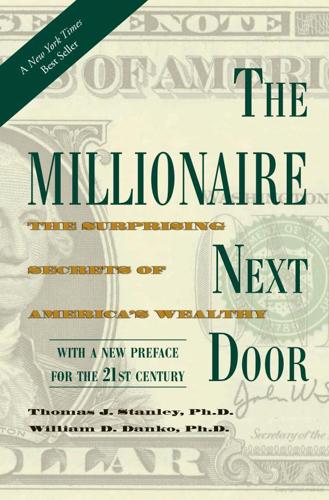
The Millionaire Next Door: The Surprising Secrets of America's Wealthy
by
Thomas Stanley
and
William Danko
Published 15 Nov 2010
APPENDIX 2 1996 MOTOR VEHICLES: ESTIMATED PRICE PER POUND APPENDIX 3 BUSINESSES/OCCUPATIONS OF SELF-EMPLOYED MILLIONAIRES Accountant Accounting/Auditing Services Advertising Agency Advertising Specialty Distributor Advertising/Marketing Advisor Aerospace Consultant Agriculture Ambulance Service Antique Sales Apartment Complex Owner/Manager Apparel Manufacturer-Sportswear Apparel Manufacturer-Infant Wear Apparel Manufacturer-Ready-to-Wear Apparel Retailer/Wholesaler-Ladies’ Fashions Artist-Commercial Attorney Attorney-Entertainment Industry Attorney-Real Estate Auctioneer Auctioneer/Appraiser Audio/Video Reproduction Author-Fiction Author-Text Books/Training Manuals Automotive Leasing Baked Goods Producer Beauty Salon (s) Owner-Manager Beer Wholesaler Beverage Machinery Manufacturer Bovine Semen Distributor Brokerage/Sales Builder Builder/Real Estate Developer Business/Real Estate Broker/Investor Cafeteria Owner Candy/Tobacco Wholesaler Caps/Hats Manufacturer Carpet Manufacturer Citrus Fruits Farmer Civil Engineer and Surveyor Clergyman-Lecturer Clinical Psychologist Coin and Stamp Dealer Commercial Laundry Commercial Real Estate Management Company Commercial Laboratory Commercial Property Management Company Commodity Brokerage Company-Owner Computer Consultant Computer Applications Consultant Construction Construction Equipment Dealer Construction Equipment Manufacturing Construction-Mechanical/Electrical Construction Performance Insurance Consultant Consulting Geologist Contract Feeding Contractor Convenience Food Stores Owner Cotton Gin Operator Cotton Farmer Cotton Ginning Owner/Manager CPA/Broker CPA/Financial Planner Curtain Manufacturer Dairy Farmer Dairy Products Manufacturer Data Services Dentist Dentist-Orthodontist Department Store Owner Design/Engineering/Builder Developer/Construction Diesel Engine Rebuilder/Distributor Direct Mail Services Direct Marketing Direct Marketing Service Organization Display and Fixture Manufacturer Donut Maker Machine Manufacturer Electrical Supply Wholesaler Employment Agency Owner/Manager Energy Production Engineer/Consultant Energy Consultant Engineer/Architect Excavation Contractor Excavation/Foundation Contracting Executive Transportation/Bodyguard Service Farmer Fast Food Restaurants Financial Consultant Florist Retailer/Wholesaler Freight Agent Fruit and Vegetable Distributor Fuel Oil Dealer Fuel Oil Distributor Fund Raiser/Consultant Funeral Home Operator Furniture Manufacturing General Agent Insurance Agency General Contractor Grading Contractor Grocery Wholesaler Grocery Store Retailer Heat Transfer Equipment Manufacturer Home Health Care Service Home Builder/Developer Home Repair/Painting Home Furnishings Horse Breeder Human Resources Consulting Services Import-Export Independent Investment Manager Independent Insurance Agency Industrial Laundry/Dry Cleaning Plant Industrial Chemicals-Cleaning/Sanitation Manufacturer Information Services Installations Contractor Insurance Agent Insurance Agency Owner Insurance Adjusters Investment Management Irrigated Farmland Realtor-Lessee Janitorial Services Contractor Janitorial Supply-Wholesaler Distributor Janitorial Contractor Jewelry Retailer/Wholesaler Job Training/Vocational Tech School Owner Kaolin Mining, Processing, Sales Kitchen and Bath Distributor Labor Arbitrator Labor Negotiator Laminated and Coated Paper Manufacturer Land Planning, Designing, Engineering Lawyer-Personal Injury Lecturer Liquor Wholesaler Loan Broker Long-Term Care Facilities Machine Design Machine Tool Manufacturing Managed Care Facilities Owner Management Consulting Manufactured Housing Manufacturer-Women’s Foundation Wear Marina Owner/Repair Service Marketing/Sales professional Marketing Services Marketing Consultant Mattress/Foundation Manufacturer Meat Processor Mechanical Contractor Medical Research Merchant Micro-Electronics Mobile-Home Park Owner Mobile-Home Dealer Motion Picture Production Motor Sports Promoter Moving and Storage Newsletter Publisher Non-Profit Trade Association Management Nursing Home Office Furnishings Office Temp Recruiting Service Office Park Developer Office Supply Wholesaler Office Machines Wholesaler Oil/Gas Investment Company Owner Orthopedic Surgeon Oversize Vehicle Escort Service Owner/College President Paint Removal/Metal Cleaning Patent Owner/Inventor Paving Contractor Pest Control Services Petroleum Engineering Consulting Services Pharmaceuticals Pharmacist Physical and Speech Therapy Company Physician Physician-Anesthesiologist Physician-Dermatologist Physicist-Inventor Pizza Restaurant Chain Owner Plastic Surgeon Poultry Farmer President/Owner Mutual Fund Printing, Self Storage, Farming Printing Private Schooling Property Owner/Developer Public Relations/Lobbyist Publisher of Newsletters Publishing Race Track/Speedway Operator Radiologist Rancher Real Estate Agency Owner Real Estate Broker Real Estate Developer Real Estate Investment Trust-Manager Real Estate-Broker/Developer/Financier Real Estate Auctioneer Real Estate Restaurant Owner Retail Jeweler Retail Chain-Women’s Ready-to-Wear Retail Store/Personnel Service Rice Farmer Sales Agent Sales Representative Agency Salvage Merchandiser Sand Blasting Contractor Sand and Gravel Scrap Metal Dealer Seafood Distributor Seafood Wholesaler Service Station Chain Owner Ship Repair-Dry Dock Sign Manufacturer Soft Drink Bottler Software Development Specialty Steel Manufacturer Specialty Oil Food Importer/Distributor Specialty Tools Manufacturer Specialty Fabric Manufacturer Speculator in Distressed Real Estate Stock Broker Store Owner Tax Consultant/Attorney Technical Consultant/Scientific Worker Technical/Scientific Worker Textile Engineering Services Timber Farmer Tool Engineer Tradesman Trading Company Transportation/Freight Management Travel Agency Owner/Manager Travel Agency Owner Truck Stop(s) Owner Trustee Advisor Tug (Boat) Services Owner Vegetables Farmer Vehicle Engines & Parts Wholesaler Water Supply Contracting Welding Contracting Welding Supply Distributor Wholesale Distribution Wholesale/Distributor Wholesale Grocery Wholesale Produce Wholesale Photo Franchiser Xerox Sales/Service
…
TABLE 8-3 SELECTED BUSINESSES/OCCUPATIONS OF SELF-EMPLOYED MILLIONAIRES Advertising Specialty Distributors Human Resources Consulting Services Ambulance Service Industrial Chemicals-Cleaning/Sanitation Manufacturer Apparel Manufacturer-Ready-to-Wear Janitorial Services-Contractor Auctioneer/Appraiser Job Training/Vocational Tech School Owner Cafeteria Owner Long-Term Care Facilities Citrus Fruits Farmer Meat Processor Coin and Stamp Dealership Mobile-Home Park Owner Consulting Geologist Newsletter Publisher Cotton Ginning Office Temp Recruiting Service Diesel Engine Rebuilder/Distributor Pest Control Services Donut Maker Machine Manufacturer Physicist-Inventor Engineering/Design Public Relations/Lobbyist Fund Raiser Rice Farmer Heat Transfer Equipment Manufacturer Sand Blasting Contractor Actually, there is considerable financial risk in being a business owner.

Alistair Cooke's America
by
Alistair Cooke
Published 1 Oct 2008
The first stop the steamboats made was at Natchez, a town that had been ruled successively by the Indians, the French, the British, and the Spanish, and was only recently American. Before the coming of the cotton gin, it had been a frontier capital and a rough one, a landing place for the flatboatmen taking aboard their rafts skins and hams, and tobacco and grains and whiskey. It was a rowdy way station for pioneers going into the new lands and a boomtown for land agents and fly-by-night real-estate men. Land was cheap and money was easy to make, and lose. The farmers hereabouts had tried and failed to grow indigo. They had found tobacco didn’t pay. But after the cotton gin the land bloomed, and so did the new rich. They came from the South and also from the North, and from Scotland and Ireland.
…
It had one paw out through the fence and held it there like a pointer, poised and waiting for a strolling chicken. The paw darted forward and missed the chicken but retrieved a pawful of feathers. Whitney saw in this a principle of friction and separation, and he applied it to his experiments and came up with a simple box, the cotton gin. Inside it was a suspended wooden cylinder that revolved at the cranking of a handle. The cylinder was encircled with evenly spaced metal spikes that clawed at the deposited raw cotton, shed the seeds behind the cylinder, and let the pure lint come foaming up in front. Whitney calculated that a hand machine like this could do the work of ten slaves, of fifty slaves if it was driven by water.
…
William 181, 182 coinage 202–3 Columbus, Christopher 17, 20, 22–6, 48 Committees of Correspondence 80, 82, 83, 104 communes 168, 286–7 Communism 232–3, 236 Concord, Battle of 84–5 Confederacy 156–64, 166–7 Congressional investigations 285 Constitution 5, 11, 97, 110–18, 164, 253, 257 Constitutional Convention 103–12, 120 Continental Congress 81, 87, 88, 88–9, 91, 101 Contract Labor Law 213, 221 Cook, Capt James 292 Coolidge, Calvin 61, 90, 237–8, 245 Cornwallis, Lord 97 Coronado, Francisco 29–33 Cortés, Hernando 19, 27, 37 Cosa, Juan de la 25 cotton gin 149–51, 152 Cotton Kingdom 147–9 cowboys 175–6 Crévecoeur, Jean de 71 Croker, Richard 217 Crosby, Bing 284 Cumberland Gap 123–4, 124 Custer, Gen. George Armstrong 182 dams 278–80 Darwin, Charles 203 Declaration of Independence 91, 93–4, 101, 103, 277 Deere, John 179, 295 deficit financing 283–4 De La Warr, Lord 51 De Smet, Fr.

Begin the World Over
by
Kung Li Sun
Published 14 Jun 2022
“It’s no insult,” Denmark said. “We’re arguing about the future of trade.” Denmark picked at his bread. The crust really was splendid. “No matter,” said Mai. “Increasing production is very easy. Now with cotton gin, it’s even more easy. Every bank wants to give credit to make farms for cotton. Twelve cents a pound, one slave makes 1,000 pounds equals $120. But with new cotton gin, one slave makes 2,000 pounds. With more whipping, one slave makes 4,000 pounds, equals $480. You need credit to buy slave? So easy! When one slave equals $480 in one year, easy to pay 10 percent interest on credit.
…
“She is trying to make me a good capitaliste,” said Denmark to James. Then to Mai, Denmark said, “You know I’ll never touch the trade, no matter how profitable.” Mai stood and reached across the table. With the heel of her palm, she gave Denmark a hard rap on his forehead. “You stupid man! I talk cotton gin for your protection. Not for your profit. Capital is most powerful. If indigo down, capital go to sugar. If sugar down, capital go to cotton. No sugar in Santo Domingo? Yes in Cuba. Man is not free, capital is free.” Denmark rubbed his forehead. To James, he said, “She thinks I’ve been unduly influenced by the French notions of liberté.”

The Relentless Revolution: A History of Capitalism
by
Joyce Appleby
Published 22 Dec 2009
As the Virginia planters had done when they adopted slave labor, the Carolina planter elite passed draconian laws controlling every aspect of slave behavior to still their fears of a slave rebellion. When American independence brought an end to British subsidies for tobacco, rice, and indigo, the American South was lucky enough to find a new cash crop in cotton. Eli Whitney’s cotton gin, invented in 1793, made profitable the short-staple cotton that could be grown throughout the region. Soon the crop spread west to Alabama, Mississippi, and Louisiana, embedding slavery in the economy of the new nation. By 1815 southern planters were sending 17 million bales of cotton to the mills of Lancaster and Manchester.
…
Ordinary people could now wear purple, once the color of kings, but not without raising eyebrows at first. Steam turned textile manufacturing into the principal industry of the nineteenth century. Cotton could be grown in more places than sugar could be, but the places were still limited. Americans didn’t start raising short-staple cotton until Eli Whitney invented the cotton gin in 1793. After that, demand became ferocious, growing twentyfold in fifty years. At last the mills of Manchester had a steady supply of cotton as settlers and their slaves moved into the virgin lands of Georgia, Alabama, and Mississippi. When the North successfully blockaded cotton shipments to England during the Civil War, Great Britain turned to Egypt, where the government had been promoting cotton production.
…
At the first census of 1790, a population of almost four million men and women, mostly young and inured to work, lived on the edge of the most fertile land on the globe. On their way to this national domain, they would discover coal, iron, gold, and oil in great abundance. That first census also counted more than three-quarters of a million enslaved persons. The value of slaves soared with the invention of the cotton gin, which made profitable the short-staple cotton grown throughout the region. Any hopes spawned by the ideals of the Revolution that slavery might decline throughout the South died. In 1789 the United States adopted a constitution designed to create a single nation from its thirteen semiautonomous states.
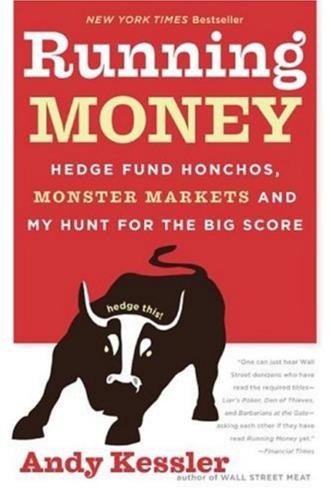
Running Money
by
Andy Kessler
Published 4 Jun 2007
It took one slave all day to remove sticky green seeds from one pound of cotton, a hidden but stubborn bottleneck to cheap clothing out of England. A Yalie named Eli Whitney headed south, and in the winter of 1792, as every schoolkid now knows, Whitney invented the cotton gin. Gin, in case you were wondering (I was), is short for engine, good old Georgia talk. Operating a hand crank, one person running Whitney’s cotton gin could clean 50 pounds of cotton a day instead of just the one pound by hand. Now that machines had broken the barriers all along the cloth value chain, the clothing business took off. And demand for steam engines took off with it.
…
See also Internet Communicopia Conference (Goldman Sachs), 162 Compac, 111 competitive advantage, 45, 248 competitive pricing, 41–42, 77–79, 89, 91–95, 103, 121 communication networks and, 183, 187–88 digitalization and, 127–28 intellectual property and, 136–37, 248 microchips and, 46, 253, 254 semiconductor memory and, 124, 126, 130 steam engines and, 58–59, 64, 68, 183 See also profitability computer literacy, 122 computers, 101–3, 183–84, 199, 277 augmentations, 118–23, 125, 199 CD drives and, 206–7 301 cost elasticity and, 58, 121, 126, 128, 183 eased use of, 121–23 initial high cost of, 131 intellectual property creation and, 121, 125, 246, 258, 268 LCDs and, 155, 156–57 microchip innovation and, 124–28, 183 on-command, 296 open-source systems, 247 outsourcing and, 100, 130–35 PC networks and, 183–92 See also Internet; software consultants, 178–79 consumer economy, 68, 257, 261–62, 267–69, 271 convertible bonds, 30–31 Cook, Scott, 156 copyright law, 293 Corning family, 109 Corn Laws, 272, 277 Costco, 253 cotton, 64–67 cotton gin, 67 Crompton, Samuel, 65, 272 CS First Boston (CSFB), 3, 4, 208, 212, 213–14, 216 currency devaluation, 163–64, 276 currency flows, 13, 260–61, 275–76 current account deficits, 257–58 Cybersource, 138–39, 208 Cypress Semiconductor, 130, 250 Daiwa, 160 Darby, Abraham, 53 databases, 61 data mining, 74 Davies, Donald Watts, 185 Davis, Johnny, 244 302 debt default, 1, 3, 164, 258 debt load, 257–58, 275.

The Second Machine Age: Work, Progress, and Prosperity in a Time of Brilliant Technologies
by
Erik Brynjolfsson
and
Andrew McAfee
Published 20 Jan 2014
We have failed to recognize that we are at a technological plateau and the trees are more bare than we would like to think.6 General Purpose Technologies: The Ones That Really Matter Clearly, Gordon and Cowen see the invention of powerful technologies as central to economic progress. Indeed, there’s broad agreement among economic historians that some technologies are significant enough to accelerate the normal march of economic progress. To do this, they have to spread throughout many, if not most, industries; they can’t remain in just one. The cotton gin, for example, was unquestionably important within the textile sector at the start of the nineteenth century, but pretty insignificant outside of it.* The steam engine and electrical power, by contrast, quickly spread just about everywhere. The steam engine didn’t just massively increase the amount of power available to factories and free them from the need to be located near a stream or river to power the water wheel; it also revolutionized land travel by enabling railroads and sea travel via the steamship.
…
Plenty of building blocks are in place, and they’re being recombined in better and better ways all the time. * * * * In reality, many of the countries that do have large amounts of mineral and commodity wealth are often crippled by the twin terrors of the “resource curse”: low growth rates and lots of poverty. * Some have tied the invention of the cotton gin to increased demand for slave labor in the American South and therefore to the Civil War, but its direct economic effect outside the textile industry was minimal. * Keep in mind that if there are only fifty-two seed ideas in such an economy, they have many more potential combinations than there are atoms in our solar system
…
communication, complex communications, engineering breakthroughs in computer grading computers: business use of; see also information technology (IT) complex communication by consumer surplus associated with early economic arguments about evolution of information processing by language translation by M2M communication by Moore’s Law application to pattern recognition by personal productivity gains linked to real-world capabilities of skill acquisition and writing by see also artificial intelligence (AI); automation; digitization computer search computer viruses Confucius consumer products consumer surplus content, user-generated see also social media Cook, Philip Cook, Scott copyrights cotton gin Cowen, Tyler C-Path Cragin, Bruce Craigslist “Cramming More Components onto Integrated Circuits” (Moore) Cray-2 supercomputer creativity see also innovation crowdsourcing Cuba culturomics Curtis, William CVS David, Paul DeBacker, Jason Deep Blue Defense Advanced Research Projects Agency (DARPA): driverless car challenge of robotics challenge of Defense Department, U.S.

The New Class War: Saving Democracy From the Metropolitan Elite
by
Michael Lind
Published 20 Feb 2020
Bush, the former governor of Texas, once the leading cotton-producing slave state in the US, declared: “Americans don’t want to pick cotton at 105 degrees but there are people who want to put food on their family’s tables and are willing to do that.”19 Another Texan born like Bush into an upper-class family, Representative Robert “Beto” O’Rourke, agreed with Bush, his partisan and political opposite, that low-wage immigrants were needed to pick and process cotton in the former Confederate state of Texas. When an African American Texan asked O’Rourke about illegal immigrants, the West Texas patrician uncritically quoted the owner of a cotton gin: “[T]here are twenty-four jobs and the manager of that gin says it does not matter the wages that I pay or the number of hours that we set, there is no one born in Roscoe . . . or Texas or this country who is willing to work.”20 History records no instance in which all of a country’s cotton pickers, groundskeepers, maids, or construction workers abruptly decided they were too good for the job and quit the industry en masse.
…
Paul Krugman, “North of the Border,” New York Times, March 27, 2006. 18. United Press International, “Bloomberg: Illegal Immigrants Help Golfers,” UPI.com, April 1, 2006. 19. Dave Seminara, “Bush 43’s Bankrupt ‘Let Them Pick Cotton’ Immigration Policy,” The Hill, February 19, 2019. 20. Ken Webster Jr., “Beto Tells Black Guy: We Need Illegal Immigrants for Cotton Gin,” kprcradio.iheart.com, September 20, 2018. 21. Natalie Kitroeff, “Immigrants Flooded California Construction. Worker Pay Sank. Here’s Why,” Los Angeles Times, April 22, 2017; Sara Murray, “On the Killing Floor, Clues to the Impact of Immigration on Jobs,” Wall Street Journal, August 21, 2013; Philip Martin, Importing Poverty?

Evil Geniuses: The Unmaking of America: A Recent History
by
Kurt Andersen
Published 14 Sep 2020
The industrial revolution’s great American celebrity promoter Eli Whitney became famous in the 1790s, just out of Yale, for inventing a machine that was at the center of America’s industrial revolution—a new, improved cotton gin that mechanized the process of removing the dozens of seeds from each cotton boll. At the time, growing cotton was a new and very small part of American agriculture. One worker using just his or her hands spent a whole day to produce one pound of clean cotton. But using Whitney’s gin, that output suddenly leaped to twenty or twenty-five pounds per day. In the early 1800s, cotton replaced tobacco as the biggest U.S. export, and production increased 3,000 percent over the next half-century. The cotton gin is a perfect illustration of the economic fact to which I keep returning: a new technology makes workers more efficient, increased productivity results in more profits, and the economy grows.
…
The cotton gin is a perfect illustration of the economic fact to which I keep returning: a new technology makes workers more efficient, increased productivity results in more profits, and the economy grows. But as I’ve also said, every economy is a political economy, and the story of the cotton gin is also an extreme illustration of that fundamental truth. Cotton growing happened in the South, of course, and the people whose productivity dramatically improved were enslaved African Americans, at least two-thirds of whom worked producing cotton. And the profits that dramatically improved as a result, of course, all went to the plantation owners. So this remarkable piece of new technology, in addition to driving overall U.S. economic growth, was responsible as well for making slavery a foundation of the U.S. economy.
…
We learn in school that Whitney came up with another, more foundational piece of the industrial revolution: manufacturing things out of standardized bits and pieces, interchangeable parts, from gears and levers then to Ethernet plugs and semiconductor chips now. Coming off the success of the cotton gin, young Whitney convinced the new U.S. government that he was their man to mass-produce ten thousand muskets, even though he knew nothing about making guns. Two years later, after failing to meet his contractual deadline, he went to Washington to keep his remorseful buyers on the hook. His state-of-the-art musket was taking a bit longer than expected to get right, he told President Adams and President-elect Jefferson and the secretary of war, because it would consist entirely of fantastic new interchangeable parts, meaning that manufacture would be cheaper and faster, and repair easier.

Visual Thinking: The Hidden Gifts of People Who Think in Pictures, Patterns, and Abstractions
by
Temple Grandin, Ph.d.
Published 11 Oct 2022
The picture-thinking mind can see how a not-yet-created mechanical device will work. In the earliest renderings on view at the Patent Office, you can see the mechanical mind of the object thinker at work. The same ingenuity was captured in that book about inventors that I loved as a child. Four examples come to mind that show the impact their inventions had on society. The cotton gin invented by Eli Whitney separated the seeds from the cotton fiber, revolutionizing the textile industry. The reaper invented by Cyrus McCormick used a vibrating blade to harvest grain; a version of this device would be used in all subsequent mechanical reapers, revolutionizing our food supply. Elias Howe didn’t invent the sewing machine, per se, but he put together all the existing elements: the overhanging arm, the lockstitch, an automatic feed for the fabric, and his own ingenious design of a needle with an eye placed at the point of insertion into the fabric.
…
Elias Howe didn’t invent the sewing machine, per se, but he put together all the existing elements: the overhanging arm, the lockstitch, an automatic feed for the fabric, and his own ingenious design of a needle with an eye placed at the point of insertion into the fabric. It seems like a small thing, but, combined with the cotton gin, it ushered in the age of cheaper, faster clothing production. The six-shooter pistol invented by Samuel Colt had a revolving cylinder, whittled out of wood, that automatically rotated the next bullet into position and allowed the gun to be fired multiple times without reloading, something that changed the face of warfare.
…
See genius; geniuses Inouye, Tatsuji, 21 Institute for the Study of Advanced Development (Denver), 15 Intel, 100–101 intelligence, 64–66, 72, 175, 183–84 International Atomic Energy Agency, 153 International Latex Corporation (ILC), 143–44 International Society of Applied Ethology, 265 International Space Station, 137–38 internet, 73, 103, 117, 228–33 internships, 114–18 Introduction to Mathematical Philosophy (Russell), 179 inventions, 85–86, 156, 158 automobile transmission mechanism, 90 autopilot, 121–23 cattle-handling devices and systems, 90, 99, 126–30, 190–91 cotton gin, 87–88 fMRI, 23 iPhone, 139–40 printing press, 88, 90, 107 sewing machine, 85, 87–88 steam power, 86 inventors, 37, 50, 85–96, 100, 105, 121–26, 155–59. See also geniuses; specific names iPhones, 5, 94, 103, 139–40, 183 Ireland, 168, 172, 242 Isaacson, Walter, 125, 139–40, 183, 186 Italian fashion industry, 116–17 Ive, Jony, 140 Iversen, Steffen M., 74–75 Ivey Business School, 105 Ivy League schools, 73, 109.

Empire of AI: Dreams and Nightmares in Sam Altman's OpenAI
by
Karen Hao
Published 19 May 2025
As they turn their ideas into reality, the vision they impose—of what the technology is and whom it can benefit—is thus the vision of a narrow elite, imbued with all their blind spots and self-serving philosophies. Only through cataclysmic shifts in society or powerful organized resistance can a technology transform from enriching the few to lifting the many. The authors point to the invention of a new cotton gin in the 1790s as an example. The machine turned the American South into the largest global exporter of cotton, boosted the country’s top-line economic growth, and generated windfall returns for many landowners and cotton-related businesses. But it only served to intensify slavery and its horrific system of dehumanization and labor exploitation until its abolition seven decades later.
…
But it only served to intensify slavery and its horrific system of dehumanization and labor exploitation until its abolition seven decades later. With the surge in cotton production, enslaved Black people were forced to work longer hours and physically coerced by even harsher means to squeeze out every ounce of their labor. All the while, those who profited from the cotton gin painted the invention as one that made the enslaved happier. “I say it boldly, there is not a happier, more contented race upon the face of the earth,” said one South Carolina congressman. These two features of technology revolutions—their promise to deliver progress and their tendency instead to reverse it for people out of power, especially the most vulnerable—are perhaps truer than ever for the moment we now find ourselves in with artificial intelligence.
…
Perhaps you are a consumer who has found great value in ChatGPT’s quick and clever or thought-provoking responses. Perhaps you are a professional who has sped up your administrative work in ways that have boosted your productivity. Maybe instead you are a company leader who has been able to trim your workforce while increasing your margins to stay competitive in the market. But like the cotton gin in the 1790s, the education technology startup in Massachusetts, the facial-recognition companies in South Africa, and the many more examples detailed in the coming pages, the costs of this vision are pressing down on vast swaths of the global population who are vulnerable. This is the empire’s logic: The perpetuation of the empire rests as much on rewarding those with power and privilege as it does on exploiting and depriving those, often far away and hidden from view, without them
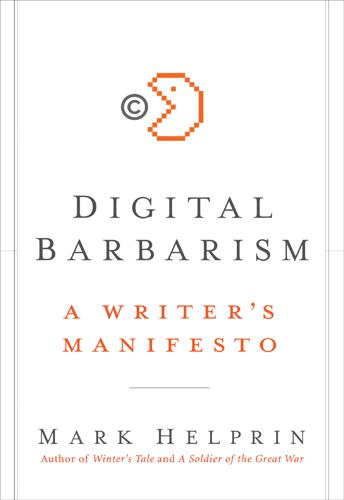
Digital Barbarism: A Writer's Manifesto
by
Mark Helprin
Published 19 Apr 2009
What most damns the Luddites in the common wisdom is that they failed to make distinctions (although they did: they did not attack machines per se, but only those that were displacing their customary industry), not even bothering with the bath water as they threw out all the babies. How stupid and pointless to object, for example, to the steam engine, the cotton gin, or the railroad. The original progressives embraced such things as instruments of rationalism that would in tandem with their beloved techniques of social engineering make the world over for the better. Their recent heirs, however, have stopped short. A shift occurred sometime between their mocking of conservatives for objecting to water fluoridation and their own subsequent fear and suspicion of an encyclopedia’s-worth of substances.
…
This would demand, however, not merely extra care and expenditure but an adjustment of prevailing attitudes sufficient to be a retreat to an earlier time in which machines and industrial processes worked according to general applicability rather than a tailored approach, which was left to craftsmen like tailors. Machines were generally comprehensive and indiscriminate. The cotton gin goes through all the cotton and blindly removes the seeds: it does not identify them. Nor does it miss them. Its action would be exactly the same if the cotton were infested with seeds or had not a single one. In fact, its action would be the same if it were combing through polyester or wool. The combine does not seek out and identify an ear of corn, it takes in everything and because of their characteristics the ears of corn are blindly stopped by its selective filter.
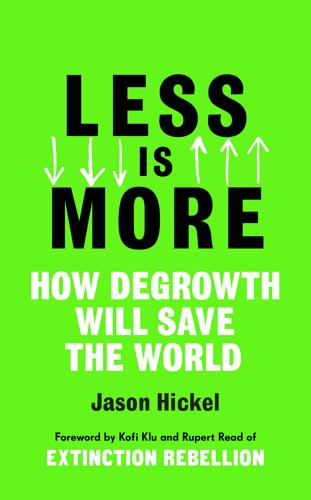
Less Is More: How Degrowth Will Save the World
by
Jason Hickel
Published 12 Aug 2020
But the main contribution that technology makes to growth is not that it produces money out of thin air, but rather that it enables capital to expand and intensify the process of appropriation.1 This was true well before the steam engine. Even in the early 1500s, innovations in sugar-milling technology allowed plantation owners to put more land under sugar than they otherwise would have been able to process. Similarly, the invention of the cotton gin enabled producers to expand cotton monoculture. New wind-powered pumps were used to drain Europe’s wild wetlands, opening vast tracts of land to farming. The development of bigger blast furnaces allowed for faster iron smelting, which in turn paved the way for more mining. And more logging was needed to fuel the furnaces, to the point where huge swathes of Europe’s forests were felled to produce iron.
…
But logging companies equipped with chainsaws don’t let their workers finish the job early and take the rest of the day off. They get them to cut down ten times as many trees as before. Lashed to the growth imperative, technology is used not to do the same amount of stuff in less time, but rather to do more stuff in the same amount of time. The steam engine, the cotton gin, fishing trawlers – these technologies have contributed so spectacularly to growth not because money springs forth from them automatically, but because they have enabled capital to bring ever-greater swathes of nature into production. Innovations like containerisation and air freight contribute to growth because they enable goods to be transported from the point of extraction or production to the point of consumption more quickly.

Designing for Emotion
by
Aarron Walter
Published 4 Oct 2011
—Jared Spool CEO and Founding Principal, User Interface Engineering Revolution: Something Lost and Something Found Powered by a chain reaction of ideas and innovations, a revolution of industry swept the western hemisphere in the late eighteenth and nineteenth centuries. In a relatively short time, we discovered ways to transform mined materials into manufacturing devices, transportation systems, and agricultural tools that fueled the twentieth century’s explosive innovations. Inventions like the cotton gin, machine tools, the steam engine, the telegraph, and the telephone promised a future filled with opportunity and prosperity. Though the industrial revolution sprang from a utopian vision of human progress, humans were so often the ones left behind. Skilled craftsmen like blacksmiths, cobblers, tinsmiths, weavers, and many others slowly forfeited their trade to factories that could produce goods faster and at a lower cost.
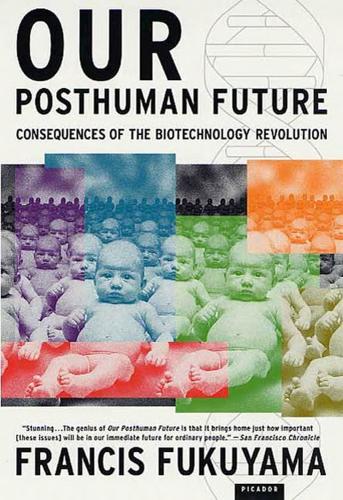
Our Posthuman Future: Consequences of the Biotechnology Revolution
by
Francis Fukuyama
Published 1 Jan 2002
This is not because technology promotes political freedom and equality per se—it does not—but because late-twentieth-century technologies (particularly those related to information) are what political scientist Ithiel de Sola Pool has labeled technologies of freedom.8 There is no guarantee, however, that technology will always produce such positive political results. Many technological advances of the past reduced human freedom.9 The development of agriculture, for example, led to the emergence of large hierarchical societies and made slavery more feasible than it had been in hunter-gatherer times. Closer to our own time, Eli Whitney’s invention of the cotton gin made cotton a significant cash crop in the American South at the beginning of the nineteenth century and led to the revitalization of the institution of slavery there. As the more perceptive critics of the concept of the “end of history” have pointed out, there can be no end of history without an end of modern natural science and technology.10 Not only are we not at an end of science and technology; we appear to be poised at the cusp of one of the most momentous periods of technological advance in history.
…
Planned Parenthood Castro, Fidel Catholic Church Cavalli-Sforza, Luigi Luca Celera Genomics cell division cells, ageing of germ cells CHADD (Children and Adults with Attention Deficit/Hyperactivity Disorder) characteristics, continuum of Chernobyl children drugging of interests of, safeguarded by parents parents’ desire to maximize the happiness of rights of, limitations on chimeras, creation of chimpanzees genome of, overlap with human genome China Chomsky, Noam Christianity chromosomes, artificial Ciba Seeds class war, biotechnology and Clinton administration cloning of animals biological harm of harm to cloned child legality of moral objections to reproductive, proposed ban on research therapeutic cocaine Codex Alimentarius Commission cognition innate forms of species-typical forms of Colapinto, John Cold War Collins, Francis color, perception of Columbine High School shooters communism failure of communitarian life plans compassion, the word competitiveness and cooperativeness, co-evolution of complex adaptive systems predicting the behavior of computers, consciousness in, possibility of Confucianism consciousness as source of human dignity conservatives. See Right, the “Controllers” Convention on Biological Diversity (Rio Treaty) Convention on Human Rights and Dignity with Regard to Biomedicine cooperativeness Coordinated Framework for Regulation of Biotechnology cosmetic pharmacology Costa Rica cost-benefit analysis cotton gin Council of Europe courts, U.S., regulation by creationism Creutzfeldt-Jacob disease crime and genetics life course theory of as socially constructed category as utilitarian choice crimes against humanity criminals, rights of, limited by society cross-cultural anthropology Cuba, socialist revolutions in cultural anthropology cultural learning cultural relativism Cultural Revolution (China) cultural universals culture of animals human cystic fibrosis Daly, Martin Damasio, Antonio Danish Twin Register Darwin, Charles Darwinism dead bodies, proposed uses for death, as preventable Declaration of Independence Declaration of the Rights of Man and the Citizen Decree by the Council of Europe on Human Cloning defense spending democracies (capitalist, liberal) laws of rights as basis of worldwide success of democracies (generally) failure to abolish social hierarchies history of legitimacy of decisions of tyranny of the majority in demographics of age distribution and international relations Denmark Dennett, Daniel deontological theories of right deregulation movement Descartes, René “designer babies” fads possible in developed world, feminization of developing countries, age demographics of de Waal, Frans diabetes Diagnostic and Statistical Manual of Mental Disorders (DSM) Diamond, Jared diet American low-calorie Diller, Lawrence Dingell, John diseases, disorders, pathologies of ageing genetically linked single-gene as social construct distribution curves, bell shaped DNA damage to human DNA chip (Affymetrix) doctors, relying on advice from Dolly the sheep dominance hierarchies dopamine systems Douglas, William O.

AI Superpowers: China, Silicon Valley, and the New World Order
by
Kai-Fu Lee
Published 14 Sep 2018
But each time, increasing productivity has paired with the magic of the market to smooth things out. Economists who look to history—and the corporate juggernauts who will profit tremendously from AI—use these examples from the past to dismiss claims of AI-induced unemployment in the future. They point to millions of inventions—the cotton gin, lightbulbs, cars, video cameras, and cell phones—none of which led to widespread unemployment. Artificial intelligence, they say, will be no different. It will greatly increase productivity and promote healthy growth in jobs and human welfare. So what is there to worry about? THE END OF BLIND OPTIMISM If we think of all inventions as data points and weight them equally, the techno-optimists have a compelling and data-driven argument.
…
THE END OF BLIND OPTIMISM If we think of all inventions as data points and weight them equally, the techno-optimists have a compelling and data-driven argument. But not all inventions are created equal. Some of them change how we perform a single task (typewriters), some of them eliminate the need for one kind of labor (calculators), and some of them disrupt a whole industry (the cotton gin). And then there are technological changes on an entirely different scale. The ramifications of these breakthroughs will cut across dozens of industries, with the potential to fundamentally alter economic processes and even social organization. These are what economists call general purpose technologies, or GPTs.
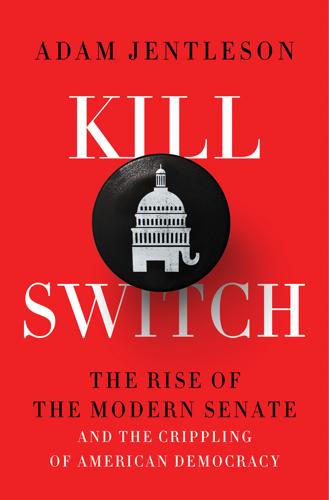
Kill Switch: The Rise of the Modern Senate and the Crippling of American Democracy
by
Adam Jentleson
Published 12 Jan 2021
For a while, it looked like slavery was bound to remain contained. In 1787, the Northwest Ordinance passed unanimously, banning slavery in the Midwest; southerners supported it for several reasons, but mainly they were focused on protecting slavery within the South, not expanding it. But in 1794 the cotton gin was invented, making cotton farming massively profitable. In 1815 the Napoleonic wars ended, reopening trade routes with Europe. By the 1830s, the South had a massively profitable cash crop and an enormous market in which to sell it. But it lacked a national leader. And the threats were coming from all sides: the global abolitionist movement drove Britain to ban slavery in its colonies in 1833, freeing more than eight hundred thousand enslaved people.
…
Federal Election Commission, 218–20, 228, 231 civil rights busing bills, 244 cloture votes, 70, 71 election of 1960, 104–5 Electoral College elimination battle, 242 filibuster used to oppose, 243 Jesse Helms and, 140 and 1948 Democratic platform, 73–74 Nixon and, 97–99, 131 and obstructionism in Senate, 3–4 and Rule 22, 71 Richard Russell and, 71–73, 76 Civil Rights Act (1957), 92–94, 99–104 Civil Rights Act (1960), 104 Civil Rights Act (1964), 103, 105–8 civil rights bills, 67, 70, 77, 249 Clark, Ed, 164 Clark, Joseph, 92 Clay, Henry and Calhoun’s bank bill filibuster, 50–52 and “corrupt bargain,” 33, 48 duel with John Randolph, 49 and election of 1824, 32–33 informal leadership in Senate, 159 and minority rights, 112 and nullification, 49–50 and origin of filibuster, 50 and rules reform, 108, 115 Cleland, Max, 172 clerks, Senate, 160 climate change, 13 Clinton, Bill, and administration, 118 Clinton, Hillary election of 2008, 174 election of 2016, 130, 225 and Merrick Garland appointment battle, 229 as villain in Republican fundraising ads, 218–19 and “war room,” 172 cloture and Civil Rights Act (1964), 106–7 and Electoral College elimination battle, 242 and McConnell’s obstruction of Obama, 212 motions as metric for counting filibusters, 276–77 and 1957 civil rights bill, 103 and nuclear option vote, 119 revised threshold for, 210 Rule 22 and, 65–66, 68–69 and rules reform, 80 and unlimited debate, 69–70 Coelho, Tony, 170–71 Colby, William, 184–85 Collins, Susan, 214 Commerce Committee, 217 committee assignments, 160–61, 215, 221 Common Cause, 192 communism, McCarthy and, 89–90 concurrent majorities, 57 Confederacy, 37 Congressional Club, 145, 148, 149 Congressional Quarterly, 121 Congressional Review Act (CRA), 232 Connally, Tom, 69, 70 Conscience of a Conservative (Goldwater), 147 conservative evangelicals, 150 Constitutional Convention debate over legislative houses, 9 debate over states’ representation in Congress, 25–27 and Madison’s view of minority rights, 23–26 and Senate’s minority protections, 10 southern states’ advocacy of supermajority threshold, 66–67 and weaknesses of Articles of Confederation, 23 Constitution of the United States of America; see also specific amendments appointments clause, 116 Articles of Confederation’s flaws addressed by, 22–23 majority rule as central to Framers’ case for adoption of, 28 Consumer Financial Protection Bureau (CFPB), 117, 202 Cook, Marlow, 188 “cooling” function of Senate, 45 Corcoran, Tommy, 163 Cordray, Richard, 117, 202 Corker, Bob, 215 Cornyn, John, 190 corporate donors, 170, 237 “corrupt bargain,” 33, 48 corruption and Citizens United decision, 219 in late 1800s, 59 John McCain and, 194 and McConnell v. FEC, 198 Senate disputes with McCain over definition of, 196–97 during Trump administration, 235 Corruption in America (Teachout), 197 Cortez Masto, Catherine, 156, 180 Cotton, Tom, 122–23, 125, 126 cotton gin, 35 Covington and Burling, 144–45 Cox, Archibald, 184 CRA (Congressional Review Act), 232 Craig, Maureen, 132 Cranston, Alan, 146, 193 Credit Mobilier scandal, 59 Crenshaw, Dan, 21 Crist, Charlie, 137–38 Crossroads GPS, 219 Cruz, Ted and battle for Scalia’s replacement, 226 election of 2010, 138 election of 2016, 225 election of 2018, 297 as obstructionist, 126 and Republican push to defund Obamacare, 136 and Tea Party tensions with McConnell in Senate, 224 and 2013 government shutdown, 152 C-SPAN2, 7–8 culture wars, Jesse Helms and, 150 D’Amato, Alfonse, 146 dark money, 227 Dark Money (Mayer), 187 Daschle, Tom, 172, 179 Dauster, William, 119, 182 Davis, Mike, 231–32 Days of Fire (Baker), 173 DCCC (Democratic Congressional Campaign Committee), 170 “death panels,” 216 debate; see also unlimited debate decline in quality in 1800s, 59 limits in original Senate rules, 45 and majority rule, 248 restoration as key to Senate reform, 246–47 “Declaration of Constitutional Principles” (Southern Manifesto), 95 Defending the Filibuster: The Soul of the Senate (Dove), 191 Delaware, 26, 127 DeMint, Jim, 137, 138 democracy, Framers’ understanding of term, 22 “Democratic Alternatives: A Look at the Record,” 169–70 Democratic National Convention (1948), 73–74 Democratic National Convention (1956), 96 Democratic National Convention (2004), 208 Democratic Party and abortion rights, 130 John Calhoun and, 34 control of both houses of Congress after 2006 election, 204–5 control of House (1933–1995), 168 control of Senate (1955–1981), 168 election of 2006, 125 election of 2010, 154 election of 2018, 236, 297 ideological composition in 1940s, 72 ideological split in 1950s, 91 and Johnson’s presidential aspirations, 87 mainstream liberal parties in other countries compared to, 132 shift in racial views of voters, 131 South as stronghold of, 71 Democratic Party caucus, 165–67 Democratic Policy Committee (DPC), 161–62, 170, 180 Democratic senators and anti–poll tax bill, 74 campaign fundraising, 170–71 conservatism in 1950s, 123 Democratic leader position created, 160 election of 1952, 161 election of 2006, 204–5 election of 2016, 230 filibusters against George W.
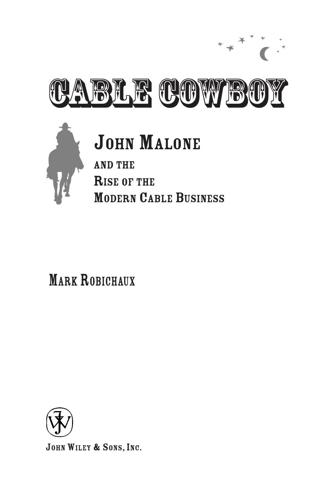
Cable Cowboy
by
Mark Robichaux
Published 19 Oct 2002
If Magness didn’t do something dramatic—like land John Malone to lead him out of this mess—he was in danger of losing TCI to a hostile takeover, or worse, to those bastards at the banks. Magness had hated bankers almost from the moment he had gotten into the cable business. He had discovered the fledgling industry in a chance encounter on a summer afternoon in 1952, when he gave two strangers a ride after meeting them in a cotton gin outside Memphis, Texas. Magness was a 28-year-old cottonseed buyer at the time with blue eyes and a smile that revealed a wide gap between his two front teeth. On the rare occasion that he spoke, his voice was flat, slow, and deliberate. He was shy and shrewd, two traits that came in handy in the cotton business, in which buyers gave cottonginners a fixed price for seeds, then sold them to cottonseed oil mills.
…
He and Betsy raised cattle part-time, but cotton was his career. Magness learned to listen instead of talk, and within a short time he could read a customer like a poker player, anticipating what that person wanted from the deal moments into negotiation. On that afternoon in 1952 when he unwittingly started on his cable career, Magness had walked into a cotton gin near Memphis, Texas, to do a little business. He knew most of the men there but 9486_Robichaux_01.f.qxd 8/28/02 9:53 AM Page 7 License to Steal couldn’t place the two men talking to the ginner. He surmised from the conversation that their pickup truck had thrown a rod as they were driving back to Paducah, Texas, and that they were stranded at the gin.

A People's History of the United States
by
Howard Zinn
Published 2 Jan 1977
From 1860 to 1900 the population of the United States grew from 31 million to 75 million; now 20 million people lived west of the Mississippi, and the number of farms grew from 2 million to 6 million. With the crowded cities of the East needing food, the internal market for food was more than doubled; 82 percent of the farm produce was sold inside the United States. Farming became mechanized—steel plows, mowing machines, reapers, harvesters, improved cotton gins for pulling the fibers away from the seed, and, by the turn of the century, giant combines that cut the grain, threshed it, and put it in bags. In 1830 a bushel of wheat had taken three hours to produce. By 1900, it took ten minutes. Specialization developed by region: cotton and tobacco in the South, wheat and corn in the Midwest.
…
William Faulkner, in his novel The Hamlet, described the man on whom southern farmers depended: He was the largest landholder . . . in one county, and Justice of the Peace in the next, and election commissioner in both. . . . He was a farmer, a usurer, a veterinarian. . . . He owned most of the good land in the county and held mortgages on most of the rest. He owned the store and the cotton gin and the combined grist mill and blacksmith shop. . . . The farmers who could not pay saw their homes and land taken away. They became tenants. By 1880, 25 percent of all farms were rented by tenants, and the number kept rising. Many did not even have money to rent and became farm laborers; by 1900 there were 41⁄2 million farm laborers in the country.
…
That is why so much of the talk of farmers’ movements in those days had to do with putting more money in circulation—by printing greenbacks (paper money for which there was no gold in the treasury) or by making silver a basis for issuing money. It was in Texas that the Farmers Alliance movement began. It was in the South that the crop-lien system was most brutal. By this system the farmer would get the things he needed from the merchant: the use of the cotton gin at harvest time, whatever supplies were necessary. He didn’t have money to pay, so the merchant would get a lien—a mortgage on his crop—on which the farmer might pay 25 percent interest. Goodwyn says “the crop lien system became for millions of Southerners, white and black, little more than a modified form of slavery.”
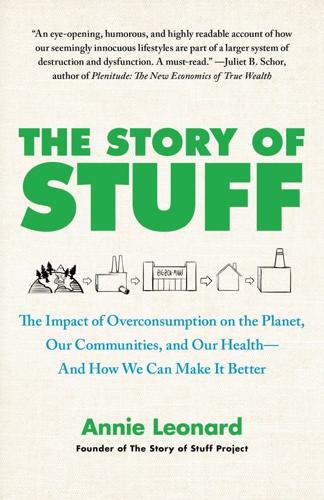
The Story of Stuff: The Impact of Overconsumption on the Planet, Our Communities, and Our Health-And How We Can Make It Better
by
Annie Leonard
Published 22 Feb 2011
I’m not against Stuff. In fact, I’m pro-Stuff! I want us to value our Stuff more, to care for it, to give it the respect it deserves. I want us to recognize that each thing we buy involved all sorts of resources and labor. Someone mined the earth for the metals in your cell phone; someone unloaded the bales from the cotton gin for your T-shirt. Someone in a factory assembled that pair of sunglasses, and they might have been exposed to carcinogens or forced to work overtime. Someone drove or flew this bouquet around the country or the world to get it to you. We need to understand the true value of our Stuff, far beyond the price tag and far beyond the social status of ownership.
…
Pesticide poisoning remains a daily reality among agricultural workers in developing countries, where up to 14% of all occupational injuries in the agricultural sector and 10% of all fatal injuries can be attributed to pesticides.”19 To top it all off, at harvest time the plants are sprayed with toxic chemical defoliants that strip off the leaves so they don’t stain the fluffy white bolls and so the bolls are more accessible to the mechanical pickers or “strippers.”20 We’ve now left the cotton fields, but we’re still not even close to the finished product: my T-shirt. Taking the raw cotton and turning it into fabric requires a whole litany of industrial processes. The energy-sucking machines involved include a cotton gin that separates the fiber from the seeds, stems, and leaves, followed by machines that bundle the fibers into bales so they can be transported elsewhere, where more machines undo the bales, fluff the cotton, and press it into sheets called laps. Then come carding, combing, drawing, and spinning machines, which produce cotton thread.

The Wizard of Menlo Park: How Thomas Alva Edison Invented the Modern World
by
Randall E. Stross
Published 13 Mar 2007
Who would have guessed that the announcement of the phonograph’s invention would be sufficient to propel him in a matter of a few days from obscurity into the firmament above? Any one of dozens of technical breakthroughs that had come before had much greater impact on the U.S. economy. Their creators were more likely candidates for the top rank of fame. Eli Whitney’s cotton gin, or his muskets made with interchangeable parts, Robert Fulton’s steamboat, John Jethro Wood’s iron-tipped plough, Cyrus McCormick’s reaper, Charles Goodyear’s rubber-manufacturing process, Samuel Morse’s telegraph, Elisha Graves Otis’s elevator, Lucien Smith’s barbed wire, and Alexander Graham Bell’s telephone, which appeared one year before the phonograph—these were prior inventions that fundamentally changed the U.S. economy.
…
It was Cummings, his employer, the New York Sun, and its readers who jointly conspired to create a mythic inventor hero to suit their craving for a larger-than-life, yet accessible, figure. For everyone who was not an engineer, this was a time when technology seemed to be both overwhelming and increasingly incomprehensible. The cotton gin’s workings had been transparent; the telephone’s were not. If the latest technology itself could not be explained, at least the inventor could be rendered in terms that made him accessible and appealing as a person. At the same time, it was entertaining to view him as endowed with extraordinary power.

The Warmth of Other Suns: The Epic Story of America's Great Migration
by
Isabel Wilkerson
Published 6 Sep 2010
He landed at an old colored school called Leland College in New Orleans, where he met a preacher’s daughter named Ottie. They graduated from Leland in 1905 and married the same year. They had big plans for themselves just as Jim Crow was closing doors on them. They set out to teach far from New Orleans, in a moated land of cotton gins and oak trees dripping plant feathers between the Ouachita River and the bayou. An opportunity had arisen in Monroe, an old mill town near the upper brim of the Louisiana boot, not far from where the shoelaces would be. Monroe was three counties west of Mississippi, seventy-five miles from Vicksburg.
…
Ida Mae looked in the direction Talma was facing and tried to see the people in white but couldn’t. Days later, at Talma’s funeral, the choir sang in all white. “She saw them before,” Ida Mae said, convinced of it. Ida Mae and I are driving along Route 8, heading east toward Vardaman in the direction of Chickasaw County. We pass a cotton gin and bales of cotton bound in the field and covered with tarp. The bales are packed high and tight and look like cubes of Styrofoam the size of a school bus from a distance. We cross a gravel road with cotton on either side of it. “That cotton’s loaded,” Ida Mae said, her eyes growing big. “Let’s go pick some.”
…
No cars or trucks pass by, and we are surrounded by cotton. We carry a bouquet of cotton buds back to the car and head to her sister-in-law Jessie Gladney’s house. Along the route, there are no streetlights, traffic lights, or stop signs. There are no street signs to identify what road you are on. The directions to the house call for looking for a cotton gin, passing and keeping count of five or six bridges that are merely dirt mounds over dry creek beds, making a right at a Baptist church, and looking for the sister-in-law’s off-white double-wide on the right-hand side of the road, assuming we’re on the correct one. Jessie is Ida Mae’s sister-in-law twice over, in the small, insular circles of rural Mississippi.

The Age of Turbulence: Adventures in a New World (Hardback) - Common
by
Alan Greenspan
Published 14 Jun 2007
.* Before World War I, markets in the United States were essentially uninhibited by government regulations, but were supported by rights to property, which in those years largely meant physical property. Intellectual property—patents, copyrights, and trademarks—represented a far less important aspect of the economy. One of the most significant inventions of the nineteenth century was the cotton gin: perhaps it was a sign of the times that the cotton gin design was never effectively protected. Only in recent decades, as the economic product of the United States has become so predominantly conceptual, have issues related to the protection of intellectual property rights come to be seen as significant sources of legal and business uncertainty.
…
Congressional Budget Office (CBO), 183, 184, 213-14,217,242-43 Congress Party, Indian, 318, 321 Conrad, Kent, 2 1 9 - 2 1 , 2 3 6 Conservative Party, British, 282-83 Constitution, U.S., 90, 343, 344n, 373, 468 consumer price index (CPI), 62, 481-82, 483 consumers, consumption, 124n, 386, 387-88 confidence of, 114,207 profits and, 368 short-term debt of, 346^17 Soviet, 127, 128n consumer spending, 10, 13, 14, 69-70, 153, 166, 207 Category 5 recession and, 67 inflation and, 66 9/1 l's effects on, 5, 229-32 ratio of income to, 269-70 Continental Illinois Bank, 109 contracts, 256, 319n, 379, 451 "Contract with America," 156 "conundrum," the, 377-91 downward pressures on wages and, 381-84 globalization and, 378-81 interest rates and, 377-78, 3 8 0 - 8 1 , 382, 383-85, 387-88,390-91 use of word, 381 Coors Brewing Company, 50 copper, 42, 257 corn ethanol, 461 Corn Laws, 264 corporate governance, 278, 4 2 3 - 3 6 AG's role in, 77-80, 100, 101, 209, 3 7 1 , 427-28 authoritarianism in, 424-25, 429, 431-32, 436 Sarbanes-Oxley and, 430-31 shareholder role in, 424-25, 4 3 5 - 3 6 "corporate university," 402 Corrigan, Gerry, 103, 105, 106, 108, 134 corruption, 126, 254, 302, 317, 337, 388-89 freedom from, 275-76, 388, 389 in Russia, 325, 327 Costello, Peter, 293 Cost of Living Council, 62 cotton, 62 Cotton Counts Its Customers, 32 cotton gin, 495 C 0 2 emissions, 453, 454-55, 458 Council of Economic Advisors (CEA), 54, 6 1 , 236, 249-50,279,446-47,494 AG as chairman of, 63-76, 373 description of, 64 counterparty surveillance, 3 7 0 - 7 1 , 373, 489 creative destruction, 4 8 - 5 1 , 127, 174, 282, 285, 401,504 buffers against, 279, 280 in China, 254, 304 corporate governance and, 432, 436 deregulation and, 72-73 516 More ebooks visit: http://www.ccebook.cn ccebook-orginal english ebooks This file was collected by ccebook.cn form the internet, the author keeps the copyright.

The Blood of Heroes: The 13-Day Struggle for the Alamo--And the Sacrifice That Forged a Nation
by
James Donovan
Published 14 May 2012
So upon Santa Anna’s rise to power and his severe curtailment of the Texians’ rights as guaranteed by the Mexican constitution of 1824, Andrew became increasingly active in politics and supportive of independence—his father, after all, had fought in the American Revolution for similar reasons. He would not accept the possibility of losing everything he had worked so hard for. When a secret meeting was called in July 1835 among the citizens living on the Lavaca and Navidad Rivers, Kent rode thirty-five miles to a neighbor’s cotton-gin house to discuss Santa Anna’s policies and debate their response. The farmers present put their names to a declaration calling for armed resistance to military occupation. A few months later Andrew and Davy Kent rode with Stephen Austin’s Army of the People to Béxar. Father and son participated in the long siege and battle there, but made it home for Christmas, Davy with a slight wound in his shoulder.
…
Smith volunteered to guide them into the Alamo—he knew the area well, and now that he had found his family safe in Gonzales, he felt able to go. They came up with a plan to bypass the regiment of lancers stationed to the east of the compound. To avoid the Mexican mounted patrols, the volunteers would take the mill road, which led up to Joseph Martin’s cotton gin and mill and then veered west to Béxar. It was not as well marked or well traveled as Byrd Lockhart’s lower road, but it approached Béxar above the town, near the river, which was the least-patrolled area when Albert Martin had left. With any luck, they could sneak down the river to the Alamo. At two o’clock in the afternoon, they rode out of Gonzales, crossed the San Marcos River, and followed the Guadalupe River west past Green DeWitt’s land and the old mill that had been abandoned after Indian trouble a few years back.
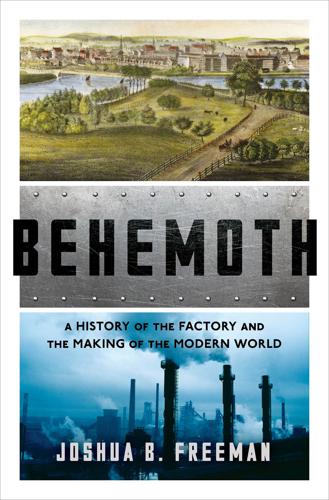
Behemoth: A History of the Factory and the Making of the Modern World
by
Joshua B. Freeman
Published 27 Feb 2018
In the late eighteenth century, Britain imported cotton from all over the world, including Asia and various parts of the Ottoman Empire. Supply lagged behind demand, leading to the increasing cultivation of cotton in the Americas using slave labor, first in the West Indies and South America and then, after the introduction of Eli Whitney’s cotton gin (patented in 1794), in the southern United States. By the early nineteenth century, over 90 percent of the cotton used in Britain was grown by slaves in the Americas. As British textile production exploded, cotton growers in the United States moved westward into the Mississippi River valley, where a brutal empire arose on the labor of enslaved Africans (“food for the cotton-field,” Frederick Douglass called them).
…
See social status and class Classic Landscape (Sheeler), 152–53 Cleveland, Ohio, 116, 149, 163–64, 238, 242 Coburn, Alvin Langdon, 149 Cold War mass production in Eastern Europe decentralization and downsizing, 264–65 factory construction, 253–54, 257 model industrial cities, 249–57 Nowa Huta steelworks, 249, 251–65, 253, 255, 387n politicized working class, 257–64 shrinkage of workforce, 264–65 urbanism, 250–51, 254 valorization of industry and workers, 249–50 in Egypt, 268–69 in Germany, 265–67 legacy of giant factories, 320 in Soviet Union automotive industry, 246–48 convergence theory, 226–27 post-WWII reconstruction, 245–46 scientific and atomic cities, 246 tractor industry, 246 Western assistance, 247 in United States convergence theory, 226–27 decentralization and downsizing, 227–28, 235–44, 382n loss of interest in industrial workers, 244–45 military giantism, 228–33 post-WWII sale of plants, 238 productivity increases, 243 shrinkage of workforce, 240–41, 243–45 trade unions and labor organization, 233–42 Colt, Samuel, 123 Columbian Exposition (1893), 85 Coming of Post-Industrial Society, The (Bell), 244–45 Committee for Industrial Organization (CIO), 163–68 Commons, John L., 112 Communist Manifesto, The (Marx and Engels), 42 company housing and villages boardinghouse model, 54, 55, 61–62, 65–66, 74–75 in China, 278, 285–87, 300, 304–5 Eastern European model industrial cities, 249–51, 253–56 iron and steel industry, 103–6 in Soviet Union, 192–93, 208–10, 246, 248, 373n, 385n company housing and villages (continued) textile industry, 18, 20, 53–54, 61–62, 65–66, 74–75, 334n WWII era, 230–32 company stores, 18, 46 compensation and wages, xv in China, 271, 286, 301 company store credit, 46 currency shortages, 18, 46 downward pressure on wages and living standards, 37 Ford Motor Company, 129–30, 132, 145–46 piecework, 6, 65, 108, 176, 178–79, 371n post-WWII, 234 productivity vs., 65–66 raising after bad publicity, 271, 389n reductions in, 65–66, 99–100, 163 sliding scale, 90, 100 truck, 18, 36 Waltham-Lowell system, 60 withholding, 308, 335n women and children, 23 Condition of the Working Class in England, The (Engels), 29–30, 41, 112, 337n Connecticut, 46, 68, 240, 347n Cook, Tim, 296 Cooper, Hugh L., 186 cooperatives, 10, 179, 224 Corliss engines, 80, 81, 350n Corn Laws, 31–32, 41 Cotton Factories, Union Street, Manchester (engraving), 28 cotton gin, 5 cotton industry, 4–8 age of workers, 23 architecture and construction of mills, 14–17 early American, 45–46 in Egypt, 268 England compared to New England, 43–44 environmental damage from, 27–28 fire danger, 15, 17 first giant factories, 7–10 import substitution, 5 limit of plant size, 13 living conditions, 29–30 machine wrecking, 35 Marx’s Capital and, 34 mechanization of, 7, 9 radical change in, 6–7 renting space and power to multiple employers, 10 rising demand for goods, 4–5, 46 slavery and, 5 technical demands of, 5–6 theories behind adoption of factory model, 10–13 working conditions, 23–27, 30–32 Cotton States and International Exposition (1895), 85–86 Council for Mutual Economic Assistance, 252 Couzens, James, 359n Cowie, Jefferson, 316–17 Coxe, Tench, 82 Criss-Crossed Conveyors—Ford Plant, 1927 (Sheeler), 152 Crockett, Davy, 68–69 Cromford, England, 7–8, 13–15, 17, 23, 36, 314, 333n–34n Crompton, Samuel, 7 croppers, 36–37 Crystal Palace Exhibition (1851), 84–85, 88, 93, 134, 291 Cuba, 161 Curtis-Wright Corporation, 229 Czechoslovakia, 249, 385n Daily Worker (newspaper), 161 Daimler AG, 248 Dalton, Massachusetts, 72 Daqing Oil Field, 277–78 Datang, China, 295 Davies, Stuart, 154 de Gaulle, Charles, 256 Dearborn, Michigan, 122, 137–38, 155, 242.
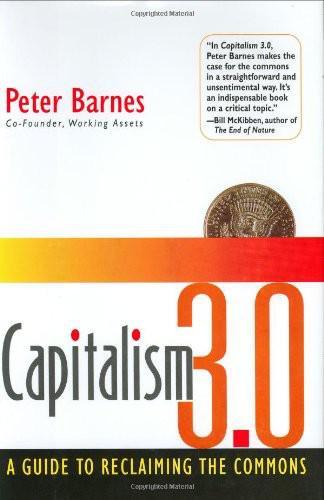
Capitalism 3.0: A Guide to Reclaiming the Commons
by
Peter Barnes
Published 29 Sep 2006
“As we enjoy great advantages from the inventions of others,” he wrote, “we should be glad to serve others by any invention of ours.” Thomas Jefferson, who served as first head of the U.S. Patent Office, believed the purpose of the office was to promulgate inventions, not protect them. He rejected Sharing Culture | 129 nearly half the applications submitted during his term. (Eli Whitney’s cotton gin made it through.) As with copyrights, this stringent approach to patents worked well for a long time. America didn’t lack inventiveness in the nineteenth and early twentieth centuries (and let it be remembered that we stole much of our early technology from the British). But from midcentury to the present, patenting has become a national pastime.
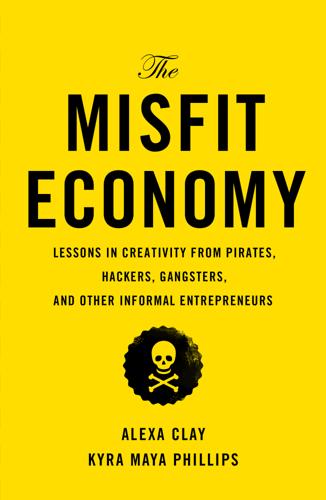
The Misfit Economy: Lessons in Creativity From Pirates, Hackers, Gangsters and Other Informal Entrepreneurs
by
Alexa Clay
and
Kyra Maya Phillips
Published 23 Jun 2015
They felt that the itch to invent was inborn. In a nod to collective innovation, they didn’t feel that any one inventor could or should claim credit or royalties when “there is no need to reward him who might be lucky enough to be the first to hit on the thing required.”20 Arriving at the invention of the steam engine or the cotton gin was attributed to right time, right place. If you hadn’t done it, well, someone else would have. You just got there first. It seems, then, that the patent system has always been an instrument of extraction, a collusion between the wealthy and their government. Historian Adrian Johns notes in his book Piracy: The Intellectual Property Wars from Gutenberg to Gates that these same anti-patent Englishmen felt that lower-class inventors were “hopeless in the face of big capital” due to the cost of patent fees, which in 1860 ranged from £100 to £120 (around $585), or approximately four times per capita income.
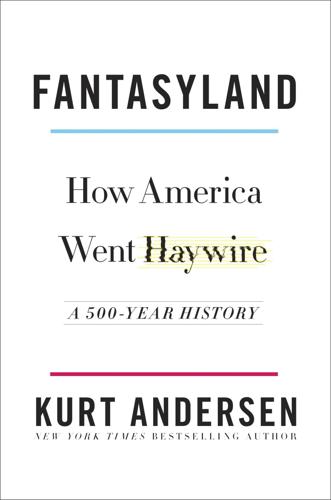
Fantasyland: How America Went Haywire: A 500-Year History
by
Kurt Andersen
Published 4 Sep 2017
They were rationalists and pragmatists, men who liked money and fine living but didn’t expect to get rich overnight by stumbling into some North American El Dorado. They produced our national mission statement (the Declaration of Independence) and operating manual (the Constitution). The war those documents book-ended was a modern one, concerning politics rather than religion, to replace a monarchy with a republic. The steamboat, the cotton gin, bifocals, a newspaper that still publishes today—all American innovations of the late 1700s. But that standard version of our eighteenth century, the march of progress starring Franklin, Adams, Jefferson, Washington, Hamilton, and (the atheist) Thomas Paine, is only part of the story, the most respectable part.
…
For Black America, they recruited five hundred “Southern Colored People”—“actual field hands from the cotton belt,” an advertisement promised—to occupy the 150 brand-new reproduction rustic slave cabins, and for two months they pretended to be enslaved, picking cotton bolls from a recently planted acre and processing them in a real cotton gin. Tens of thousands of white people watched “the labors that the Negroes of slavery days engaged in, and the happy, careless life that they lived in their cabins after work,” a New York Times reporter wrote. “A fat black mammy, with a red handkerchief on her head, sits outside one of the little cabins, knitting.”
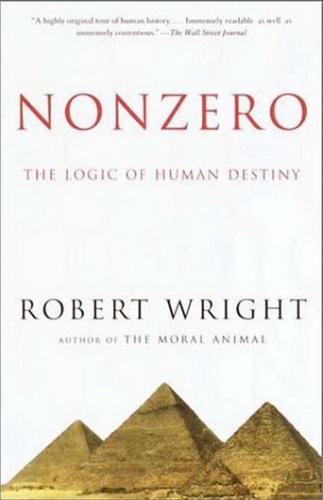
The Moral Animal: Evolutionary Psychology and Everyday Life
by
Robert Wright
Published 1 Jan 1994
Thus, the value of computer hardware “resides in the ideas rather than in their material embodiment.” Gilder has a point: you won’t recover much of the original cost of a new computer if you sell it as scrap metal. Then again, that’s also true—if a bit less so—for a new Buick. And it was true—if less so still—for a 1939 Buick. And for the cotton gin, and so on. The growing “designedness” of things is a by-product of technological evolution generally, not of the microelectronics revolution. Actually, the “ideas” that go into designed goods are only one of the reasons their value so exceeds the value of their raw materials. The other factor is labor—the meticulous assembly that subtle design often entails.
…
navigational technology: Roberts (1993), pp. 428–29, Gies and Gies (1995), pp. 23, 159. Roman mills: Evidence for the Roman use of the sawmill is dubious. See White (1964), pp. 82–83. new uses for mills: White (1964), p. 89; Cipolla (1994), pp. 140–43. French fullers: Cipolla (1994), pp. 140–43. windmill: Cipolla (1994), pp. 143–44; White (1964), p. 88. cotton gin: Gies and Gies (1995), pp. 118–23. “rings, belts, and pins”: Gies and Gies (1995), p. 123. prayed, fought, labored: Cipolla (1994), p. 118; Craig et al. (1990), p. 372. abacus: Gies and Gies (1995), p. 159. “God shall have granted”: Cipolla (1994), pp. 161–62. new ancillary metatechnologies: Cipolla (1994), pp. 160, 163.

A Clearing in the Distance: Frederick Law Olmsted and America in the 19th Century
by
Witold Rybczynski
Published 1 Jan 1999
Shortly after the turn of the century, the African slave trade had been prohibited (although it continued illicitly), and all the Northern states had either abolished slave-owning or adopted measures to gradually eradicate it. But slavery did not die out. Because of the widespread adoption of Whitney’s mechanical cotton gin (invented in 1793), cotton cultivation in the Southern states became highly profitable. Since cotton plantations depended on slave labor, the demand for slaves went up. Instead of dying a natural death, as many of the Founding Fathers had hoped, slavery revived. Between 1800 and 1850, the slave population of the United States went from less than 1 million to almost 3 million.
…
Connecticut: blacks in, 106 landscape of, 34, 87 religious revival in, 63–64 Connecticut Courant, 30, 31, 32, 61 Connecticut Mirror, 31 Connecticut River, 30, 34, 40, 46, 50, 284 Conness, John, 238 Conran, Terence, 65 Constitution, U.S., 106 contrabands, 197, 205 Cook, Sarah, 64 Coolidge, Charles A., 371, 377, 378n Coon, Henry P., 274, 275 Cooper, Peter, 156 Copeland, Robert Morris, 163, 164, 342 Cornell, Ezra, 285 Cornell University, 285, 308, 368 Cottage Residences (Downing), 65 cotton, 105, 118, 123, 132, 196, 205 cotton gin, 105 Cotton Kingdom, The (Olmsted), 195–97 Cotton Supply Association, 148 Coulter, George, 257 Country Park, 362–64 cowboys, 126 Crimean War, 197, 213, 219 Croes, John James Robertson, 328, 329 Croton Aqueduct Board, 187 Crystal Palace, 93n, 167 Cuba, 147 Cultivator, 60, 65 Culyer, John Y., 276 Cummings Evening Bulletin, 101 Curtis, George William, 137, 142, 145, 149, 150, 192, 206 Daily News (London), 141, 219 Dalton, Charles, 341–42 Damrosch, Walter, 393 Dana, Charles A., 137, 174, 221, 222–23 Dana, Richard Henry, 48, 49, 51, 54, 55, 95 Daniels, Howard, 163, 164 Daniel Webster (ship), 208, 210 Davis, Alexander Jackson, 74, 75, 292 Davis, Henry, 73 Davis, Jefferson, 196–97 Davis, Joseph P., 276 Day, Ellen, 72, 82 Day, Mary, 72, 82 Day, Olivia, 64 Declaration of Independence, 121 Deer Isle, 406–7, 409 Delaware Park, 287–89, 298 Democrats, Democratic party, 148, 332, 367 Central Park and, 151, 155, 157, 158, 159, 164, 171, 173, 355 in election of 1864, 237–38 de Olmstede family, 86n department stores, 24 Derby Arboretum, 180 Detroit, Mich., Belle Isle in, 350–51, 352, 358 Dickens, Charles, 32, 136, 142 Dillon, Robert, 173–75 disease: seafaring and, 50, 52, 53, 55 urban, 32 see also specific diseases Dix, Edwards & Company, 136–49 book publishing of, 136, 138–42, 145–49 British relations of, 142–45 finances of, 134, 138, 144, 145, 149 magazine publishing of, 134, 136–38, 143, 144, 145, 149 Dix, Joshua, 134, 136, 142–45, 149 Dodge Brothers, 240, 248, 251 Dorsheimer, William, 285–88, 298, 304, 327, 369–70 Douai, Adolf, 130, 133, 134, 138 Douglas, John Hancock, 201, 202 Douglas, Stephen A., 125, 133 Downing, Andrew Jackson, 65–66, 70, 80, 152, 292 as arbiter of taste, 65, 81 death of, 101–2, 161 FLO’s correspondence with, 92 Horticulturist and, 65, 66, 74, 92–94, 101 New York parks and, 94, 102, 151, 157, 162, 165, 167, 168 nursery of, 65, 71, 74, 162 Vaux and, 161–62, 165, 169, 369–70 Downing, Mrs., 167 drainage systems, 84, 86, 92, 93, 159, 176, 177, 342–44 Dred (Stowe), 110n Dred Scott decision, 148 Dresden, 143, 144 drovers, 126 drugs, 24, 37 dry-goods stores, 24, 30, 42, 43, 144 Eagleswood Military Academy, 29–30 Eastern Parkway, 283, 308 East Hartford, Conn., 24, 26, 27, 38 Eaton Hall, 87, 99, 181 École des Beaux-Arts, 303, 307, 350, 354, 388 Edinburgh Review, 141, 143 Edison, Thomas, 91 Edisto, 205–6 education: as book learning, 29 high school, 25–26 of slaves, 117–18 see also specific schools Edwards, Arthur, 137, 138, 144–45, 149 Eidlitz, Leopold, 327, 348, 367 Eiffel, Gustave, 387 elections: of 1852, 107 of 1860, 196 of 1864, 237–38 of 1872, 312 Eliot, Charles, 354, 357, 370, 392, 395–96, 400, 401, 404 death of, 409 FLO’s correspondence with, 406, 407 Eliot, Charles W., 410 Ellicott, Andrew, 288, 289, 320 Ellicott, Joseph, 288 Elliott, Charles Wyllys, 150–52, 155, 157, 159, 162, 222 Elliott, Ezekiel Brown, 201, 254 Ellsworth, Oliver, 48 Elm City (ship), 210 emancipation, 106, 120, 121, 191, 206 see also abolitionists Emancipation Proclamation, 205, 215n Emerald Necklace, the, 360 Emerson, Ralph Waldo, 80, 98n, 137, 142, 190, 279, 341, 363 Emerson, William, 78, 150, 192 Emerson, William Ralph, 409 Engineer Corps, 175, 176, 184 Englishman in Kansas, The (Gladstone), 148–49 Entepfuhl, 69n Episcopalianism, 67 Erie, Lake, 287 Erie Canal, 285 Errington, Miss, 235, 237 Essay on the Picturesque (Price), 29 Examiner (London), 141 Fairmount, 64–67, 69 Fairmount Park Commission, 308 Fair Oaks, battle of (1862), 210–11, 212 Fairstead, 351, 353, 365–66, 374, 385, 406, 409, 410, 411 Fall River, Mass., 308 farming, farms, 58–60, 69–84, 113, 114, 116 risks of, 81 scientific, 60–61, 64–66, 76, 82, 83, 86, 176 see also Sachem’s Head; Tosomock Farm Fashion Plantation, 111, 112, 113, 120, 122, 218 Felsted, 409 Field, Alfred, 333 Field, David Dudley, 156, 223 Fillmore, Millard, 287 Finley, Clement A., 204, 206, 207 First Congregational Church, 175, 199 Fischer, William L., 361 Fitzgerald, F.

Mr Five Per Cent: The Many Lives of Calouste Gulbenkian, the World's Richest Man
by
Jonathan Conlin
Published 3 Jan 2019
Turks and Arabs did not see these skills as important. To the vast majority of the Sultan’s subjects, including Armenian farmers and shepherds on the plain of Adana or around Lake Van, they probably were not very useful. There was enough work to fill the daylight hours without worrying about steamships, cotton gins or even better breeds of angora sheep. Well travelled, well educated, polyglot and bred to trade, the Gulbenkians and their fellow amiras of Istanbul were perfectly positioned to channel western European investment and technology and set it to work across the Ottoman Empire. Whether they were interested in a true Ottoman cosmopolitanism, a new culture that might supplant their Armenian one, is far less evident.
…
Unlike Calouste, however, he then returned to Istanbul rather than attending a British school.37 Sarkis insisted that Calouste remain in London.38 Calouste clearly returned at some point in the following year, as April 1893 found him sailing from Istanbul to Adana on the Guadalquivir. In Adana, in south-eastern Anatolia, Calouste arranged for a British engineer to come out and install new cotton-ginning equipment in the family’s cotton works.39 By the end of the year his father was dead, and as the eldest son he had to take charge. Sarkis left an estate worth just shy of £T (Turkish lira) 75,000 (£7.7 million), £T 8,000 of which went to his widow, while the rest was divided equally among his three sons.
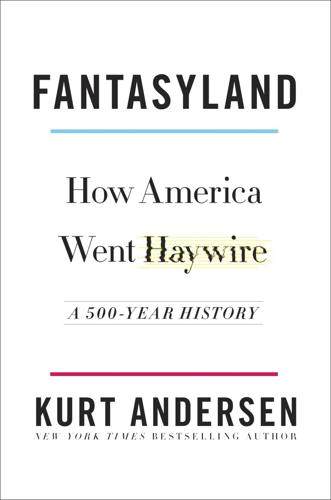
Fantasyland
by
Kurt Andersen
Published 5 Sep 2017
They were rationalists and pragmatists, men who liked money and fine living but didn’t expect to get rich overnight by stumbling into some North American El Dorado. They produced our national mission statement (the Declaration of Independence) and operating manual (the Constitution). The war those documents book-ended was a modern one, concerning politics rather than religion, to replace a monarchy with a republic. The steamboat, the cotton gin, bifocals, a newspaper that still publishes today—all American innovations of the late 1700s. But that standard version of our eighteenth century, the march of progress starring Franklin, Adams, Jefferson, Washington, Hamilton, and (the atheist) Thomas Paine, is only part of the story, the most respectable part.
…
For Black America, they recruited five hundred “Southern Colored People”—“actual field hands from the cotton belt,” an advertisement promised—to occupy the 150 brand-new reproduction rustic slave cabins, and for two months they pretended to be enslaved, picking cotton bolls from a recently planted acre and processing them in a real cotton gin. Tens of thousands of white people watched “the labors that the Negroes of slavery days engaged in, and the happy, careless life that they lived in their cabins after work,” a New York Times reporter wrote. “A fat black mammy, with a red handkerchief on her head, sits outside one of the little cabins, knitting.”
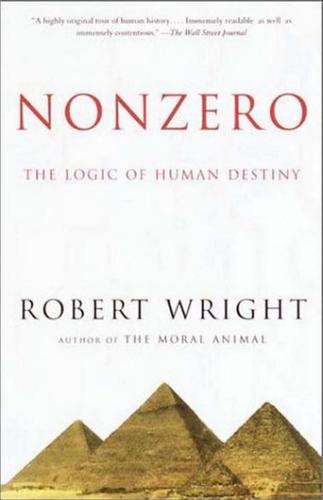
Nonzero: The Logic of Human Destiny
by
Robert Wright
Published 28 Dec 2010
Thus, the value of computer hardware “resides in the ideas rather than in their material embodiment.” Gilder has a point: you won’t recover much of the original cost of a new computer if you sell it as scrap metal. Then again, that’s also true—if a bit less so—for a new Buick. And it was true—if less so still—for a 1939 Buick. And for the cotton gin, and so on. The growing “designedness” of things is a by-product of technological evolution generally, not of the microelectronics revolution. Actually, the “ideas” that go into designed goods are only one of the reasons their value so exceeds the value of their raw materials. The other factor is labor—the meticulous assembly that subtle design often entails.
…
navigational technology: Roberts (1993), pp. 428–29, Gies and Gies (1995), pp. 23, 159. Roman mills: Evidence for the Roman use of the sawmill is dubious. See White (1964), pp. 82–83. new uses for mills: White (1964), p. 89; Cipolla (1994), pp. 140–43. French fullers: Cipolla (1994), pp. 140–43. windmill: Cipolla (1994), pp. 143–44; White (1964), p. 88. cotton gin: Gies and Gies (1995), pp. 118–23. “rings, belts, and pins”: Gies and Gies (1995), p. 123. prayed, fought, labored: Cipolla (1994), p. 118; Craig et al. (1990), p. 372. abacus: Gies and Gies (1995), p. 159. “God shall have granted”: Cipolla (1994), pp. 161–62. new ancillary metatechnologies: Cipolla (1994), pp. 160, 163.

Wealth, Poverty and Politics
by
Thomas Sowell
Published 31 Aug 2015
Here again, America’s antebellum South was an example: Techniques of Southern agriculture changed slowly, or not at all. So elementary a machine as the plow was adopted only gradually and only in scattered places; as late as 1856, many small farmers in South Carolina were still using the crude colonial hoe. There was little change in the cotton gin, gin house, or baling screw between 1820 and the Civil War.79 The cotton gin, a crucial factor in the economy of the antebellum South, was invented by a Northerner. When it came to inventions in general, only 8 percent of the U.S. patents issued in 1851 went to residents of the Southern states, whose white population was approximately one-third of the white population of the country.

Who Needs the Fed?: What Taylor Swift, Uber, and Robots Tell Us About Money, Credit, and Why We Should Abolish America's Central Bank
by
John Tamny
Published 30 Apr 2016
Thank goodness technology destroyed lots of agricultural work and freed up Americans to pursue a wide range of vocations off the farm. With their evolution as labor inputs, robots bring the promise of new forms of work that will have us marveling at labor we wasted in the past, and that will make past so-called job destroyers, like wind power, water power, the cotton gin, the car, and the computer, seem small by comparison. All the previously mentioned advances made lots of work redundant, but far from forcing us into breadlines, the destruction of certain forms of work occurred alongside the creation of totally new ways to earn a living. Robots promise a beautiful multiple of the same.

Enemy of All Mankind: A True Story of Piracy, Power, and History's First Global Manhunt
by
Steven Johnson
Published 11 May 2020
Herodotus took note of wild trees in India “which produce a kind of wool better than sheep’s wool in beauty and quality, which the Indians use for making their clothes.” From the beginning, cotton inspired technological innovation. The frescos in the legendary Ajanta Caves, dating back to roughly the same period, feature Indians working single-roller machines designed to extract the seeds from the cotton fibers, an early antecedent of Eli Whitney’s cotton gin. But the innovation that would most transform the subcontinent—and its economic relationship to the rest of the world—did not involve separating the seeds from their fibers; every society that domesticated cotton for textile use ultimately developed some kind of mechanical gin. What made Indian cotton unique was not the threads themselves, but rather their color.

Invisible Influence: The Hidden Forces that Shape Behavior
by
Jonah Berger
Published 13 Jun 2016
Given the difficulty of forming metal parts, any machines that did exist often used wooden components. Work was manual, hard, and often laborious. With the development of machine tools, the steam engine, and other technologies a slow, steady shift occurred. The flying shuttle, spinning jenny, and other tools allowed weaving to move out of the home and into larger, more dedicated factories. The cotton gin shrank a year’s worth of work into a week. Entrepreneurs began to nurture inventors to create new and more powerful machines. With these technological changes came a new social class. Not only did standards of living increase, so did social mobility. Until then, status had been relatively static.
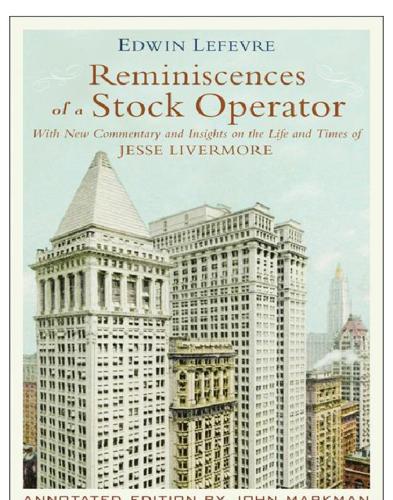
Reminiscences of a Stock Operator
by
Edwin Lefèvre
and
William J. O'Neil
Published 14 May 1923
Most of the cotton in the United States at the time was produced in the Mississippi delta and north Texas areas, so traders tried to gain an edge on each other by determining if conditions were exceptionally dry or wet, which would impair the size of the crop and lift prices. Although cotton was grown and traded in the Middle East, India and Africa in the earliest years of recorded his tory, it did not become part of an important manufactured good until Eli Whitney invented the cotton gin to mechanize cleaning in 1793, and factory-scale looms emerged during the Industrial Revolution in England. The British empire grew strong on textile exports, and while the crown merchants originally imported their cotton from India they later turned to their former American colonies due to the superior plant grown in the South and the low cost of slave labor.
…
Leeds, the Moore brothers, Henry Phipps, H. C. Frick and the other Steel magnates 20.6 also sold hundreds of thousands of shares to the public at the same time in the same market that Keene helped to create. 20.3 William Collins Whitney was a politician, speculator, and scion of the prominent family that included cotton gin inventor Eli Whitney. Born in 1841, William was trained as a lawyer and dabbled on Wall Street in the mid-1880s before becoming U.S. Navy Secretary under President Grover Cleveland. He was instrumental in the modernization of the Navy through advancements in plate armor and heavy guns. Whitney was also a famous breeder of racehorses and competed heartily with Keene’s stable.
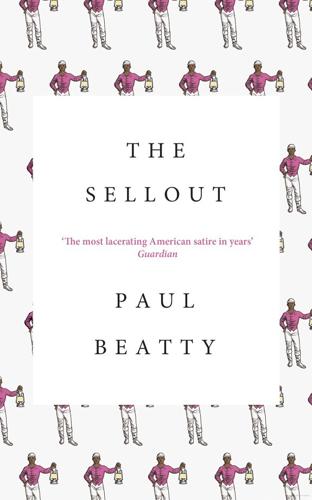
The Sellout: A Novel
by
Paul Beatty
Published 2 Mar 2016
I pointed to the row of seven-ounce sodas in the cooler. “How much?” “Dollar-fifty.” “But they’re seven cents across the street.” “Buy black or piss off. Literally.” Feeling sorry for me, and winning on points, black Bobby Fischer pointed into the distance at an old bus station. “See that abandoned bus station next to the cotton gin?” I sprinted down the road. Although the building was no longer operational, balls of cottonseed still blew in the wind like itchy snowflakes. I made my way to the back, past the gin, the empty pallets, a rusted forklift, and the ghost of Eli Whitney. The filthy one-toilet bathroom buzzed with flies.
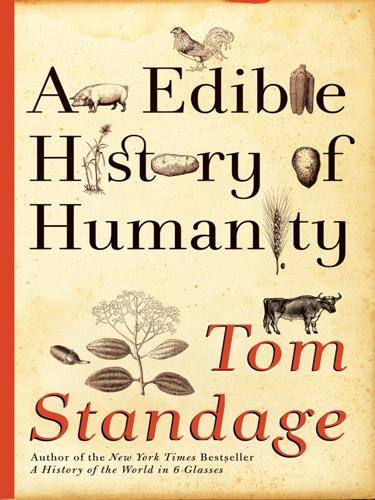
An Edible History of Humanity
by
Tom Standage
Published 30 Jun 2009
Sherman’s troops fanned out and devastated the country, helping themselves to fresh mutton, bacon, turkeys, chickens, cornmeal, and sweet potatoes, among other things. As well as taking the supplies they needed to subsist, the Union soldiers killed pigs, sheep, and poultry and burned and looted many houses, despite their orders to the contrary. They were instructed to destroy mills, barns, and cotton gins only if they encountered any resistance. Sherman recalled in his memoirs that the foraging became general plunder, and was not limited to formal foraging parties as he had ordered: “A soldier passed me with a ham on his musket, a jug of sorghum—molasses—under his arm and a big piece of honey in his hand, from which he was eating and, catching my eye he remarked in a low voice to a comrade, ‘Forage liberally on the country.’ ” Sherman claimed to disapprove of such lawlessness, but it was entirely in keeping with his boast to Grant that he would “make Georgia howl.”

The Ages of Globalization
by
Jeffrey D. Sachs
Published 2 Jun 2020
U.S. dynamism was exemplified from the start by infrastructure development—the building of canals, railroads, and roads—and by the rapid uptake and development of new technologies, including the frequent stealing and copying of superior British technologies. In the first half of the nineteenth century, American inventors improved the steam engine, modified the railroad, improved the cotton gin, developed the steamboat, invented the telegraph, and much more. Up until the Civil War of 1861–65, the U.S. economy as a whole remained mostly rural and agricultural, and based heavily on slave labor in Southern cotton production. The United States was around 20 percent urban as of 1860. Following the Civil War, industrialization soared; by 1910, the country was 46 percent urban, reaching 57 percent by 1940.

We Are Never Meeting in Real Life
by
Samantha Irby
Published 14 Apr 2017
I suppose I could just wait for all their children to drop out of dental school and stab a convenience-store employee while trying to steal a box of real Sudafed before I feel haughty and superior about my choice to let everyone else do the breeding, but with my luck these little dudes are going to grow up to be, like, funny and charming Instagram models who automatically take my arm when we’re walking in the snow. I hate them already. — You can’t tell by looking, but I was a nanny for a while in high school and through my early twenties. It was just like The Help except swap in liberal white guilt and Land Rovers for Jim Crow and cotton gins. The most important thing I learned was the difference between the boxed-macaroni-and-cheese parents and the holistic-kale-anti-vaccination parents. Macaroni moms are the easiest to be around, obviously. Because, duh, you can totally let their kids zombie out in front of the TV and order a sausage pizza.

Abundance
by
Ezra Klein
and
Derek Thompson
Published 18 Mar 2025
To understand how a system designed to encourage risk-taking in science ironically became captured by risk aversion, we have to tell the story of the birth of the American innovation system and the creation of the modern NIH itself. The Growth of the American Innovation System Before the twentieth century, science and invention had largely been a job for solo entrepreneurs. The cotton gin and the telegraph, icons of eighteenth- and nineteenth-century ingenuity, were made by individual tinkerers who, through trial and error, cobbled their way toward a product that—initially, barely—worked. In the late 1800s and early 1900s, Thomas Edison proved a new model: the corporate research lab.

Empire of Guns
by
Priya Satia
Published 10 Apr 2018
In England, Henry Nock made screwless locks on a similar principle, and the Taylors used interchangeable-parts manufacturing to make pulley blocks for the navy. The objective of mass warfare produced the industrial principle of interchangeability, whose purpose shifted from easy repair to lower units of production. In 1793, Eli Whitney built a cotton gin to quickly separate seed from cotton fiber, revolutionizing raw cotton production. In 1798, the U.S. government was desperate for guns and hired contractors to make forty thousand—including Whitney, who accepted an advance to deliver four thousand muskets in 1799 and six thousand more in 1800. Legal battles around his gin kept him from completing his contract until 1809.
…
Mary’s district, see Gun Quarter of Birmingham and Provincial Gunmakers’ Association, 372 Birmingham Banking Company, 339 Birmingham Canal Navigation Company, 78, 80 Birmingham Registered Gunmakers, 374 Birmingham Small Arms Company (BSA), 365, 366, 371, 371–74, 387, 400 Black, Joseph, 157 Black Act, 239, 245 Black Country, 6, 85, 374 Blackwell Committee, 389, 391 Blaguier, John Peter, 57 Blair, David, 128–30 Blair, Tony, 376 Blanc, Honoré, 153, 353, 354 Blomefield, Thomas, 157–58 Bloody Code, 245, 247 Black Act, 239, 245 Bodkin Committee, 395 Bodmer, John George, 153 Bolton, George, 149 Bombay, 208, 211, 287, 288, 290, 295 Bonnington, William, 78–80 Boston Massacre, 111 Boston Tea Party, 278, 279 Boulton, Matthew, 14, 20, 73, 76, 78, 80, 98–99, 125, 126, 140, 156, 157, 161–64, 174, 203–11, 215, 317, 329, 338, 343, 345, 377, 475n Boulton & Fothergill, 169, 199 Boulton & Watt, 14, 156, 159, 163 bow and arrow, see archery Boyd, John, 173 Bradburne, Randall and Samuel, 72–73, 113 brass, 8, 33, 40, 47, 70, 76, 77, 91, 148, 159, 169, 192, 196, 197, 198, 200, 203, 286 Brass Wire Company, 91 Brazier, John and William, 41, 51, 94, 104 brewers, 75, 170, 213, 320, 326, 346, 474n Briggs, William, 368 Bright, John, 342 Bristol, 71, 72, 88, 91, 96 Britain, British state, 2, 16–18, 378, 408 Acts of Union in, 33, 135–36 army, 131, 243, 417n; see also militia Bill of Rights in, 220, 223 gun industry and, 6, 25–65, 101–45, 348–53, 361–63, 367, 395; see also gunmaking, gunmakers; gun trade Home Office in, 127–30, 134, 325, 352, 387, 391, 395 imperial expansion, see imperialism industrial revolution and, 2, 3, 6, 7, 16, 18, 19, 142, 145, 146–80, 212, 219, 250, 349, 378–79, 401 infrastructure projects and, 16, 18 making of British state, see state map of, 5 militarization of society in, 46 national character in, 254–56 navy of, 34, 131, 157, 159–61, 163, 165–66, 170, 369–70, 417n Ordnance Board in, see Ordnance Board Parliament of, 2, 18, 26, 27, 29–32, 34, 35, 37, 39, 48, 63, 68, 72, 91, 112, 122, 142–43, 175, 187–88, 195, 204, 217, 243, 255, 259, 274, 312, 313, 339, 340, 356, 370 prosperity of, 346 social welfare projects and, 16 war as constant in, 1–3, 6, 13, 18, 110, 131, 222 war as viewed in, 13, 244 British Aerospace (BAe), 375 Brittain, Vera, 374 Brockway, Fenner, 395 Brontë, Emily, 256 Brooke, John, 127, 128 Brown, John (abolitionist), 363 Brown, John (industrialist), 368–69 Brown, Raymond, 375 Brown Bess, vii, 38–40, 39, 46, 110, 133, 148, 152, 278 Brunel, Isambard Kingdom, 161 Brunel, Marc, 160–61, 164 Brunel, Sophia Kingdom, 160, 164 Brussels Convention, 383 Buckmaster, Joseph, 104 Bumford, John, 104 Burchell, William, 298 Burgoyne, John, 149 Burke, Edmund, 127, 171, 244 Burma, 285, 296, 348 Burnworth, Edward, 259 Butler, Joseph, 123, 124 Buttall, Jonathan, 47 buttons, 152, 156, 199, 338 Calcutta, 287, 288, 290–93 Cameron, David, 376 Campbell-Bannerman, Henry, 344, 384–85 Canada, 273, 283, 408 cannon, see guns Cape Breton Island, 46 Cape Colony, 299, 346, 365, 367, 382–83 Peace Preservation Act, 383 see also South Africa Cape Verde, 90 capitalism, xiv, 3, 8–12, 15, 21, 22, 99, 236, 341, 343, 375, 376, 384, 385, 393, 404, 405 Cardan, Richard, 203 Carnatic Wars, 46, 425n Carterert, Philip, 266 Catholics, 122, 222, 330 Cato Street Conspiracy, 255 Champion, Alexander, 91, 93 Champion & Hayley, 60, 91–93, 95, 212 Champion family, 159, 164 Chaco War, 394, 396 Charles II of England, 286 Charles VI, Holy Roman Emperor, 43 Charleston, 42, 271, 272, 277 Chartism, 350, 351 Chatham, Earl of, 156 China, 208, 282, 287, 384 Christian, Edward, 245 Christie, Agatha, 256 Civil War, English, 29–30, 68, 203, 220, 222, 303 civilizing process, 9, 10, 235, 237, 256, 262, 274–75, 298–99 Clarke, Richard, 278 Clarke, William, 50 Clerke’s Act, 18, 159 Clive, Robert, 284, 286, 291, 425n Coalbrookdale Company, 167–68 Cobbett, William, 18, 376–77 Coercive Acts (1774), 279 Coercive Acts (in Ireland), 347 Coggle, James, 50 coins, 7, 8, 75, 191, 192, 199, 201–12, 217 Birmingham manufacture of, 201–3, 206, 208, 210–12 copper, 76, 168, 199, 202–3, 205–12 counterfeit, 202–3, 205, 206, 208, 210 meaning of “coin,” 201 silver, 210–11 standardization of, 210 steam engine and, 206, 207, 211 token, 126, 202, 206–8, 210, 211 Cold War, 12, 13, 256, 299, 374–77, 401, 410 Collins, William, 129–30, 163, 206 colonial settlers, 4, 10, 110, 267, 268–69, 274, 277, 280, 281, 367, 382 Colt, Samuel, 355–58, 360–64, 378 Communists, 396, 398 Committee of Imperial Defence, 388 Company of Merchants Trading to Africa, 48, 51, 52, 60, 77, 88, 90–91 Congreve, William, 177 conscience: and gun use in the eighteenth century, 187, 258 in the eighteenth century, 308, 310, 324, 327, 331–32, 341–42, 380, 404 Galton Jr.’s, 10, 308–9, 319, 327–29, 331–32, 342, 404 arms making and, xiii, 304, 308–9, 324, 327–29, 341–42, 385, 393, 398, 401, 404, 409–410, 475n Continental Congress, 115 contracting, 173, 176 corruption and, 124, 392; see also Old Corruption credit extended to state in, 64–65, 194–95, 213 in gun industry, 20, 27, 28, 33, 36–38, 42–43, 64, 85–87, 120, 139–42, 145, 155, 350–57, 359–64 political power and, 174 wealth and, 171–72 and the economy, 172 convict colonies, 267 Cook, James, 263, 264 Cook, Robin, 376 Cookworthy, William, 305 copper, 75–77, 80, 159, 160, 163, 168–69, 177, 200, 206, 209, 210, 338, 452n coins, 76, 168, 199, 202–3, 205–12 East India Company and, 208–9, 211 sheathing for ships, 14, 154, 159, 161 Corn Laws, 174, 243, 252 Cornwallis, Charles, Lord, 133 corruption, see contracting; Old Corruption Cort, Henry, 157, 158, 163 cotton, 77, 153, 170, 358, 418n, 419n, 459n cotton gin, 353–54 Cox, Percy, 392 Cox, Richard, 217 Craven, Charles, 397, 409 Crawford, George, 120, 123, 124 credit, see money and currency Crimean War, 14, 356, 363–65, 368 crime, 237, 245, 247 attempted, 236 punishments for, 237–39, 245 see also theft; weapons and violence Crowley, Ambrose, 20, 26, 69, 166, 176, 304–5 Crowley family, 69, 70, 164, 166–68, 305 Crystal Palace Exhibition, 355, 356 Cummings, Samuel, 374 Dalton, Hugh, 392 Daniel, Earl, 88, 94 Darby, Abraham, 15, 72, 73, 91, 154 Darby, Abraham, II, 167, 304 Darby family, 96, 155 Dardanelles, 392, 397 Darwin, Charles, 381 Darwin, Erasmus, 98, 208, 330 Davis, David Brion, 475n Davis, Richard, 62, 103 Davis, Thompson, 121 death penalty, 237–39, 245 de Boigne, Benoit, 293–94 Defence of the Realm Act, 388 Defoe, Daniel, 169, 171, 218 Robinson Crusoe, 262 Denham, Joseph, 93 development (economic), 2, 4, 11, 12, 13, 15, 16, 18–19, 134, 154, 179, 215, 246, 298, 327, 378, 419n, 475n Devonshire & Reeve, 62 Dick, Walter, 116 Diderot, Denis, 149 Dissenters, 4, 126, 129, 130, 310–11, 330, 331 division of labor, 11, 19, 20–21, 140, 145, 152, 326, 358, 366, 420n Dobbs, Thomas, 75 drones, 235, 376, 471n Drummond, Andrew, 93, 174, 212, 213 Drummond, Henry, 174, 217, 218 Dubai, 386, 387 Duckworth, James, 204 Duddeston, 74, 80, 85, 93, 96, 307, 331, 381 dueling, 233, 238, 247, 463n, 466n Dunblane massacre, 402 Dundas, Lawrence, 63, 173 Dundas, Lord, 127, 132 Dunmore, John Murray, Lord, 115–16 Dupin, Baron, 141 Dutch, 30–32, 36, 45, 159, 269, 272 gunmakers, 29, 30, 32, 33, 35, 39, 51, 52, 60, 103, 197, 286, 423n; see also Liège East India Company, 6–7, 25, 29, 42–46, 51, 53, 59, 61, 77, 99, 101, 102, 106, 111, 112, 115–17, 119–20, 125, 128, 132, 136–37, 141, 142, 144, 145, 158, 167, 171–74, 177, 206, 208–11, 249, 273, 283, 286, 287, 296, 299, 310, 321, 333, 338, 342, 351, 352, 359–61, 364–65, 403–4 economy, domain of, 17, 21, 91, 211, 217, 218, 241, 333, 404 Egg, Durs, 150 Egypt, 347, 372 Elias, Norbert, 235 Elliot, John, 172 Elliott, George, 224 Ellis, J.
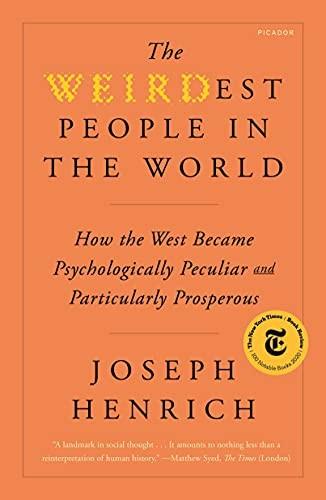
The WEIRDest People in the World: How the West Became Psychologically Peculiar and Particularly Prosperous
by
Joseph Henrich
Published 7 Sep 2020
After 1500, when Europeans opened global trade routes and subjugated vast overseas empires, the products, technologies, and practices from other distant societies flooded in, further energizing science, innovation, and production: latex, quinine, fertilizer (guano), potatoes, sugar, coffee, and the cotton gin (inspired by the Indian charka), just to highlight a few. Europeans of the early modern period no doubt thought that they were superior to these other peoples, but this didn’t stop them from readily assimilating the useful ideas, crops, technologies, and practices they encountered. In many cases, the products or technologies that poured into Europe’s collective brain were rapidly modified and recombined to create new innovations.54 In closing this section, let me return to a central point: the competition among cities, states, religions, universities, and other voluntary associations helped keep Europe’s collective brain humming.
…
Algan and Cahuc, 2010, 2014; Basalla, 1988; Cantoni and Yuchtman, 2014; Cipolla, 1994; Gelderblom, 2013; Gimpel, 1976; Guiso et al., 2004; Guiso, Sapienza, and Zingales, 2008; Karlan, Ratan, and Zinman, 2014; Lopez, 1976; Mokyr, 1990, 2002; White, 1962. 21. By the 18th century, crucial innovations were bubbling up almost constantly: Fahrenheit’s thermometer (1709), Harrison’s sea clock to measure longitude (1736), Roebuck’s process for making sulfuric acid (1746), Whitney’s cotton gin (1793), Jenner’s smallpox vaccine (1798), and Medhurst’s air compressor (1799), to name just a few headliners. 22. Andersen et al., 2017; Buringh and Van Zanden, 2009; Cantoni and Yuchtman, 2014; Mokyr, 2016; Wootton, 2015. 23. Coy, 1989; de la Croix et al., 2018; Henrich, 2009. 24. Muthukrishna et al., 2013.

Baghdad Without a Map and Other Misadventures in Arabia
by
Tony Horwitz
Published 1 Jan 1991
And I realized then what was so strange about Muglad. Apart from this generator, there was no electricity. There were no power lines, no TV aerials, no cars or trucks. I felt for a moment as-though I were standing in some English village at the cusp of the Industrial Revolution, on the day a mad and wonderful machine called the cotton gin came to town. The few modern goods that had made it to Muglad were carefully recycled as soon as they had served their original purpose. One man fashioned sandals from withered truck tires. Another took apart cans of powdered milk and refashioned them as stout little coffee jugs, with the body of the can forming the pot and the leftover strips used for the spout, handle and strainer.

Wonderland: How Play Made the Modern World
by
Steven Johnson
Published 15 Nov 2016
The immense value of the cotton trade had already set a generation of British inventors off in search of mechanical tools that could mass-produce cotton fabrics: beginning with John Kay’s flying shuttle, patented in 1733, followed several decades later by Richard Arkwright’s spinning (or water) frame, then Eli Whitney’s cotton gin, not to mention the endless refinements to the steam engine rolled out during the 1700s, many of which were originally designed to enhance textile production. (Steam engines would eventually power a wide range of industrial production and transportation, but their initial application was dominated by mining and textiles.)

The Battery: How Portable Power Sparked a Technological Revolution
by
Henry Schlesinger
Published 16 Mar 2010
It didn’t take long before Henry’s work with electromagnets caught the attention of Amos Eaton, a consultant for Penfield Iron Works in what was then known as Crown Point, New York, on Lake Champlain. The problem the firm faced was separating high-grade iron ore from lesser-quality ore. The solution Henry arrived at—similar to a cotton gin—was a wooden cylinder into which hundreds of metallic and electromagnetized rods were inserted. The high-caliber iron simply stuck to the teeth to be brushed off and sent to the furnaces for smelting. Electromagnets had found their first industrial application, and shortly thereafter Crown Point was renamed Point Henry.
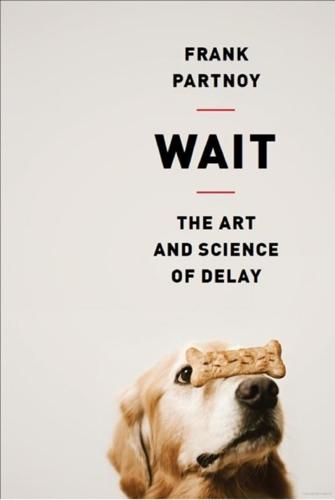
Wait: The Art and Science of Delay
by
Frank Partnoy
Published 15 Jan 2012
Tim Berners-Lee mocks the notion that he suddenly discovered the Internet, as if he “just had to take the hypertext idea and connect it to the Transmission Control Protocol and domain name system ideas and—ta-da!—the World Wide Web.”12 The most important innovations of modern times—the automobile, camera, computer, cotton gin, lightbulb, penicillin, sewing machine, steam engine, telephone, television—were not overnight epiphanies. They took decades or longer to invent and develop. And although the cycles are getting faster, the most dramatic innovations of the modern era—from Apple, Google, and Facebook—have taken years.

The Enigma of Capital: And the Crises of Capitalism
by
David Harvey
Published 1 Jan 2010
Technological innovations in one part of what we now call a ‘commodity’ or ‘supply chain’ flowing into production invariably render necessary innovations elsewhere. Rising productivity in the nineteenth-century cotton industry with the advent of the power loom, Marx points out, required innovations in cotton production (the cotton gin), transport and communications, chemical and industrial dyeing techniques, and the like. The conversion of a part of yesterday’s profit into fresh capital depends, therefore, on the availability of an ever-increasing quantity of means of production, as well as an increasing quantity of wage goods to feed the extra workers to be employed.

Cheese and Culture: A History of Cheese and Its Place in Western Civilization
by
Paul Kindstedt
Published 31 Mar 2012
Thus, the demand for New England cheese continued to be strong at the dawn of the nineteenth century, despite the impending loss of the West Indies market, and would soon become stronger still because of another revolution that was unfolding in America—the Industrial Revolution, which centered on the New England textile industry. The invention of the cotton gin in 1791 vastly reduced the cost of producing raw cotton for sale to textile manufacturers. This clever invention transformed the American South into a massive and highly specialized cotton-growing region. The rapidity and scale of the transformation was remarkable. In 1790 the United States produced 1.5 million pounds (680,000 kg) of cotton; by 1800, production had risen to 35 million pounds (15.9 million kg); by 1820, 160 million pounds (72.6 million kg); and by 1860, 2.3 billion pounds (1 billion kg).

Zeitgeist
by
Bruce Sterling
Published 1 Nov 2000
Their natural roads had been cut, their Greek inhabitants had fled in terror, and years of economic embargo had finally finished them off. Viktor nervously directed them down a dirt road, overhung with untrimmed trees, toward an old textile mill. The mill’s corrugated metal sides were rust streaked, and the walls were thickly shrouded by thriving subtropical shrubbery. The place had the eerie, Faulknerian look of an abandoned cotton gin. “Why the hell would Ozbey come out here?” Starlitz said. “I don’t know. But he comes here often. He brings his men, sometimes he brings his girlfriend.… I assumed they were processing heroin in there.” “That would make sense.” “What’s that burning smell?” Zeta said, lifting her chin from the toothmarked rim of her white valise.

The Chip: How Two Americans Invented the Microchip and Launched a Revolution
by
T. R. Reid
Published 18 Dec 2007
Among the small group of men who constituted the U.S. government then, jobs were assigned largely on the basis of personal interest. The secretary of state, Thomas Jefferson, was an inventor, so Congress gave the Patent Office to the State Department. In the evening, after a long day of diplomacy, Jefferson would review patent applications. Among the patents he personally granted was one to Eli Whitney in 1794 for the cotton gin. Inevitably, bureaucracy reared its head. In 1804 the Patent Office hired an employee of its own, and that proved to be the first step along a steep slope; today the Patent and Trademark Office (now a wing of the Commerce Department) has about 7,000 employees scattered around several huge buildings in a suburban mall in Arlington, Virginia.

You Are Now Less Dumb: How to Conquer Mob Mentality, How to Buy Happiness, and All the Other Ways to Outsmart Yourself
by
David McRaney
Published 29 Jul 2013
The advances of science and medicine, the technological leaps and bounds—how much of that could you impart to an eager alchemist or inquisitive pyromancer? Even if you were an engineer or a chemist, you couldn’t just go out and create a Roomba from scratch. You would probably be digging graves or tending livestock within a week. It’s unlikely you would invent the cotton gin or the steam engine. You certainly wouldn’t be curing many diseases, either. The best you could probably offer them would be your knowledge of the benefits of sanitation. You see, a lot of what you presume to be evidence of your intelligence is just part of a vast cultural inheritance. If some sort of Reset button were pressed on your slow crawl out of the Stone Age, you would see that you are not much different from people ten thousand years ago.

Eastern USA
by
Lonely Planet
Sleeping & Eating Shack Up Inn INN $$ ( 662-624-8329; www.shackupinn.com; r $65-165; ) At the cheeky Hopson Plantation, this self-titled ‘bed and beer’ 2 miles south on the west side of Hwy 49 evokes the blues like no other. Guests stay in refurbished sharecropper cabins or the creatively renovated cotton gin. The cabins have covered porches and are filled with old furniture and musical instruments. The old commissary, the Juke Joint Chapel (equipped with pews), is an atmospheric venue inside the cotton gin for live-music performances. The whole place reeks of down home dirty blues and Deep South character – possibly the coolest place you’ll ever stay. Riverside Hotel HISTORIC HOTEL $ ( 662-624-9163; ratfrankblues@yahoo.com; 615 Sunflower Ave; r with/without bath $70/65; ) Don’t let a well-worn exterior put you off: this hotel, soaked in blues history – Bessie Smith died here when it was a hospital, everyone else has stayed here – offers clean and tidy rooms wrought with the spirits of the blues.
…
National Museum of Natural History MUSEUM (cnr 10th St & Constitution Ave SW) A favorite of the kids, the Museum of Natural History showcases dinosaur skeletons, an archae- ology/anthropology collection, wonders from the ocean, and unusual gems and minerals, including the 45-carat Hope Diamond. National Museum of American History MUSEUM (cnr Constitution Ave & 14th St NW) The Museum of American History is accented with the daily bric-a-brac of the American experience – synagogue shawls, protest signs and cotton gins – plus an enormous display of the original Star-Spangled Banner and icons such as Dorothy’s slippers and Kermit the Frog. National Museum of the American Indian MUSEUM (cnr 4th St & Independence Ave SW) The Museum of the American Indian provides a fine introduction to the indigenous people of the Americas, with an array of costumes, video and audio recordings, and cultural artifacts.

Capitalism and Its Critics: A History: From the Industrial Revolution to AI
by
John Cassidy
Published 12 May 2025
During the early eighteenth century, Williams pointed out, the West Indies supplied up to three-quarters of all the cotton imported to Britain, and in 1780 the share was still two-thirds.45 During the ensuing decades, he noted, the sourcing of cotton gradually shifted from the Caribbean to the American mainland. In Lancashire, the application of water and then steam power to cotton spinning greatly increased the industry’s productive capacity and raised its demand for raw cotton. In the United States, in 1794, the Massachusetts inventor Eli Whitney received a patent for his cotton gin, a mechanized device that enabled the rapid harvesting and cleaning of short staple cotton, which was much easier to grow than the traditional long staple variety grown in the Caribbean. Whitney’s invention enabled cotton plantations in the American South to undercut the prices of West Indian producers and produce in greater volume.
…
The gradual eclipse of the Caribbean cotton producers by competitors on the American mainland would have major historical consequences for both regions. From the perspective of the Lancashire cotton industry, Williams emphasized, it simply represented a shift to a lower-cost foreign supplier. “When the cotton gin permitted the cultivation of the short-staple cotton by facilitating the task of cleaning, the center of gravity shifted from the islands to the mainland to meet the enormous demands of the new machinery in England,” he wrote.46 In 1807, under pressure from abolitionists led by the Yorkshire evangelical William Wilberforce, Parliament prohibited the slave trade inside the British Empire.

The Knowledge: How to Rebuild Our World From Scratch
by
Lewis Dartnell
Published 15 Apr 2014
China had invented the modern horse collar, the wheelbarrow, paper, block printing, the navigational compass, and gunpowder—all world-changing inventions that we’ve covered throughout this book. Chinese textile production made yarn using multiple spinning frames with a centralized power source, and operated mechanical cotton gins and sophisticated looms. The Chinese mined coal, discovered how to convert it into coke, utilized large vertical waterwheels and trip-hammers, and beat Europe by one and a half millennia to using blast furnaces to produce cast iron, then refining it into wrought iron. By the end of the fourteenth century, China had achieved a technological capability not seen anywhere in Europe until the 1700s, and seemed poised to initiate an industrial revolution of its own.

Let's Pretend This Never Happened (A Mostly True Memoir)
by
Jenny Lawson
Published 5 Mar 2013
And if you think having a gas station is not that big of a deal, then you’re probably the kind of person who grew up in a town that has a gas station, and that doesn’t encourage students to drive to school in their tractors. Wall is basically a tiny town with . . . um . . . dirt? There’s a lot of dirt. And cotton. And gin, but not the good kind. In Wall, when people refer to gin they’re talking about the Cotton Gin, which is the only real business in the town and is like a factory that turns cotton into . . . something else. I honestly have no idea. Different cotton, maybe? I never actually bothered to learn, because I always figured that within days I would be escaping this tiny country town, and that’s pretty much how my entire life went for the next twenty years.
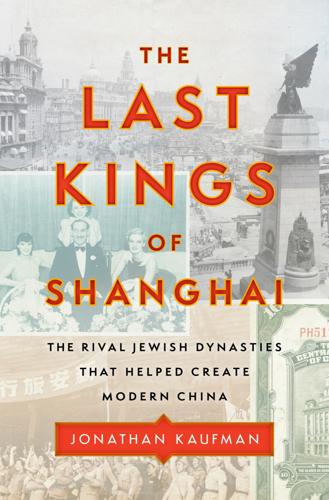
The Last Kings of Shanghai: The Rival Jewish Dynasties That Helped Create Modern China
by
Jonathan Kaufman
Published 14 Sep 2020
Realizing the value of being able to negotiate with local businessmen, he learned Hindustani and became close friends with one of India’s biggest cotton traders. From him, David learned that British brokers were complaining that the bales bought from India contained too many stones. Using this information, David imported new cotton gins that solved this problem and produced more marketable cotton. When he was turned away from the old-boy network of British banks, he helped found the Bank of Bombay, which enabled him to finance new railway lines to ship cotton from the countryside more quickly. Two decades later, when the North blockaded the South in the American Civil War, cutting off the biggest supplier of cotton to Britain, David was perfectly situated to step into the breach—and to make millions.

Ghost Work: How to Stop Silicon Valley From Building a New Global Underclass
by
Mary L. Gray
and
Siddharth Suri
Published 6 May 2019
For example, the spinning jenny, invented in 1770, was a single machine, powered by water, with as many as 120 spools hooked to a wooden frame cranking away to spin, draw out, and twist fibers. The machine could replace dozens of human hands working hundreds of hours to create the same amount of cloth for weaving. And Eli Whitney’s cotton gin, invented in 1792, could deseed cotton and prepare it for the spinning jenny 25 times faster than a single person working by hand. Together, these two inventions ramped up production and mainstreamed consumption of cotton in the early stages of the Industrial Revolution. Most analysts tracking the growth of industrial production assumed that, between mechanization and the scientific application of technologies to manage a more skilled workforce, pieceworkers would eventually disappear.

USA's Best Trips
by
Sara Benson
Published 23 May 2010
This is where you’ll find the Crossroads, at the intersection of Hwy 61 and Hwy 49, where Robert Johnson made his mythical deal with the devil and became America’s first guitar hero. And it’s here where live music and blues history are most accessible. Stay at the Shack Up Inn, an old plantation where a cotton gin and sharecroppers’ cabins have been converted into guestrooms stuffed with kitsch antiques. The owners are warm and fun, and are tuned in to the local live-music scene. The Delta Blues Museum, in downtown Clarksdale, has the best collection of blues memorabilia in the Delta, including Muddy Waters’ reconstructed Mississippi cabin.
…
Live music starts at 10am. 615-726-0463; www.tootsies.net; 422 Broadway, Nashville, TN; no cover; 9:30am-2:30am SLEEP The Columns A lovely 1883 Victorian choice in the Garden District, with live music nightly and jazz on Friday and Sunday. 504-899-9308; www.thecolumns.com; 3811 St Charles Ave, New Orleans, LA; r from $120 Heartbreak Hotel Elvis-themed hotel steeped in ‘50s kitsch and chic, just steps from Graceland. 901-332-1000; www.heartbreakhotel.net; 3677 Elvis Presley Blvd, Memphis, TN; r from $112 Loews Vanderbilt Hotel Its lobby jukebox is stocked with tunes from past VIP guests and its walls are lined with impressive music memorabilia. 615-320-1700; www.loewshotels.com; 2100 W End Ave, Nashville, TN; r from $150 Madison Hotel This music-themed boutique hotel is where rock stars stay in Memphis. 901-333-1200; www.madisonhotelmemphis.com; 79 Madison Ave, Memphis, TN; r from $175 Shack Up Inn Shotgun sharecropper shacks run by a straight-talking owner, and cozy retro rooms inside an authentic cotton gin on Hopson Plantation. You need to be over 25 to sign for a room. There’s a two-night minimum on weekends. 662-624-8329; www.shackupinn.com; 1 Commissary Circle, off Hwy 49, Clarksdale, MS; r from $65 USEFUL WEBSITES www.clarksdaletourism.com www.neworleanscvb.com * * * * * * LINK YOUR TRIP www.lonelyplanet.com/trip-planner TRIP 24 48 Hours in New Orleans * * * Return to beginning of chapter TRIP 26 Cajun Country Road Trip * * * WHY GO Hidden in the maze of bayous, lakes, swamps and prairies that unfurl south and west of New Orleans is a wild and jubilant French-speaking culture punctuated by crawfish boils, all-night jam sessions and dance parties.

Basic Economics
by
Thomas Sowell
Published 1 Jan 2000
In the United States, for example, the antebellum South tended not to advance as fast as other parts of the country: Techniques of Southern agriculture changed slowly, or not at all. So elementary a machine as the plow was adopted only gradually and only in scattered places; as late as 1856, many small farmers in South Carolina were still using the crude colonial hoe. There was little change in the cotton gin, gin house, or baling screw between 1820 and the Civil War.{898} The cotton gin, a crucial economic factor in the antebellum South, was invented by a Northerner. When it came to inventions, only 8 percent of the U.S. patents issued in 1851 went to residents of the Southern states, whose white population was approximately one-third of the white population of the country.

Deep Thinking: Where Machine Intelligence Ends and Human Creativity Begins
by
Garry Kasparov
Published 1 May 2017
Thousands of years of status quo human dominance, a few decades of weak competition, a few years of struggle for supremacy. Then, game over. For the rest of human history, as the timeline draws into infinity, machines will be better than humans at chess. The competition period is a tiny dot on the historical timeline. This is the unavoidable one-way street of technological progress in everything from the cotton gin to manufacturing robots to intelligent agents. The competition dot gets all the attention because we feel it intensely when it occurs during our lifetimes. The struggle phase often has a direct impact on our lives in real time, so we overinflate its relevance in the big picture. This is not to say it is irrelevant, of course.
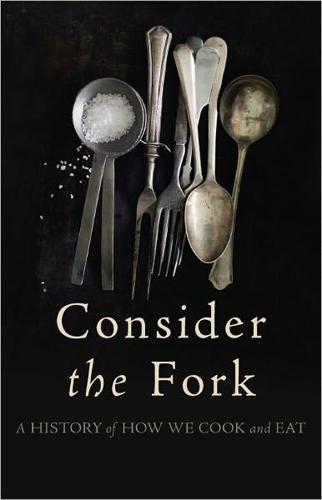
Consider the Fork: A History of How We Cook and Eat
by
Bee Wilson
Published 14 Sep 2012
All it took, however, was a couple of favorable reviews—one in Gourmet magazine, one in the New York Times, and suddenly the Cuisinart was flying off the shelves. Craig Claiborne, the food critic for the New York Times, was an early adopter of this “most dextrous and versatile of food gadgets.” As an invention, he compared it to “the printing press, cotton gin, steamboat, paper clips, Kleenex,” the equivalent of “an electric blender, electric mixer, meat grinder, food sieve, potato ricer and chef’s knife rolled into one.” It was, he excitedly claimed, the greatest food invention since toothpicks. There was similar excitement in Britain, where another version of Verdun’s invention was marketed under the Magimix brand, also in 1973.
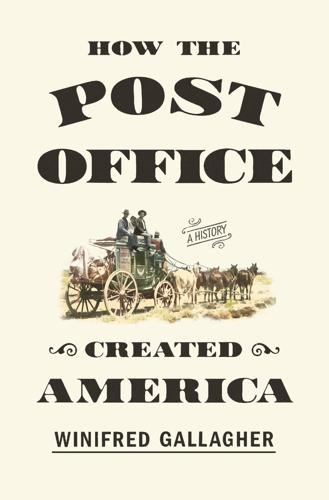
How the Post Office Created America: A History
by
Winifred Gallagher
Published 7 Jan 2016
The ranks of gentlemen had expanded beyond those who inherited the distinction to include, in John Adams’s formulation, anyone who had a liberal education, including him. The literacy rate climbed as high as 90 percent in populous regions, and most citizens were farmers who, unlike their European peers, owned their own land. Pragmatic American geniuses accelerated the Industrial Revolution with the cotton gin (short for “engine”), mechanical reaper, steamboat, and other inventions, which also expanded employment opportunities. Merchants, skilled artisans, and others who both worked and owned property formed the new class of “middlings”—the advance guard for the later nineteenth century’s huge bourgeoisie.

Risk: A User's Guide
by
Stanley McChrystal
and
Anna Butrico
Published 4 Oct 2021
The first Africans were brought to bondage in the colonies in 1619, but slavery evolved differently in the northern and southern parts of the nation over the nearly 250 years that came after. The North developed an increasingly industrial and mercantile economy for which enslaved labor was unnecessary—and society’s attitudes followed. In the South, however, Eli Whitney’s cotton gin revitalized an agricultural and plantation-based model dependent on unpaid labor. Many people are surprised by the fact that in 1860, cotton-growing Mississippi was the wealthiest state per capita, but that fact is essential to understanding why most southerners, dependent on the “peculiar institution” of slavery, were so strenuous in their justification for and defense of it.

Seventeen Contradictions and the End of Capitalism
by
David Harvey
Published 3 Apr 2014
Instead, we find a strong collective generic preference – a culture as it were – emerging among capitalists for increasing efficiency and productivity across all capitalist enterprises with or without the driving force of competition. Innovations at one point in a supply chain – for example, power loom cotton fabric production – required innovations elsewhere – for example, the cotton gin – if overall productivity was to be improved. But it sometimes took and still takes a while for a whole domain of economic activity to be reorganised on a new technological basis. Last, but by no means least, individual capitalists and corporations came to recognise the importance of product innovation as a way to earn, if only for a while, monopoly profits and, when protected by patent law, a monopoly rent.

The Boom: How Fracking Ignited the American Energy Revolution and Changed the World
by
Russell Gold
Published 7 Apr 2014
To better understand the complex relationship between drillers and homeowners, why it was codified, and how it enabled the birth of fracking in the United States, it helps to go back to where it started. In March 1919 an itinerant oil driller named Ottis Grimes bought a house for his family in Burkburnett, Texas. Until a year earlier, there were a thousand residents in this town near the Red River in the northern part of the state, along with a bank, hotel, and cotton gin. Then a local farmer drilled a well and found a lot of oil. Burkburnett’s metamorphosis was sudden and complete. Wildcatters, land speculators, and oil-field workers turned the small prairie community into a bustling hub of humanity. By the time Grimes arrived, the sidewalks were too packed to walk down.

The Evolution of Everything: How New Ideas Emerge
by
Matt Ridley
The economists Joseph Schumpeter and Friedrich Hayek both saw the economy in explicitly Darwinian ways: as a system where ideas recombine and trends emerge rather than are imposed. In 1988 George Basalla wrote a book called The Evolution of Technology, which stressed the continuity of successive innovations. He pointed out that Eli Whitney’s cotton gin was not conjured out of thin air, but adapted from the Indian charka or roller gins already in use. Basalla concluded that even such discrete jumps in technological history as the replacement of the propeller by the turbojet, or the vacuum diode by the transistor, are misleading. Both the turbojet and the transistor had long and gradual histories behind them, albeit in other applications – the turbine and the crystal radio receiver.

City on the Verge
by
Mark Pendergrast
Published 5 May 2017
The state of Georgia, founded by James Oglethorpe as a colony for the “worthy poor” of England as an alternative to debtors’ prison, banned slavery until 1750. By 1775, however, it had 18,000 slaves, mostly put to work cultivating rice in the coastal region. In 1793 in Savannah, Eli Whitney invented the cotton gin, which made cotton king and created a huge demand for slave labor. When still called Terminus, Atlanta was home to only fifty African Americans, all but two of them slaves; by the time of the Civil War, 460,000 Georgia residents lived in bondage. During the war, some Atlanta slaves thrived. For instance, Prince Ponder ran a grocery store, selling provisions, tobacco, and whiskey, and managed to purchase his freedom.

The Great Displacement: Climate Change and the Next American Migration
by
Jake Bittle
Published 21 Feb 2023
The downtown area was always abuzz with farmers and farmhands coming into town to hone their equipment, refuel their tractors with diesel, or discuss loan terms with the agricultural bankers whose offices lined the main thoroughfare. There was a large granary across the train tracks and a massive press that made cottonseed oil, so pungent you could smell it from half a mile away. Down the street from Nancy’s house were a pair of enormous cotton gins, each one a hundred feet tall, and when the sun set in the west it turned the gins into hulking silhouettes. The state of Arizona produced less cotton than more fertile states like Alabama and North Carolina, but the industry was just as essential to Pinal County’s economy as it was to any small town in the Old South.

Ultra-Processed People: The Science Behind Food That Isn't Food
by
Chris van Tulleken
Published 26 Jun 2023
But if you only partially hydrogenate, you can make any melting profile you like, which makes it possible to produce a fat that’s solid at room temperature but still easy to spread out of the fridge.** The next step was to find the cheapest possible oil. Cottonseeds were a worthless byproduct of the cotton industry, and were regarded as garbage up to 1860. Cotton gins were set up on the banks of rivers so that the seeds would just be washed away. But by 1907, the early Procter & Gamble company (who would go on to make Pringles) had worked out how to turn cottonseed oil into solid edible fat.†† One difficulty was that the oil contained a toxin called gossypol, which protects the plant from insects but also leads to reduced fertility in men, as well as a number of other impurities that made it taste foul.16 The solution to these problems was a process now known as RBD, whereby oils are refined, bleached and deodorised.
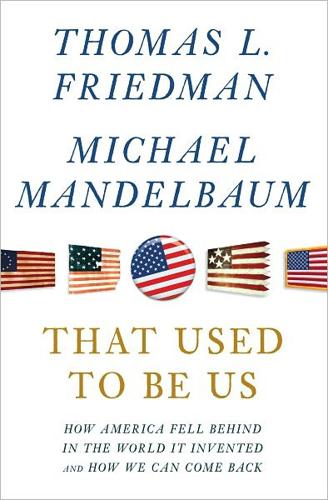
That Used to Be Us
by
Thomas L. Friedman
and
Michael Mandelbaum
Published 1 Sep 2011
That formula consists of five pillars that together constitute the country’s own version of a partnership between the public and private sectors to foster economic growth. The first pillar is providing public education for more and more Americans. As technology has improved, the country has prepared people to exploit new inventions—from cotton gins, to steamships, to assembly lines, to laptops, to the Internet. The second pillar is the building and continual modernizing of our infrastructure—roads, bridges, ports, airports, bandwidth, fiber-optic lines, and wireless networks—so that American workers and firms can communicate and collaborate effectively and deliver their goods and services swiftly and cheaply to their destinations.

What Technology Wants
by
Kevin Kelly
Published 14 Jul 2010
, which can hop to other minds, mutate into a derivative idea (place the spinning wheel beneath a sled to make it easy to haul!), which disrupts the prevailing balance, causing a shift. But not all changes induced by technology have been positive. Industrial-scale slavery, such as that imposed upon Africa, was enabled by the sailing ships that transported captives across oceans and encouraged by the mechanical cotton gins that could cheaply process the fibers the slaves planted and harvested. Without technology, slavery at this massive scale would have been unknown. Thousands of synthetic toxins have caused mass disruptions of natural cycles in both humans and other species, a huge unwanted downside from small inventions.

The One Device: The Secret History of the iPhone
by
Brian Merchant
Published 19 Jun 2017
It’s simple, compelling, and seems morally right—the hardworking person with brilliant ideas who refused to give up earned his fortune with toil and personal sacrifice. It’s also a counterproductive and misleading fiction. It is very rare that there’s a single inventor of a new technology—or even a single responsible group. From the cotton gin to the lightbulb to the telephone, most technologies are invented simultaneously or nearly simultaneously by two or more teams working entirely independently. Ideas really are “in the air,” as patent expert Mark Lemley puts it. Innumerable inventive minds are, at any given time, examining the cutting-edge technologies and seeking to advance them.

What Should I Do With My Life?
by
Po Bronson
Published 2 Jan 2001
At that point, if you had the guts, you could jump to about anywhere white-collar and respectable, or you could stay put and get rich. Instead, imagine you went off and did something crazy like this: 1990–present CATFISH FARMER (Indianola, Mississippi) Managed 8,000 acres of row crops and 1,500 water acres of catfish (5.5 million head). $16 million annual sales. Side businesses wholly or partially owned include cotton gin, flying service for pesticide spraying, feed mill, fish processing plant, and adult extended care facility. That’s what Don Linn’s résumé looks like, and that’s about all I knew of his story when I went to see him. But my curiosity was raging. What would his life be like? Would the foolish originality of this path be worth its stubborn irreversibility?

The Race Underground: Boston, New York, and the Incredible Rivalry That Built America's First Subway
by
Doug Most
Published 4 Feb 2014
The younger brother, living in New York City, was the family star. Athletic and lean, he attended Yale and Harvard, married into a fortune, rescued the United States Navy, and was recruited to run for president. Together they came from a long line of Puritans, a family that over four centuries would claim ties to the Revolutionary War, the cotton gin, the color motion picture, a world-famous museum, and even a baseball team called the Mets. Of their family’s many achievements, these brothers would notch the most significant one of all. They helped launch the birth of the subway in America and, with it, a new era of rapid urban transit. This is as much a tale of American ingenuity and the perseverance of man as it is about two powerful siblings and two rival cities.

Seeds of Hope: Wisdom and Wonder From the World of Plants
by
Jane Goodall
Published 1 Apr 2013
And when they are uprooted and sprayed, the entire environment is damaged. We must just hope that somehow the triple evils of drug addiction, alcohol addiction, and nicotine addiction can be tackled at their source and that the plants can be left in peace. Chapter 12 Plantations The cotton gin was invented in 1793. It enabled the seed to be separated out from the fiber quickly so that cotton became a more profitable crop. This increased the need for slaves—and over seventy thousand were imported from Africa to mainland North America between 1790 and 1808, when further importation was banned.
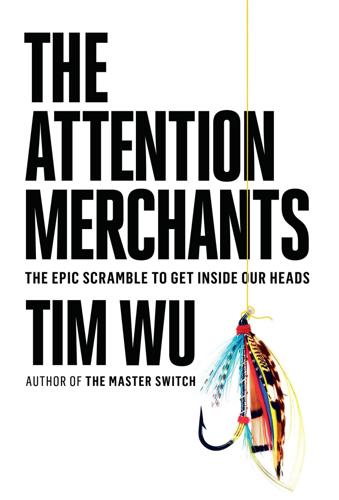
The Attention Merchants: The Epic Scramble to Get Inside Our Heads
by
Tim Wu
Published 14 May 2016
But as recently as the late nineteenth century, the first real industries of attention capture were still embryonic, though by then, printed matter like books and broadsheets had joined live spectacle as mental fodder created for profit. From the 1890s through the 1920s, there arose the first means for harvesting attention on a mass scale and directing it for commercial effect, thanks to what is now familiar to us in many forms under the name of advertising. At its inception it was as transformative as the cotton gin. For advertising was the conversion engine that, with astonishing efficiency, turned the cash crop of attention into an industrial commodity. As such, attention could be not only used but resold, and this is where our story begins. CHAPTER 1 THE FIRST ATTENTION MERCHANTS In the summer of 1833, with The New York Times and The Wall Street Journal both decades from their first editions, New York City’s leading newspaper was The Morning Courier and New York Enquirer, a four-page daily with circulation of just 2,600 in a city of almost 300,000.1 At 6 cents, it was something of a luxury item, which was just as well, since like several of its rivals, including The Journal of Commerce, it was aimed at the city’s business and political elite.
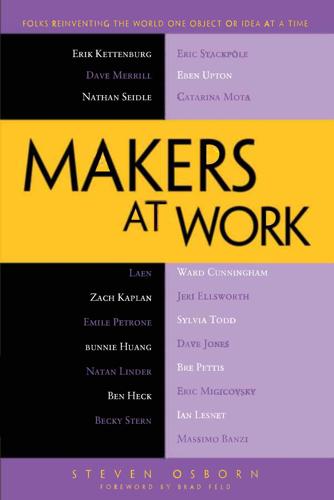
Makers at Work: Folks Reinventing the World One Object or Idea at a Time
by
Steven Osborn
Published 17 Sep 2013
What I wrote in the blog post is that the first industrial revolution happened in Great Britain in the late eighteenth century. The revolution was about the mechanization of the textile industry. Textiles were first made by humans, by hand. Then, it changed, and machines started to play a role in the textile industry, instead of people doing all the work. The famous example of this is Eli Whitney and his cotton gin. The second industrial revolution was in the early twentieth century, with Henry Ford, when industry moved from making things one at a time to mastering the assembly line, which ushered in the age of mass production that we know today and we sort of expect. This movement was driven by lowering costs through economies of scale.

USA Travel Guide
by
Lonely, Planet
Sleeping & Eating Shack Up Inn INN $$ ( 662-624-8329; www.shackupinn.com; r $65-165; ) At the cheeky Hopson Plantation, this self-titled ‘bed and beer’ 2 miles south on the west side of Hwy 49 evokes the blues like no other. Guests stay in refurbished sharecropper cabins or the creatively renovated cotton gin. The cabins have covered porches and are filled with old furniture and musical instruments. The old commissary, the Juke Joint Chapel (equipped with pews), is an atmospheric venue inside the cotton gin for live-music performances. The whole place reeks of down home dirty blues and Deep South character – possibly the coolest place you’ll ever stay. Riverside Hotel HISTORIC HOTEL $ ( 662-624-9163; ratfrankblues@yahoo.com; 615 Sunflower Ave; r with/without bath $70/65; ) Don’t let a well-worn exterior put you off: this hotel, soaked in blues history – Bessie Smith died here when it was a hospital, else has stayed here – offers clean and tidy rooms wrought with the spirits of the blues.
…
National Museum of Natural History MUSEUM (cnr 10th St & Constitution Ave SW) A favorite of the kids, the Museum of Natural History showcases dinosaur skeletons, an archae- ology/anthropology collection, wonders from the ocean, and unusual gems and minerals, including the 45-carat Hope Diamond. National Museum of American History MUSEUM (cnr Constitution Ave & 14th St NW) The Museum of American History is accented with the daily bric-a-brac of the American experience – synagogue shawls, protest signs and cotton gins – plus an enormous display of the original Star-Spangled Banner and icons such as Dorothy’s slippers and Kermit the Frog. National Museum of the American Indian MUSEUM (cnr 4th St & Independence Ave SW) The Museum of the American Indian provides a fine introduction to the indigenous people of the Americas, with an array of costumes, video and audio recordings, and cultural artifacts.
…
These blatant discrepancies and injustices, which were widely noted, were the results of both pragmatic compromise (eg to get slave-dependent Southern states to agree) and also widespread beliefs in the essential rightness of things as they were. WESTWARD, HO! As the 19th century dawned on the young nation, optimism was the mood of the day. With the invention of the cotton gin in 1793 – followed by threshers, reapers, mowers and later combines – agriculture was industrialized, and US commerce surged. The 1803 Louisiana Purchase doubled US territory, and expansion west of the Appalachian Mountains began in earnest. Relations between the US and Britain – despite lively trade – remained tense, and in 1812, the US declared war on England again.

The Rational Optimist: How Prosperity Evolves
by
Matt Ridley
Published 17 May 2010
It happens on the shop floor among apprentices and mechanicals, or in the workplace among the users of computer programs, and only rarely as a result of the application and transfer of knowledge from the ivory towers of the intelligentsia. This is not to condemn science as useless. The seventeenth-century discoveries of gravity and the circulation of the blood were splendid additions to the sum of human knowledge. But they did less to raise standards of living than the cotton gin and the steam engine. And even the later stages of the industrial revolution are replete with examples of technologies that were developed in remarkable ignorance of why they worked. This was especially true in the biological world. Aspirin was curing headaches for more than a century before anybody had the faintest idea of how.

Guns, germs, and steel: the fates of human societies
by
Jared M. Diamond
Published 15 Jul 2005
In 1942, in the middle of World War II, the U.S. government set up the Manhattan Project with the explicit goal of inventing the technology required to build an atomic bomb before Nazi Germany could do so. That project succeeded in three years, at a cost of $2 billion (equivalent to over $20 billion today). Other instances are Eli Whitney's 1794 invention of his cotton gin to replace laborious hand cleaning of cotton grown in the U.S. South, and James Watt's 1769 inven- tion of his steam engine to solve the problem of pumping water out of British coal mines. These familiar examples deceive us into assuming that other major inventions were also responses to perceived needs.
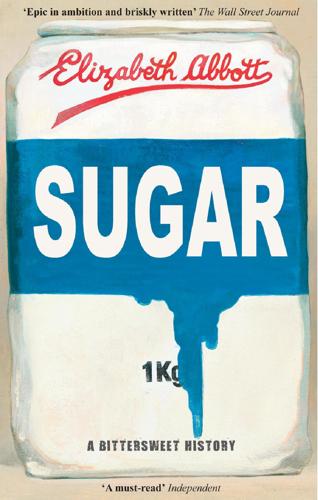
Sugar: A Bittersweet History
by
Elizabeth Abbott
Published 14 Sep 2011
HIGH TEA AND THE INDUSTRIAL REVOLUTION The second half of the eighteenth century spawned two fundamental social and economic transformations: the Industrial Revolution and the Sugared Tea Revolution that sloshed into being within it. Led by England, the Industrial Revolution recast primarily agricultural Europe into ever-urbanizing industrial societies fueled by capitalism, overseas trade, growing consumption and changing mores. Technological innovations, most notably the cotton gin, the spinning jenny and the steam engine, transformed how English cotton was produced. Historian David Landes provides this eloquent summary: “The abundance and variety of these innovations almost defy compilation, but they may be subsumed under three principles: the substitution of machines—rapid, regular, precise, tireless—for human skill and effort; the substitution of inanimate for animate sources of power, in particular, the introduction of engines for converting heat into work, thereby opening to man a new and almost unlimited supply of energy; the use of new and far more abundant raw materials, in particular, the substitution of mineral for vegetable or animal substances.

The Men Who United the States: America's Explorers, Inventors, Eccentrics and Mavericks, and the Creation of One Nation, Indivisible
by
Simon Winchester
Published 14 Oct 2013
It was hardly any sort of a community—no more than a gaggle of broken-down shacks perched on a low rise under a stand of live oaks. A few impoverished-looking men lolled about in the drowsy heat, fanning themselves. When I sat with them, they told me that at the turn of the century, the hamlet had been a fairly prosperous site of a cotton gin and that bales would be sent by horse and cart down to the bayou nearby and loaded onto steamboats for shipment to New Orleans. But then the abler men drifted off to the Northern cities—to Detroit, mostly—and in more recent years, the Georgia-Pacific Company had come along and bought up the land for pine-tree plantations and pulp making, and Paradise started to die.
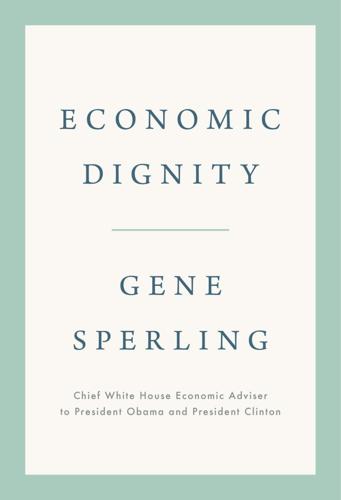
Economic Dignity
by
Gene Sperling
Published 14 Sep 2020
I feel like all the company cares about is getting their products out to the customers as quickly as humanly possible, no matter what that means for us workers in the end.”93 Sociologist Matthew Desmond traces the origins of hyper-microefficient quota-oriented management to the ultimate degradation and treatment of people as only means to an end: slavery and its use in the production of cotton. Prior to the mass movement from farms to factories in the second half of the nineteenth century, the invention of the cotton gin—and its opportunities to benefit from economies of scale—led to the use of a rigid oversight system that took the tracking of enslaved people’s every movement and the accounting of each daily workload to a greater extreme than before. In a piece for the New York Times Magazine’s 1619 Project, Desmond writes, “Like today’s titans of industry, planters understood that their profits climbed when they extracted maximum effort out of each worker.
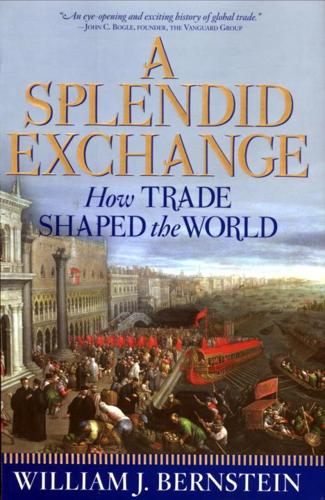
A Splendid Exchange: How Trade Shaped the World
by
William J. Bernstein
Published 5 May 2009
At the time of the first census in 1790, the young republic contained roughly seven hundred thousand slaves (about one-sixth of the total population), most of whom lived in the South. But owing to an agricultural depression, the South at that time actually exported more slaves than it imported. In 1794, this situation changed when Eli Whitney invented the cotton gin-a crude nail-and-cylinder device that efficiently separated fiber from seed. This machine converted the South's huge arable basin into England's cotton farm, just a few weeks' sailing time away from Bristol and Liverpool (versus six months around the African cape from India). By 1820, American cotton exports, primarily to England, would grow to two hundred million pounds annually, and by the eve of the Civil War that number would swell to two billion pounds.59 England, indignant over the Confederacy's aggressive defense of slavery and disdainful of the Scotch-Irish rabble who settled the South, should by rights have sided with the Union.

Scale: The Universal Laws of Growth, Innovation, Sustainability, and the Pace of Life in Organisms, Cities, Economies, and Companies
by
Geoffrey West
Published 15 May 2017
They rightly point out that it has been our extraordinary inventiveness and openness to change and innovation, driven in large part by a free market economy that has continued to fuel exponential growth and increase standards of living. The original argument of Malthus was wrong because of the unforeseen technological advances in agriculture stimulated by the spirit and discoveries of the Enlightenment and the Industrial Revolution. These led to inventions such as the thresher, the binder, the cotton gin, the steam tractor, and the wrought iron plow with steel cutting edges, as well as advances in crop rotation and the increasing use of commercially produced fertilizer. These contributed enormously to the greater efficiency of production by increasing yields and mechanizing processes that for the previous ten thousand years had primarily been done by hand.

Dawn of the Code War: America's Battle Against Russia, China, and the Rising Global Cyber Threat
by
John P. Carlin
and
Garrett M. Graff
Published 15 Oct 2018
What about the long-term price of China building up its own economy on the shoulders and backs of American innovation? What about the ultimate cost in lives of American servicemen and -women if we find ourselves in a military conflict and have our own stolen technologies used against us? Ever since the industrial revolution and Eli Whitney’s invention of the cotton gin, the US economy has thrived because we innovate faster—and better—than any country on earth. Over the last two decades, though, we’ve seen that lead, our nation’s core spirit, threatened and undermined by foreign powers stealing digitally that which they would never dare to steal in real life. It’s paramount to America’s economy that we ensure that countries around the world compete on an even playing field—that countries are competing based on their innovation, not benefiting by robbing others.

Peggy Seeger
by
Jean R. Freedman
Elias Bouquillon, then a Northeastern music major, recalls, “People wanted to have their own perfectly unique and isolated, in-a-vacuum, aesthetically-better-than-all-else kind of vibe, and she [Peggy] would always kind of shed that off and say, ‘Start with where you are and move forward and just do something.'”8 By showing that tradition and innovation are inextricably intertwined, Peggy gave her students a foundation for their own creativity and ideas. Elias recalls writing a song based on Ewan's “Dirty Old Town.” At first, Elias's song seemed highly derivative, but the more he worked on it, the more it became his own. By the time he recorded it with his band, Eli Whitney Houston & the Cotton Gin and Tonics, the song was very different from “Dirty Old Town,” yet the band members felt a sense of familiarity with it. Elias remarks: As a songwriter, that's the ideal—to make somebody think they've heard the song before when they've never heard it before in their lives…. It was a wonderful experience to see how first you take one step away from the original, and then let time pass and let your memory do its thing and then it's two steps away, and without telling anybody where you came from, you're now taking three, four, five steps away from that original….

Firepower: How Weapons Shaped Warfare
by
Paul Lockhart
Published 15 Mar 2021
Smaller parts would still have to be hand-fitted, and screws were rarely made to a standard pitch and thread—you could not, in other words, replace a breech-tang screw on one maker’s musket with a screw made by a different contractor, even if the two muskets were technically of the same model. Eli Whitney, the American who invented the cotton gin, is often credited with the concept of true interchangeability of parts, but even that is not exactly true. Whitney’s many contract firearms—he manufactured several varieties of martial muskets and rifles for the US government—were interchangeable with each other; that is, a part from a Whitney-made musket was certain to fit another Whitney-made musket.

Slouching Towards Utopia: An Economic History of the Twentieth Century
by
J. Bradford Delong
Published 6 Apr 2020
American manufacturers paid their workers—even their unskilled workers—much better than did the British. And American manufacturers seemed to run the process of production relying on machines and organizations rather than on workers’ brains and hands. This “American system of manufactures” was the brainchild of Eli Whitney, an inventor-promotor famous for inventing the cotton gin, which made American short-staple cotton practical as an input for textile spinning. Truth be told, Eli Whitney was one-quarter inventor, one-quarter salesman, one-quarter maniac, and one-quarter fraud. The idea born of this combination was that American manufacturers could make the pieces of their goods to better, tighter specifications in order to make parts interchangeable—the barrel of one firearm would fit the trigger mechanism of another.

Flight of the WASP
by
Michael Gross
* * * Twenty-two years later, the German sociologist Max Weber would publish his epochal work The Protestant Ethic and the Spirit of Capitalism, connecting “the spirit of modern economic life with the rational ethics of ascetic Protestantism.”74 Weber argued that the Protestant outlook was conducive to the development of worldly “business acumen,” and that the fierce religiosity of preachers and settlers alike brought the spirit of capitalism and a “hard frugality” to the American colonies of New England, which proved to be fertile ground for the cultivation of “ruthless acquisition.”75 Doing business had become a quasi-religious calling for American WASPs, a duty and, to Weber, “the essence of moral conduct.”76 But in the quarter millennium since the founding of Plymouth, something had changed: “the religious roots died out slowly, giving way to utilitarian worldliness,” with “the security of possession, the enjoyment of wealth … and the temptations of the flesh” eclipsing “the pursuit of a righteous life” and becoming the new WASP ethic.77 William Collins Whitney became its personification. Over the years, the sprawling Whitney clan would produce many notable Americans. Eli Whitney was the inventor of the cotton gin, the device that made slavery even more vital and profitable in the American South before the Civil War. Amos Whitney co-founded the machine-maker Pratt & Whitney. Mt. Whitney in California was named for Josiah Whitney, a geologist. Mary Watson Whitney was an astronomer and the head of the Vassar College Observatory.

Unreal Estate: Money, Ambition, and the Lust for Land in Los Angeles
by
Michael Gross
Published 1 Nov 2011
They compared themselves to the Medicis, subsidizing artists, and the Mint to Louis Comfort Tiffany’s nineteenth-century decorative arts studio.40 The Franklin Mint was nothing, though, compared to the Resnicks’ next big investment. In 1986, their holding company, Roll International, bought twelve thousand acres of pistachio and almond orchards from Mobil Oil, named them Paramount Farming, and the next year, added seventy-seven thousand acres of farm and grazing land plus wine production and storage, almond hulling, and cotton ginning facilities from Texaco, getting it all for a bargain price due to a drought that hit California’s agribusiness hard. Some of it had once been Belridge Oil property, owned by Max Whittier and Burton Green. That was the year Dolly Green’s steep decline began, but she likely would have been amused by the news that the new owners of one of her old houses had also acquired some of the land that paid for them all.

Look Homeward, Angel
by
Thomas Wolfe
Published 9 Oct 2006
He remembered chiefly the brown stains of the recent flood, which had flowed through the town and inundated its lower floors, the broad main street, the odorous and gleaming drugstore, scented to him with all the spices of his fancy, the hills and fields of Aiken, in South Carolina, where he sought vainly for John D. Rockefeller, a legendary prince who, he heard, went there for sport, marvelling that two States could join imperceptibly, without visible markings, and the cotton gin where he saw the great press mash the huge raw bales cleanly into tight bundles half their former size. Once, some children on the street had taunted him because of his long hair, and he had fallen into a cursing fury; once, in a rage at some quarrel with his sister, he set off on a world adventure, walking furiously for hours down a country road by the river and cotton fields, captured finally by Gant who sought for him in a hired rig.
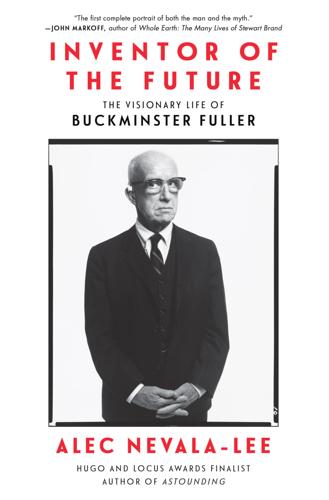
Inventor of the Future: The Visionary Life of Buckminster Fuller
by
Alec Nevala-Lee
Published 1 Aug 2022
In response, Fuller said flatly, “Peter, I am so tired of being known as the dome man.” To address his objections, Chermayeff pitched a variation on Fuller’s trademark design: “Let’s do a big dome, a three-quarter sphere, a bubble that would appear to be rising from the ground and give us a great interior space, like the dome you proposed for a cotton gin.” Opening a copy of The Dymaxion World, Chermayeff turned to an image of the geodesic cotton mill. It was enough to overcome Fuller’s resistance to the concept, which the team effectively adopted by January 1965. Despite this breakthrough, the group debated the details well into the following year.

Political Order and Political Decay: From the Industrial Revolution to the Globalization of Democracy
by
Francis Fukuyama
Published 29 Sep 2014
But many people at the time believed that it was a dying institution. While George Washington and Thomas Jefferson owned slaves, the economics of growing crops like tobacco and wheat with servile labor was not especially favorable. All of this changed dramatically with the spread of cotton in the American South, facilitated by the invention of the cotton gin and the enormous increases in demand for raw cotton coming from Britain’s emerging textile industry at the beginning of the nineteenth century. Cotton, like sugar, benefited from economies of scale on large plantations, and strongly revived demand for servile labor. Unlike in the Caribbean and Brazil, slave populations reproduced well in the continental United States, so even after the end of the slave trade in 1807 there was a growing population of servile labor that increasingly constituted a major source of the region’s capital.
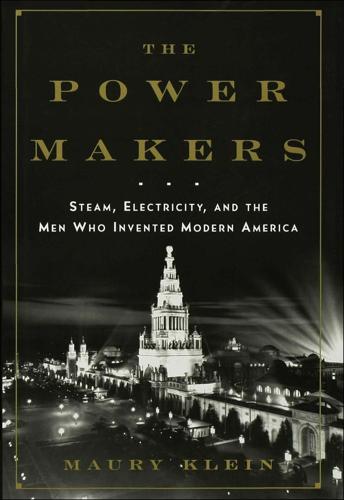
The Power Makers
by
Maury Klein
Published 26 May 2008
Most of the 585 engines in the South did service in plantation mills, grinding sugar, ginning cotton, threshing wheat, and threshing or pounding rice. Once in place, plantation engines often took on other tasks such as driving gristmills, sawmills, straw cutters, corn mills, and cob crushers. The early cotton gins, operated by hand crank or foot pedal, enabled a worker to clean about 40 pounds of cotton a day. With a steam-powered gin three men could clean anywhere from 1,000 to 4,500 pounds a day. The 1838 survey noted that slaves operated most of these southern engines.37 As the Midwest began filling up with settlers eager to grow grain on ever larger farms, inventors like Cyrus McCormick and Obed Hussey eased their labors by creating mechanical reapers and mowers.

Western USA
by
Lonely Planet
The work was grueling and dangerous, and with few doctors, injuries often proved lethal. WESTWARD, HO! Chinatown (1974) is the fictionalized yet surprisingly accurate account of the brutal water wars that were waged to build both Los Angeles and San Francisco. As the 19th century dawned on the young nation, optimism was the mood of the day. With the invention of the cotton gin in 1793 – followed by threshers, reapers, mowers and later combines – agriculture was industrialized, and US commerce surged. The 1803 Louisiana Purchase doubled US territory, and expansion west of the Appalachian Mountains began in earnest. Exploiting the West’s vast resources became a patriotic duty in the 1840s – a key aspect of America’s belief in its Manifest Destiny.

Why the West Rules--For Now: The Patterns of History, and What They Reveal About the Future
by
Ian Morris
Published 11 Oct 2010
Instead Americans, eager for British cash, turned millions of acres into cotton plantations and put hundreds of thousands of slaves to work on them. Production soared from 3,000 bales in 1790 to 178,000 in 1810 and 4.5 million in 1860. British innovations in spinning stimulated American innovations on the plantations, such as Eli Whitney’s cotton gin (short for engine), which separated cotton fibers from sticky seeds even more cheaply than slaves’ fingers. The American supply of cotton rose to meet British demand, keeping prices low, enriching mill and plantation owners, and creating vast new armies of labor on both sides of the Atlantic. Back in Britain, technology jumped from industry to industry, stimulating yet more technology.

The Rise and Fall of American Growth: The U.S. Standard of Living Since the Civil War (The Princeton Economic History of the Western World)
by
Robert J. Gordon
Published 12 Jan 2016
The festivity … “was free from the atmosphere of warlike energy and the suggestions of suffering, danger, and death which threw their oppressive shadow over the celebrations of our victories during the war for the Union.”9 The joining together of the nation through a transcontinental railroad and instantaneous telegraphic communication together symbolize how much the American standard of living had improved by 1870. After millennia in which the life of rural farmers remained little changed since the days of ancient Rome, the First Industrial Revolution had begun to spread its bounty in many directions before 1870, particularly in the form of steam engines, cotton gins, railroads, steamships, telegraphic communications, and rudimentary agricultural machinery that greatly eased the burden of human labor on the farm. If the beginning of the First Industrial Revolution dates to 1750, the pace of its improvement in living standards was relatively slow, as documented in numerous histories, including that of Joel Mokyr.10 The year 1870 is chosen for the starting date of this book not just because a wide variety of economic data are available only back to 1870, but also because the pace of advance picked up markedly in the three decades after 1870.

New York
by
Edward Rutherfurd
Published 10 Nov 2009
Frank reckoned he knew why his father had brought him. Of course, he was the only boy in the family, but it wasn’t only that. He liked to know how things worked. At home, he enjoyed it when his father took him onto the steamboats and let him inspect their furnaces and the pistons. “It’s the same principle as the big steam-powered cotton gins they have in England,” Weston had explained. “The plantations we finance in the South mostly produce raw cotton, which we ship across the ocean to those gins.” Sometimes Frank would go down to the waterside to watch the men packing the cargoes of ice, so that it would stay frozen all the way down to the kitchens of the big houses in tropical Martinique.

Parks Directory of the United States
by
Darren L. Smith
and
Kay Gill
Published 1 Jan 2004
Facilities: 112 tent/trailer/RV campsites, pioneer campground, 5 picnic shelters, screened group shelter, trails (4 miles), swimming pool, 650-acre lake, 2 boat ramps, docks, canoe and fishing boat rentals, miniature golf course. Activities: Camping, boating, canoeing, fishing, swimming (pool only), hiking. Special Features: In the early 1800s, this site was a prosperous industrial town with several stores, a grist mill, cotton gin, blacksmith shop, shoe factory, and hotel, but High Falls became a ghost town in the 1880s when a major railroad bypassed it. Today, park visitors can enjoy the scenic waterfall on the Towaliga River and hike to the remaining grist mill foundation. ★2080★ JARRELL PLANTATION STATE HISTORIC SITE 711 Jarrell Plantation Rd Juliette, GA 31046 Web: gastateparks.org/info/jarrell Phone: 478-986-5172 Size: 233 acres.
…
Special Features: This cotton plantation was owned by the Jarrell family for more than 140 years. In 1847 John Fitz Jarrell built the simple heart pine house typical of most plantations and made many of the furnishings visitors see today. John’s son later diversified the farm, adding a sawmill, cotton gin, gristmill, shingle mill, planer, sugar cane press, syrup evaporator, workshop, barn, and outbuildings. ★2081★ JEFFERSON DAVIS MEMORIAL STATE HISTORIC SITE 338 Jeff Davis Park Rd Fitzgerald, GA 31750 Web: gastateparks.org/info/jeffd Phone: 229-831-2335 Size: 13 acres. Location: Off GA Highway 32 in Irwinville.

Frommer's Caribbean 2010
by
Christina Paulette Colón
,
Alexis Lipsitz Flippin
,
Darwin Porter
,
Danforth Prince
and
John Marino
Published 2 Jan 1989
Amenities: Restaurant; outdoor pool; Jacuzzi; boating; fishing. In room: A/C (in some), ceiling fan, TV, fridge. The Old Gin House For years the premier resort of Statia, the Old Gin House is a historic landmark. The inn is a faithful reconstruction of an 18th-century building that once housed a cotton gin. The bricks that went into the construction were once used by sailing ships as ballast. Surrounded by tropical gardens, including palms and bougainvillea, the hotel enjo ys a central but tranquil location. All the good-siz e bedr ooms ar e comfortably furnished, with queen-size beds and direct-dial phones.

The Codebreakers: The Comprehensive History of Secret Communication From Ancient Times to the Internet
by
David Kahn
Published 1 Feb 1963
Colonel Decius Wadsworth, then 49, was a Yale graduate who twice quit the Army (once to seek his fortune in the fur trade) and twice rejoined when wars with France and Britain threatened; how and why he became interested in secret writing remains unknown. But his attraction to mechanical devices may well have fostered his friendship with Eli Whitney, whose cotton gin he admired and whose muskets with interchangeable parts he inspected and approved for use by the Army. When, in 1812, he became the first chief of ordnance of the U.S. Army, he again backed Whitney strongly. Illness forced him to resign this post and his commission in June of 1821, and Whitney, remembering, brought him to New Haven.

1,000 Places to See in the United States and Canada Before You Die, Updated Ed.
by
Patricia Schultz
Published 13 May 2007
Rogers’ sweater; the Lone Ranger’s mask; a crumpled piece of the World Trade Center’s exterior sheathing; a group of Thomas Edison’s earliest lightbulbs; the oral histories of 200 Southern farmers; a 1989 Game Boy; George Washington’s surveying compass, camp chest, and tent; Superman comic books; Julia Child’s home kitchen; the nose cone of a pigeon-guided missile; a turn-of-the-century Washington, D.C., streetcar; Evel Knievel’s Harley; the ruby slippers worn by Judy Garland in The Wizard of Oz; 50,000 sound recordings dating back to 1903; a 280-ton steam locomotive; a 1926 Model T Ford; the first iron lung; life jackets from the Titanic; a collection of artificial limbs; the contents of an 1890s drugstore; an original model of Eli Whitney’s cotton gin; Albert Einstein’s pipe; a compass from the Lewis and Clark expedition; an original Jim Henson Kermit the Frog puppet; the bat Stan Musial used to collect his 3,000th hit; Muhammad Ali’s boxing gloves; Duke Ellington’s sheet music; Custer’s buckskin jacket; a display of presidential hair called “Locks of Hair from Distinguished Heads”; and some 150,000 other items, representing only a fraction of the three million in the museum’s total collection … wear comfortable shoes.

The Rough Guide to Australia (Travel Guide eBook)
by
Rough Guides
Published 14 Oct 2023
The most striking geological feature of the park is Sawn Rocks, a basalt formation that looks like a series of organ pipes; it’s reached via the northern end of the park on the unsealed road heading to Bingara. Wee Waa The town of WEE WAA, roughly 40km west of Narrabri, was where the Namoi cotton industry began in the 1960s, and the large cotton “gins” or processing plants are located here. If you can stand the rather raw, dispirited town and the blazing summer heat, you could earn some cash from the abundant cotton-chipping work available here in April and May; ask at one of the two pubs on Rose Street, the main drag, and someone will send you in the right direction.